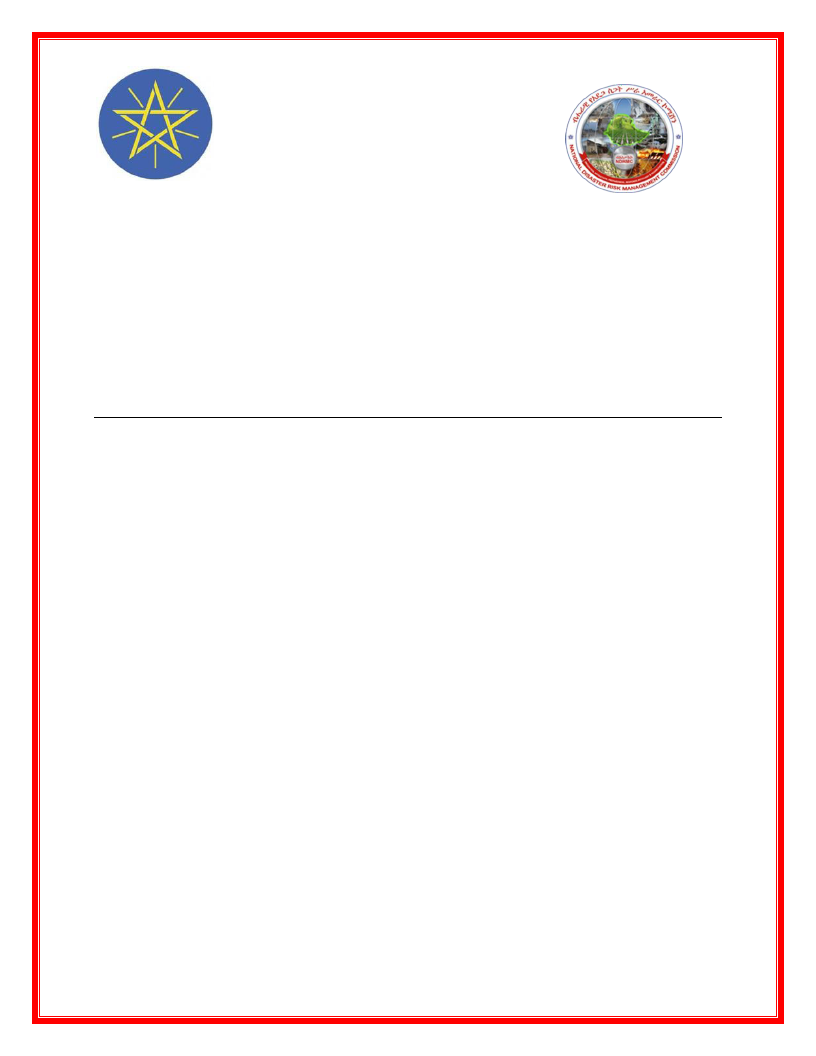
Federal Democratic
Republic of Ethiopia
National Disaster Risk
Management Commission
CONTINGENCY PLAN
REGION: SNNP
ZONE: WOLAITA
WOREDA: DAMOT GALE
JUNE, 2017
ADDIS ABABA

Promulgation document
DAMOT GALE WOREDA ADMINISTRATION
DAMOT GALE CONTINGENCY PLAN PROMULGATION
The primary role of government is to provide for the welfare of its citizens. The welfare and safety of citizens is
never more threatened than during disasters. The goal of emergency management is to ensure that preparedness,
response, and early recovery actions exist so that public welfare and safety is preserved
The Damot gale Contingency Plan provides a comprehensive framework for wide emergency management. It
addresses the roles and responsibilities of government organizations of Damot gale as well as civil society and
humanitarian partners (including community, NGOs, private sectors, volunteers, voluntary organizations and
individuals). It also describes the resources that may be activated to address disasters and emergencies in Damot
gale.
The Damot gale Contingency Plan ensures consistency with Disaster Risk Management policy guidance and describes
the interrelationship with other levels of government (zonal, regional and federal level).
Therefore, in recognition of the emergency management responsibilities of Damot gale, government and with the
authority vested in me as the Woreda Administrator of Damot gale, I hereby promulgate the Damot gale Contingency
Plan.
____________________________________
Damot gale Woreda Administrator or Delegate Person
Damot gale Woreda
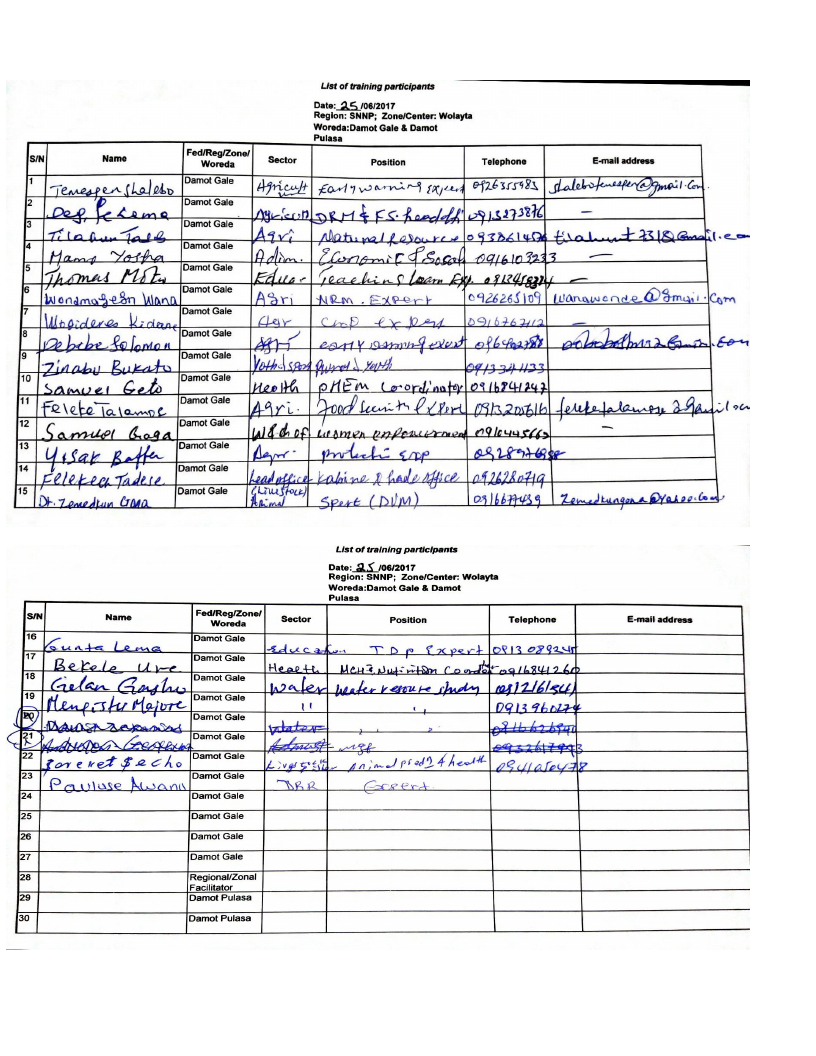
Signature of participants
2

Table of contents
No. Indicator Name
I. Basic Plan
1
Purpose and Scope
2
Emergency Coordination
3
Information and Communication Management
4
Finances and Logistics requirements
5
Monitoring and Updating
6
Legal Basis, minimum humanitarian standards and
references
7
Risk Analysis
7.1 Woreda Disaster Risk Profile
7.2 Hazard Assessment
7.3 Seasonal Calendar
7.4 Vulnerability Assessment
7.5 Coping Mechanisms
7.6 Adaptive Capacity Assessments
II. Contingency Specific Responses
1. Contingency 1-Drought
Scenario
Early Warning Indicators & Triggers
Emergency Support Functions (ESF) activated
Resources required
2. Contingency 2-Crop disease and pest
Scenario
Early Warning Indicators & Triggers
Emergency Support Functions (ESF) activated
Resources required
3. Contingency 3-Livestock disease
Scenario
Early Warning Indicators & Triggers
Emergency Support Functions (ESF) activated
Resources required
III. Emergency Support Function
1.
Description
Page
3

2.
Responsibility Matrix
3.
Checklist of Actions (Preparedness / Response & Early
Recovery)
3.1 Coordination
3.2 Crops
3.3 Livestock
3.4 Health & Nutrition
3.5 WASH (Water, Sanitation and Hygiene)
3.6 Education
3.7 Gender
3.8 Food and Non-Food Items
4
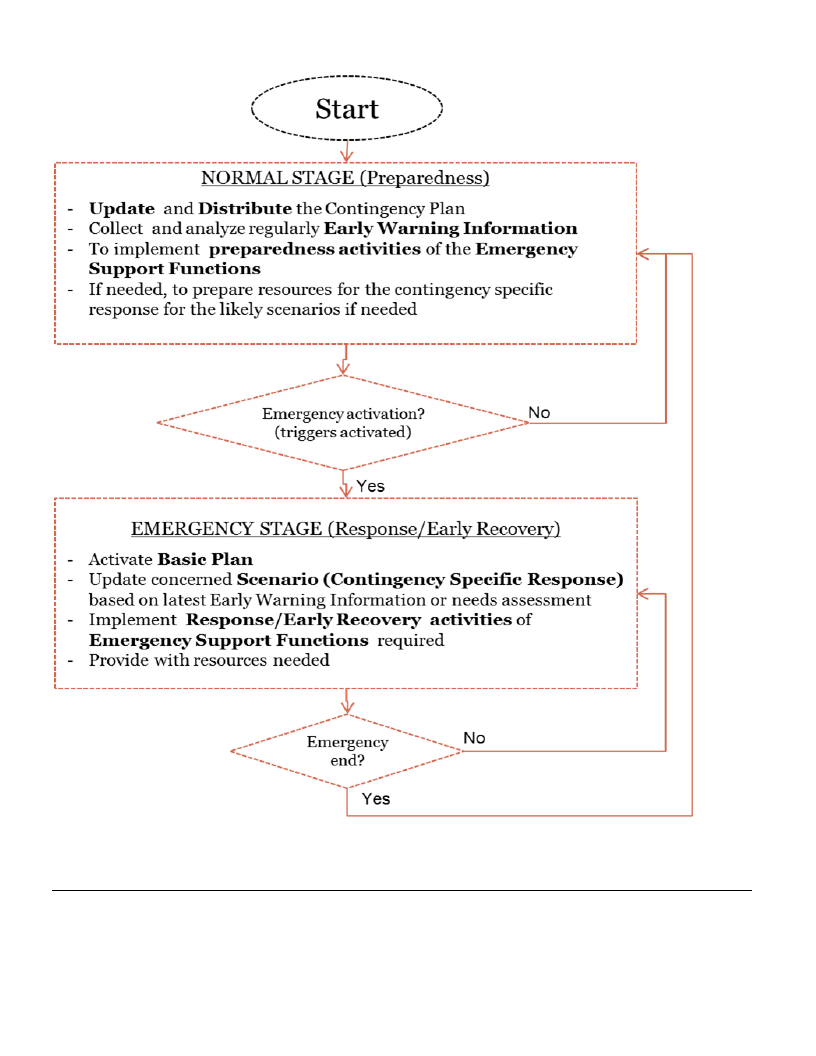
HOW TO USE THE CONTINGENCY PLAN
5
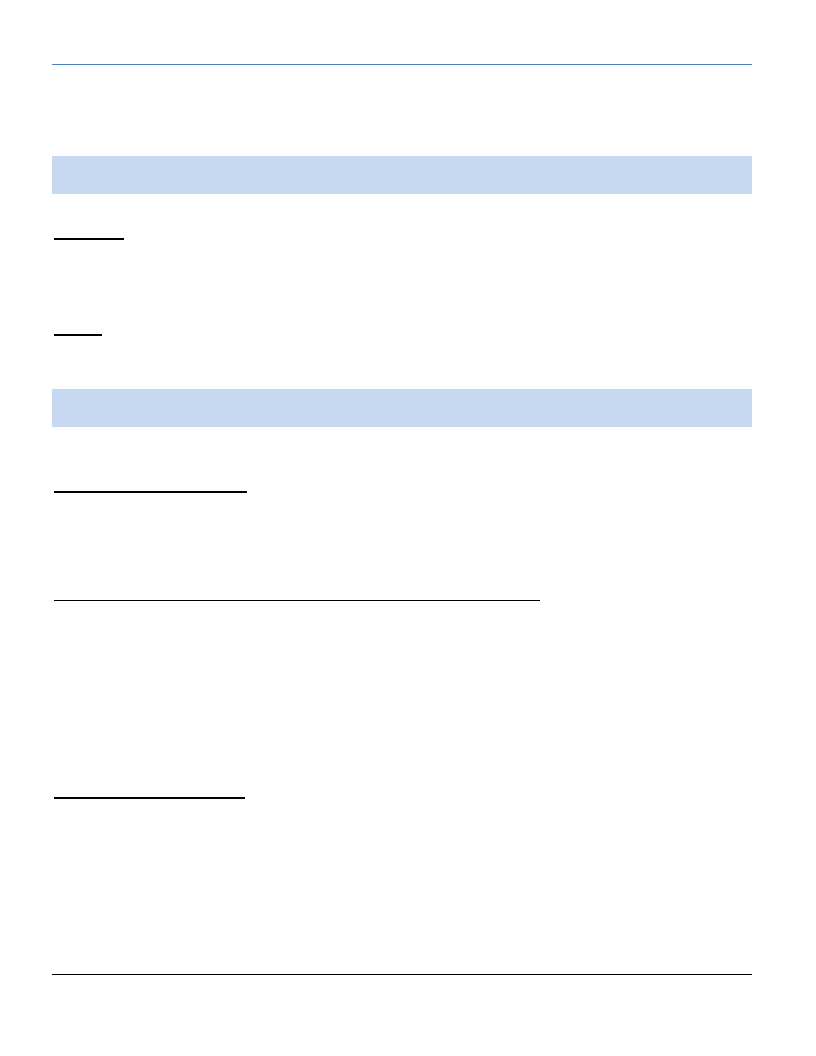
I. BASIC PLAN
The Basic Plan provides the basic information of the Contingency Plan, the context situation/risk analysis and
an overview of the Woreda emergency management. The information contained will be applicable to the
operational response of any contingency and common for every Emergency Support Function.
I. PURPOSE & SCOPE
Purpose
It is the purpose of this Contingency Plan to define the actions and roles necessary to provide a coordinated
response within Damot gale Woreda. This plan provides guidance to the Woreda offices and stakeholders within
Damot gale with a general concept of potential emergency assignments before and during emergency situations.
It also provides with scenarios and preparation of emergency resources in case they need to be activated.
Scope
This plan applies to all participating governmental institutions and stakeholders of the administrative area
contained within the geographical boundary of Damot gale.
II. EMERGENCY COORDINATION
This section provides an overview of the main roles and responsibilities during an emergency and how the
Woreda organization accomplishes an emergency response.
Contingency Plan Activation:
The Woreda Disaster Prevention and Preparedness Committee (according National Policy DRM 1993)/Woreda DRM
Coordination Office (according revised DRM policy 2013), which will respond to the Woreda Administrator, will
activate the contingency plan based on sectorial offices information and Early Warning Information System &
Triggers.
The activation of the Contingency Plan will trigger the Specific Contingency Response and the Basic Plan.
Responsible for overall direction of the Emergency Response Activities:
The main responsible body is the Woreda administration. The main activities being undertaken by the Woreda
administration with regard to emergency response are to coordinate line departments, establish DRM task force
committee at Woreda level, assign duties to the committee and monitor performance, support the committee in
cases requiring administrative resolutions, call meeting of the task force, give direction for documentation and sign
on minutes of meeting, evaluate pre harvest and post-harvest assessment and early warning data together with
Woreda disaster prevention and preparedness office and report to the zonal administration and the ZDPPO on issues
concerning mainly but not limited to crops, livestock, water, health, education and market assessment findings based
on agreed up on indicators working closely with Woreda DPPO in all aspects.
If the disaster exceeds the capacity of the Woreda and any support is required, beneficiaries will be identified and
support will be requested and distributed accordingly.
Declaration at Woreda level:
The assessment of the existing situation will be conducted under the leadership of the Woreda taskforce and the
report will be submitted. Based on this recommendation from the Woreda, the federal team will visit the place of
the disaster. Accordingly the federal DPPC will declare the disaster as provided by the 1993 national DRM policy.
Coordination with other Weredas in the neighborhood depends on the size and nature of the disaster and direction
of community mobility. We exchange information with regard to the disaster under question, incoming or outgoing
population, extent and place of the damage and required supports. But this is very rare and its experience is very
immature. The new National DRM policy 2014 is not yet implemented and we still work with the previous policy of
1993 and guidelines attached with it.
6

Emergency Coordination Mechanisms/Process:
There exists Woreda taskforce established as provided in the National DRM Policy of the 1993. The sector offices
heads are members of the taskforce. Each sector assigns focal person to form technical committee. This technical
committee will conduct screening of target beneficiaries together with community representatives using inclusion
and exclusion criteria supplied in the standard formats. The screened targets will then be displayed for the
community’s verification and comment for final eligibility. It is only then that the household will be registered and
reported as a beneficiary. The report will be presented to the taskforce for decision after which the summary report
will be compiled by the Woreda disaster prevention and preparedness and signed by Woreda administration for
delivery to the zonal administration and zonal DPPO.
The Woreda administration and sector offices including WDPPO and WoFED, conduct meeting and assign focal
persons. This makes command post which will overtake responsibility for every activity with regard to the disaster
response down at the community level and report to the Woreda taskforce. The command post conduct assessments,
identify targets for the relief work, and lead the relief distribution and make a follow up. Then, they report to the
Woreda task force for verification and transfer to the next higher level.
The community level taskforce is composed of DAs, HEWs, School director, representatives of the women & children‘s
and youth associations, kebele manager, and three elders from respective community chaired by kebele Chairman.
The manager of the kebele assumes secretary role. This taskforce has the duty of screening, distributing, and
reporting activities according to the federal DPPC format provided by the WDPPO. There is strong link and
cooperation with the WDPPO who collects early warning data and process the information for weekly and monthly
reporting.
The primary effort of the local administration shall be made in order to support or strengthen communities to deal
with emergencies effectively because kebeles are the first government institutions to respond to hazards at local
levels. Woreda Offices will encourage and provide technical support to communities to establish local self-help,
community support mechanisms or community funds mobilization mechanisms. Beyond the tasks related to
identification of target beneficiaries and support with distribution of relief aids, as explained above, no community
level sources of fund prepared ahead of time or during the disaster response known to exist. Therefore, according
to the national policy of 1993, the Woreda taskforce is the coordinating organ for the emergency support functions
in Damot gale Woreda.
III. INFORMATION AND COMMUNICATION MANAGEMENT
This section describes the required critical or essential information and communication common to all emergency
operations identified during the contingency planning process.
Woreda Disaster Risk Profile
Damot gale has a disaster risk profile where people from the community, kebeles, Woreda staff and
stakeholders have participated in the process of profiling. Every sectorial office and stakeholder in the
Woreda should have the Woreda Disaster Risk Profile. Woreda Disaster Risk profile (WDRP) is available in
the Woreda Administration /the Damot gale Woreda DRMO. Also available in: http://profile.dppc.gov.et/
Early Warning System
7

The DPPO Office collects Early Warning Information from every Woreda sectorial office and send on weekly and
monthly basis.
Also, this Early Warning Information will be analyzed and if any Early Warning Indicator is found to exceed the triggers
established in the scenario of this specific contingency, response of this contingency plan will be activated by the
appropriate Emergency Support Functions.
Needs Assessment
The mechanism used for information collection, analysis and dissemination for the needs assessment at
the beginning of an emergency is government structures at kebele level together with kebele level
emergency response task force. The affected community members are also involved in the data collection
as a source of information. They report the assessment data to the Woreda based on which the technical
committee from Every Sectorial Office shall initiate rapid area assessments, makes preliminary estimates
of affected populations, losses of lives and property, identify priority needs and report the findings. The
Woreda taskforce which is accountable to the Woreda administration uses the data to review the
contingency plan as per prevailing conditions. Based on the findings, requests will be compiled and sent
to the zone. Every Sectorial Office shall initiate rapid area assessments, make preliminary estimates of
affected populations, losses of lives and property, identify priority needs, and review the contingency plan
as per prevailing conditions.
Needs of vulnerable groups (children, individual with disabilities, age or gender issues…)
The emergency needs assessment should collect and analyze disaggregated data information by sex, age
and other indicators of potential vulnerabilities.
Every Emergency Support Function must consider in its response the needs of the most vulnerable groups.
As to Damot gale Woreda children, pregnant and lactating mothers are given priority for supplementary
food on distribution. Disabled persons are also considered in the ration distribution.
Alert and Warning
Awareness creation activities will be conducted in the community with regard to impending disaster will
be given to help the community conserve and save available resources as a preparation phase. Meeting
and manuals are used as tools in the process. Any one assigned from the Woreda to compute this issue is
the responsible body and works closely with the kebele chairman. Messages are transmitted by telephone
and in person. All kebeles are accessible in our case and no information gap exists.
Historical Record of the emergency
Every Sectorial Office [DRM Unit according the draft of new DRM policy] must document the effects from
the impact of any hazard event and also the actions taken during the response to and early recovery
phases. This information will serve to create historical record which, improve future response, recover
costs, address insurance needs, develop mitigation strategies, etc
After-Action Report (AAR)
After the historical record every sectorial office should produce a report called After-Action Report to
summarize the lesson learnt of last disaster, evaluating the contingency plan, identifying the strength and
weakness during the emergency management, and designing initiatives or actions to improve the readiness
for likely disasters. The After-Action Report will be very important in order to update the Woreda
Contingency Plan. The current practice in Damot gale Woreda in this regard is only routine weekly and
8
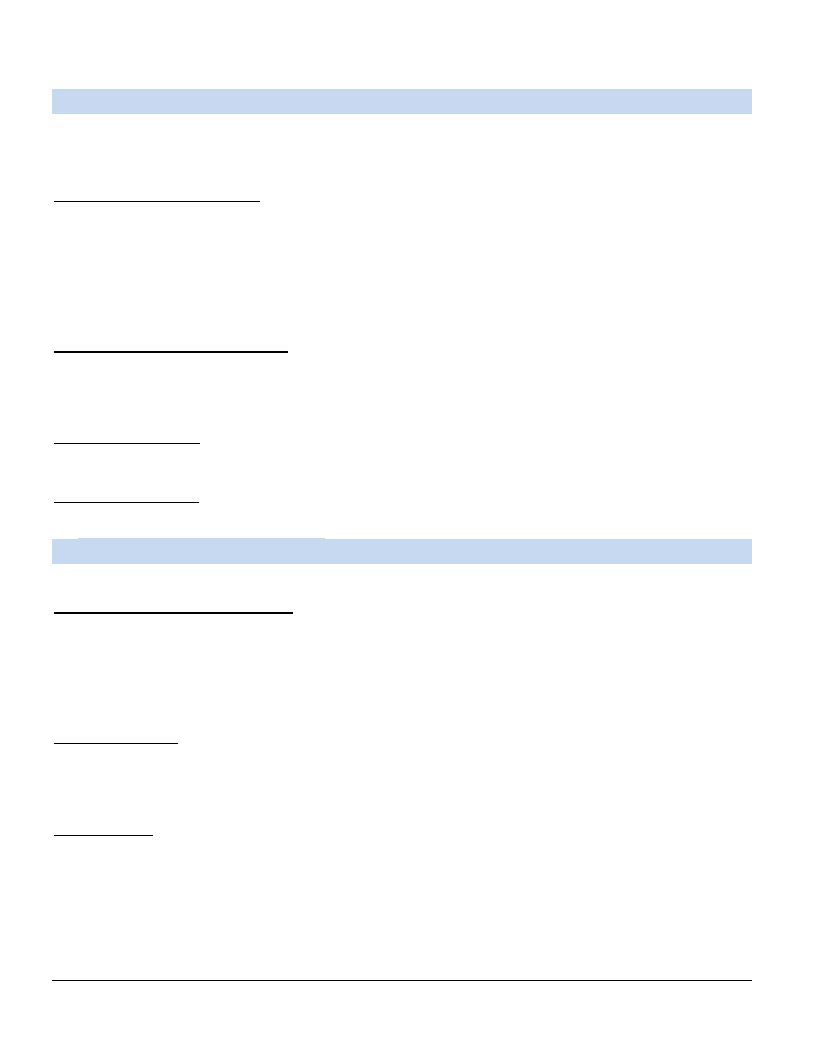
monthly reports and whenever there is distribution of relief support, the activity report will be produced
monthly or quarterly.
IV. FINANCE AND LOGISTICS REQUIREMENTS
This section describes the possible emergency financial sources and the logistics and resource management
mechanisms used to identify and acquire resources in advance of and during emergency operations,
especially to overcome gaps possibly identified in the Woreda capacity.
Contingency budget/reserves:
Damot gale Woreda has no contingency funds allocated specifically for emergency response. In the case
of safety net program, currently the program has 5% contingency budget at Woreda level and the Woreda
can use that much amount of resources from the PSNP and in case if the shock cannot be absorbed within
that limit then they can also ask the region for the release of 15% contingency budget which will be kept
at regional level. More over if things get worse there is also risk financing program in which the region will
kept budget for it
Resources Identification methods:
Required resources are identified by the technical committee and verified by Woreda command post. This
then be directed to the Woreda DPPO and technical committee to prepare the request. The organized
request will then be signed by Woreda administration head or delegate and submitted to next higher level.
Resources allocation:
Sectorial Offices [DRM Unit according the draft of new DRM policy] shall ensure the rapid supply of relief
materials to affected areas.
Resources Inventory:
Emergency support functions have a resource inventory but not enough.
V. MONITORING AND UPDATING
This section describes the process used to monitor and update the Contingency Plan
Monitor and Follow-up Mechanism:
Every Emergency Support Function should implement preparedness activities identified and analyze Early
Warning Information. When triggers are reached, ESF response activities and emergency coordination
mechanisms must be implemented.
[According National Policy DPM 1993] The Woreda DRM Committee is monitoring all activities related to
the relief needs and responses in the Woreda.
Exercise the plan:
As indicated in the 1993 national DRM policy, , the WDRMO office, in coordination with the sectorial
offices, should exercise the contingency plan before any hazard event can happen through simulation or
table top exercises, considering the annual seasonal calendar and the possible scenarios.
Plan updating:
Every sector is responsible of the updating of their responsibilities and information and the DPPO office is
in charge of collect, organize and update those changes in the contingency plan. After every update, the
updated plan will be distributed to every actor involved.
The Plans need to be updated on a regular basis to reflect changing circumstances, based on:
•
Early Warning Information
9

•
Simulation Exercises
•
Actual Responses (Based on Historical emergency record and the After-action report)
VI. LEGAL BASIS, MINIMUM HUMANITARIAN STANDARDS AND REFERENCES
This section provides the legal basis and the minimum standards of humanitarian response for emergency
response in Ethiopia. Also it includes the reference of the guidelines and materials used to build this
contingency plan.
Emergency Policy/Authority:
National policy on Disaster Prevention on Disaster Prevention and Management, 1993
Article 93 of the Constitution of Ethiopia (Declaration of State of Emergency)
New revised DRM Policy, 2013
Minimum standards of humanitarian response:
Every Emergency Support Function will indicate the specific Sectorial Emergency Guidelines and protocols
used in Ethiopia, where minimum standards of emergency response are established.
References:
The reference manual used to develop this plan is: ‘Woreda Contingency Planning Guidelines’, NDRMC
10
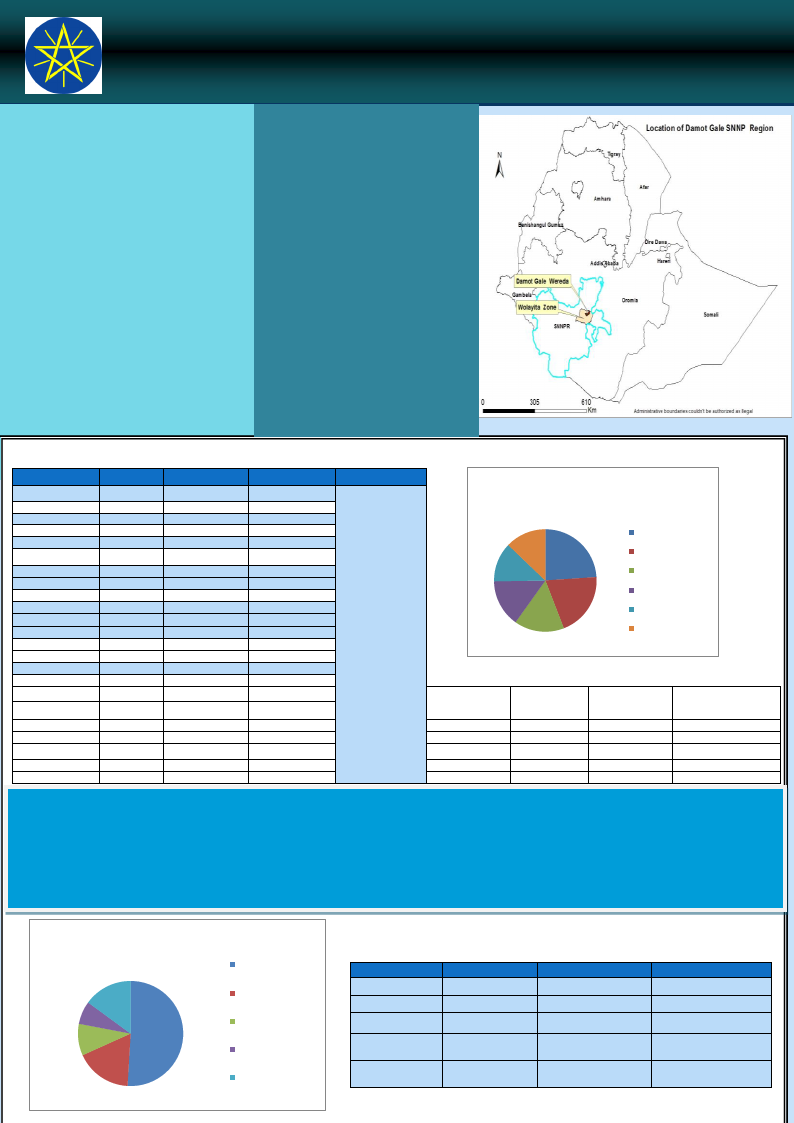
Wereda Disaster Risk Profiling Programme: SNNPR
Disaster Risk Profile: Damot Gale Wereda
SUMMARY OF WEREDA PROFILE
Wolayita Maize and Root Crop Livelihood Zone
Population pressure in this zone has led to very small
Crop disease/pest
disasters risks in
aPtnrhodepoddrrwtiosiooausrngteheodtrfahsauorfuffeeoserlltehohdowelldeamssdtbafyijvboteyyrpyeeaorfblpsaoemntsdwsahibeojelolydnrinttwhgeso,
but maximum
most varied
growing cycles
use is made of what there is, with
cropping in all Ethiopia, spread
per year. But rain failure as well as
livestock disease, flash flood and human disease pests frequently push part of the population over the hunger
which affect the households.
threshold and onto relief food aid. In ordinary production
Croyepards,isheouasseehsolds with at least half a hectare of land will be
Environmental problems such as deforestation,
nearly or actually self-sufficient in staple food. The main food
crops are maize and beans intercropped, and sweet potatoes
soil erosion, crop pest a1n3d%animal disease, lack
of irrigation, population press2u4r%e, lack of
in two harvests, whilst enset is generally small in volume but
Driomupogrhtatnt as a backstop in the lean months of February to
May. With scarce grazing, livestock must be largely hand-fed
adequate soil and12w%ater conservation, weak with crop residues and fodder bought on the market. The
capacity of the community, high illiteracy level,
and poor prepared1n5e%ss measures2, 0a%re among
Livbeigsgteosct kinvestment is in cattle. Cattle owners commonly
disscetoonactksr,aercsetwpaorodreedr
households to keep and
by a share in the sales.
fatten
some
of
their
the major vulnerability factors in the wereda.
FloWoodlayita Barley and Wheat Livelihood Zone
Using improved agric1u6lt%ural technology,
This mountainous zone hosts a dense population. The poorer
half of the population is food insecure in most years, and
provision of improved crop seed based on agro
ecology, sowing early mature crops natural
Hubrmeecceaaiuvnesesdfoiosfoetdhaeasidech.srTohnisicispnreostssuoremounchlabnedcawuhsiechofrerasiunltfsaiinlurbeoaths
small landholdings and difficulties in finding grazing and fodder
resource conservation, planting drought
resistant crop varieties improving development
for oxen, so that at least half of all households have no oxen
and must either cultivate by hand-hoe or hire oxen in return
for labour on the owner’s plot. The main food crops are backed
activities, constructing health centre and
veterinary services and improving
up by enset, which helps breach lean periods of the year. Even
better-off households have only about a hectare of arable land,
and they are unable to grow all their requirements of staple
infrastructures like road and electricity are some
of the suggestion intervention in the woreda.
food; poorer households normally produce about half of their
requirement. Poor households depend for much of their cash
income on seasonal labouring locally or beyond the zone.
MAJOR DISASTERS REPORTED IN WEREDA
Kebele
OBE JAGE
ADE DAMOT
ADE KOYSHA
ADE OFA
DE SIBAYE
ADE ARO
AKA BILO
ARO WEGERA
BALA KOYSHA
BUGE
DAMOT BOLOSO
DAMOT MOKONISA
DAMOT OFA
GACHENO
HARETO BURKITO
HARETO KONTOLA
KONASA PULASA
MEKONISA WEYGE
SHAKISO SHONE
SHASHA GALE
TABA
WASHI GALE
WEGERA
Disaster 1
Drought
Drought
Drought
Drought
Drought
Drought
Soil Erosion
Drought
Drought
Drought
Drought
Drought
Drought
Drought
Drought
Drought
Soil erosion
Drought
Drought
Soil Erosion
Drought
Soil Erosion
Drought
Disaster 2
Soil Erosion
Crop Disease/pest
Human disease
Human disease
Crop disease/pest
Crop disease/pest
Drought
Crop disease/pest
Human disease
Crop disease/pest
Soil Erosion
Soil Erosion
Soil Erosion
Crop disease/pest
Crop disease/pest
Soil Erosion
Land slide
Soil Erosion
Crop disease/pest
Drought
Snow
Human disease
Soil Erosion
Disaster 3
Crop disease/pest
Livestock disease
Crop disease
Livestock disease
Livestock disease
Livestock disease
Soil Erosion
Crop disease/pest
Soil Erosion
Crop disease/pest
Livestock disease
Livestock disease
Livestock disease
Livestock disease
Crop disease/pest
Human disease
Human disease
Soil Erosion
Livestock disease
Human disease
Livestock diseases
Crop disease/pest
LIU Info
Chronic Hazards:
Chronic shortage of
rain and drought,
Crop pests,
An increase in
staple food prices,
Malaria
And
Livestock disease.
Proportion of households by type of major
disaster suffered last five years
13%
24%
12%
15%
20%
16%
Crop diseases
Drought
Livestock diseases
Flood
Human diseases
Others
Kebele
WENDERA BOLOSO
WENDERA GALE
ZEGER
ZAMINE SIBAYE
Disaster 1
Drought
Drought
Drought
Drought
Disaster 2
Soil Erosion
Soil Erosion
Soil Erosion
Crop Disease/pest
Disaster 3
Crop disease/pest
Livestock diseases
Human disease
Livestock diseases
SHORT NARRATIVE ON MAJOR DISASTERS:
Crop pest and disease is the major disaster caused by erratic rain fall and climate change which affect crop production and productivity in the area. Drought is the other major disaster
caused by deforestation, high population density, climate change, high temperature and dalliance and irregular rain fall pattern results in crop damage, illness, hunger, shortage of
pasture and feeds, loss of livestock weight, prevalence of disease, school dropout, yield reduction, loss of income and assets in the area. Besides livestock disease such as
Trypanosomiasis, Black leg, Foot and mouth disease and Anthrax affecting cattle are also a major disease which are caused by drought, lack of pasture and water and climate change
which results in death, poor body condition and loss of assets. Flooding which is also caused by lack of water shed management and irregular rain fall which results in damaged crops,
damaged livestock, physical properties and prevalence of disease in the wereda. Human disease such as malaria, chronic fever and head ache are also the major disaster caused by
erratic rain fall, sanitation problem and constraints to adequate health care which results in illness and death of household members, high cost for treatment and economic crises in the
community.
Proportion of households by major disaster losses
suffered
14.90
Crop damage
7.07
9.73
50.88
17.28
Ill ness/health
problems
Livestock
dam ag e
Loss of incom e
Others
Disasters
Crop disease
Drought
Livestock disease
Flood
Human disease
EFFECT OF DISASTERS
Loss 1
Crop damage
Loss 2
Loss of income
Crop damage
Loss of income
Livestock damage
Illness/health problems
Crop damage
Illness/health
problems
Physical damages on
houses and property
Loss of access to social
services, including school
Loss 3
Loss of saving
Lost access to water source
Loss of income
Other losses/damages
Loss of income
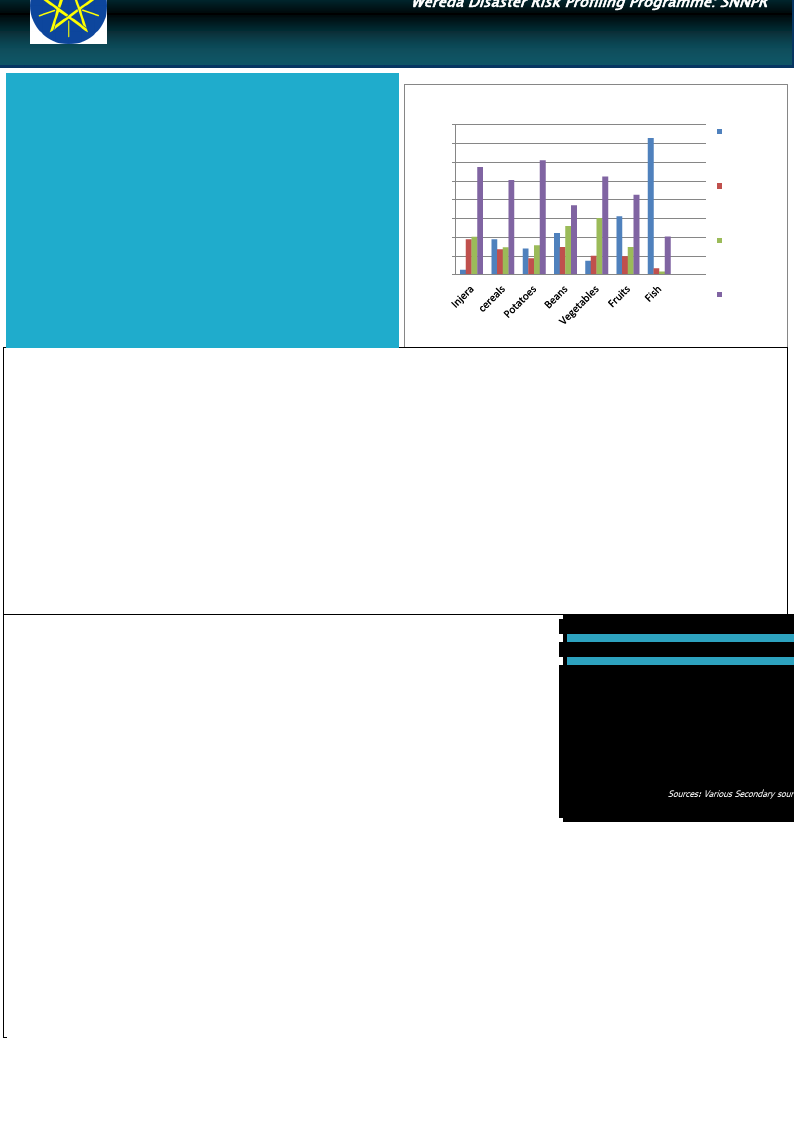
Wereda Disaster Risk Profiling Programme: SNNPR
Disaster Risk Profile: Damot Gale wereda
HOUSEHOLD AND COMMUNITY
VULNERABILITY
VULNERABILITY
The livelihood of the community is highly dependent on crop
Household source for major food items
production. The main source of their livelihood is selling Cereal food
crops (95%). The household’s source for different foods is mainly from
others sources and purchase from road side vendor/tuck shop. This
shows that they are not self-sufficient in their food consumption from
own production.
Deforestation, soil erosion, decrease of land quality due to population
pressure, air pollution, over cultivation, over grazing and extent of
80.00
70.00
60.00
50.00
40.00
30.00
Own
cultivation/pr
oduction
Purchases
from main
shop
drought, lack of natural resource conservation, destruction of natural
forest, lack of shifting cultivation expansion of agricultural land,
different environmental problems, and water pollution are among the
factors which make the community vulnerable to disaster
Lack of infrastructure such as electricity and road, lack of family
20.00
10.00
0.00
Purchase from
roadside
vendor/tuck
shop
Other
planning and lack of sanitation are among the weakness of the
community which makes them vulnerable.
Accessibility:
Access to road and urban center: 55% of the households reported either there is no road or dirty road that is difficult for car. The average time taken
to reach the nearest paved road in the woreda is 30 minutes and the average time to reach the nearest urban canter is 1 hours and 2minutes.
Accesses to electricity: Of the household surveyed 13% are located in the community with electricity and half of the community located with
electricity 5% are actually connected to electric power.
Access to veterinary facility: 65% and 64% of the households reported poor and very poor access to veterinary service and livestock drugs
respectively.
Access to market: is generally reported to be good in almost all kebeles.
Access to water and sanitation: Most of the households (97%) use water for drinking from communal tap (bono) and river and stream, where 87% of
them use other methods for treating water. Out of the surveyed households 96% of them have outdoors latrine/hole on plot, 2% have no toilet
facilities in the house and 1% of them are sharing toilets.
Access to credit: ‐ 75% of the surveyed households reported using credit service mainly from bank or formal lending institute and from
friends/relatives mainly to buy food (55%), to buy agricultural input (18%), and pay for health care (10%).
Access to agricultural inputs: access to fertilizer and pesticides is good 81% and 87% of households reported using both chemical and natural fertilizer
and pesticides respectively. Also access to extension services is good; where 97% of the households reported obtaining the service and 98% of them
also have access to improved seed.
Level of Awareness and Institutional Development
Literacy level The proportion of literate population above 7 years old is 23.16% out of which 30%
completed below 1st grade level, 44% and 23% of the population completed primary and secondary school
respectively. With regard to gender parity in education, proportion of female students is higher than male
students in completing 1st grade level, but dominated by male students in all other education levels. Of the
total households surveyed, 13.30% of them are female-headed households.
Community awareness about disaster risk management system and actors Is generally reported to
be less effective due to budget constraint and insufficient supply of agricultural inputs. There are
Formal community based organizations such as Omo micro finance and RUSACO helping the community
To have access to credit and save money, informal organization equb and edir help them to save money
And help each other during bad situation.
Info Bits:
Population
Sex ratio
Urban Population
Mean Altitu
Mean Slope
Road density
Measles caseload
: 154,610 (2007)
: 1,034.85 F/1000 M
:27,684(2007)
: 1937.79 m
: 2.48%
:67.92
:16 (2004-2009)
Sources: Various Secondary sourc
COMMUNITY CAPACITY TO COPE
Major coping mechanisms are: sell more livestock than usual, consumption rather than sale of crop surplus and Limit portion size of meals.
In the events of more resource available 56% of the households adopted economic activities to hazards season (e.g. cropping cycle, short term
crops, etc.) And 43% Storage of food and other necessities.
In the wereda it is reported that 56.46% of the household have managed to recover from losses of disasters affected.
During disaster 77% of the households are able to raise Birr 500.00 in one week through borrowing money, savings, by selling asset or livestock
and perhaps but doubt.
The social capital in the wereda is cooperation among the community in the wereda but in most of the kebeles this habit is
decreasing from time to time due to economic hard ship.
Crop and Livestock diversity: The most commonly grown crops in the woreda are sorghum, maize, barley, wheat, teff, haricot bean, peas and
potato. The major types of livestock reared in the wereda are cattle, shoats, equines, donkey (for transporting goods) and poultry for food and
income.
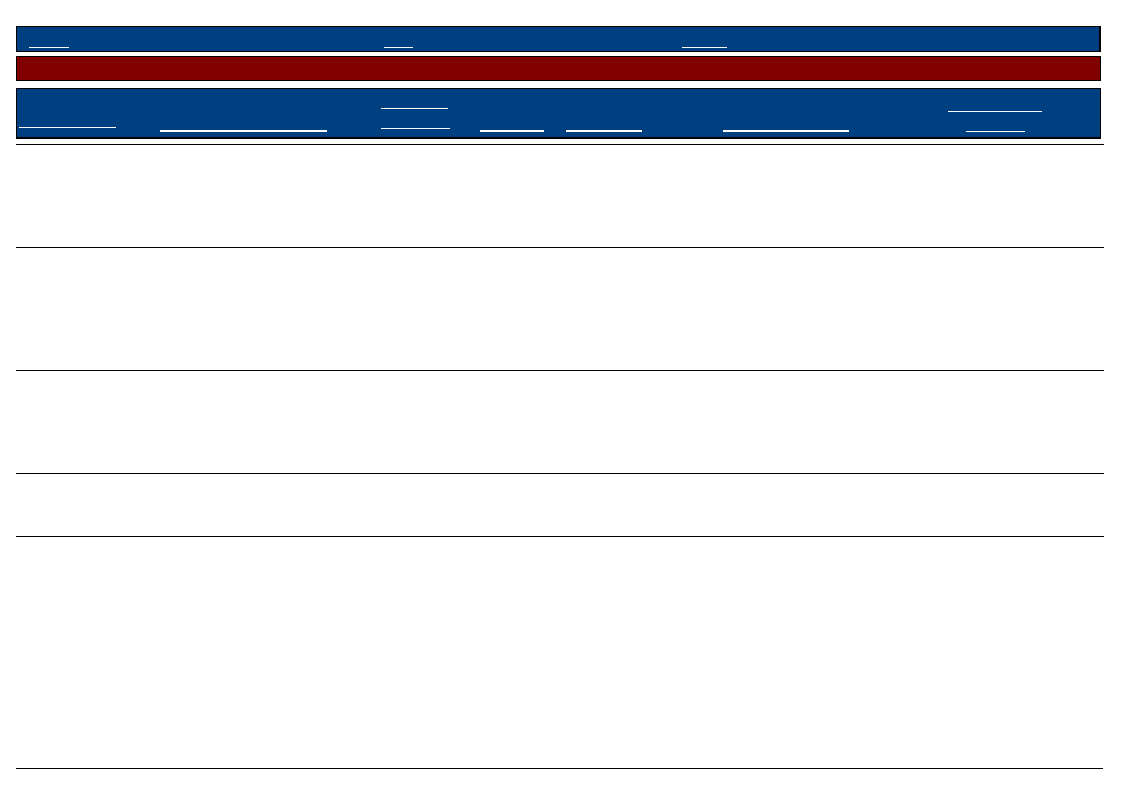
Region
S.N.N.P
Type of Disaster
Crop pest and
crop disease
Potential_Kebeles_Affected
All Kebeles
Drought
All kebele
Livestock diseases
All kebeles especially low
land kebeles
Flood
All kebeles
Human diseases
All kebeles exept Aka Bilo,
Shasha and Washi Gale
Zone WOLAYITA
HAZARD ASSESSMENT REPORT
Wereda
DAMOT GALE
Period_Of_
Occurrence
Frequency Root_Causes
Impacts_of_Disasters
March, April,
May, June,
July, August,
September,
October
February,
March, April,
May, June
2 out of 5
Years
4 out of 5
Years
Poor land
management and
agricultural practice,
Shortage and un
seasonal rain fall
Deforestation,
Shortage of rain fall,
erratic rainfall
January,
February,
March, April,
May,
December
April, May,
July
5 out of 5
Years
2 out of 5
years
Recurrent drought,
shortage of water
and pasture, lack of
enough veterinary
service
Un seasonal and high
rainfall
February,
March, April,
September,
October,
November
2 out of 5
years
Stagnant water, low
environmental
sanitation and
hygiene
Crop damaged, yield
loss, income loss
Crop damage, crop
loss, livestock death,
human disease
expansion,
migration, shortage
of water and feed
Livestock death, loss
of income, reduction
in livestock
productivity,
Soil degradation, loss
of crop production,
loss of income
Illness, Loss of
income, Loss of
productive an power
Early_Warning_
Indicators
Erratic rainfall, Increasing of
temperature, increases the
price of crops
late onset of rainfall, Low
amount of rainfall and
change in wind direction
Sudden death of livestock,
loss of appetite, standing of
animals skin and change in
livestock urine
Heavy rainfall, dark cloud,
increases the level river
banks
poor environmental
sanitation and hygiene,
Increases number of
patients, extreme
temperature, Stagnant
water
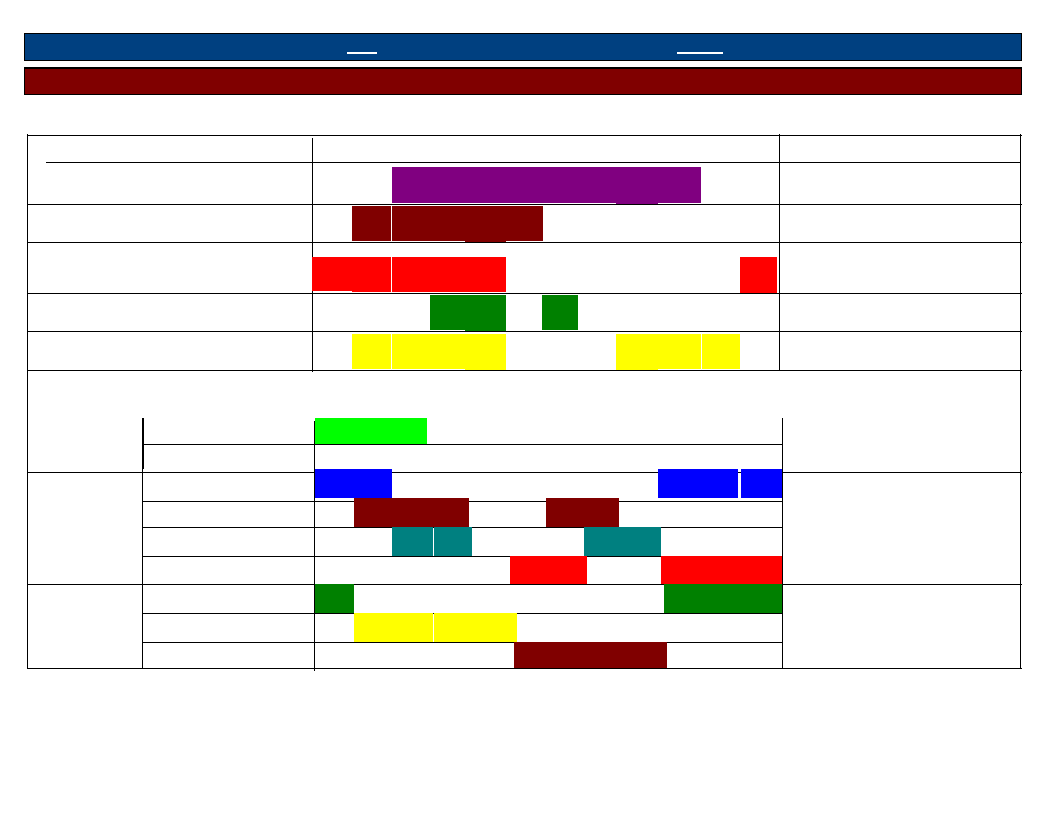
Region S.N.N.P
Zone WOLAYITA
Wereda DAMOT GALE
Seasonal Calendar of Hazards, Agricultural Activities and Income Level Report
A seasonal calendar where likely hazards and livelihood activities are classified according with the month of the year will help the planners to
analyze the hazards across the year and to estimate and to prepare a timeline for the likely disasters.
Type of Disaster List_Of_Kebeles
Jan Feb Mar Apr May Jun Jul Aug Sep Oct Nov Dec Effects_Of_the_Disaster
Crop diseases
All kebeles
1,791 1,791 1,258 1,259 1,260 1,261 1,262 1,263 1,252 1,253 1,791 1,791 Crop damage, Yield loss, income loss
Drought
All kebeles
Livestock
diseases
Flood
Human diseases
Problemmatic
Months
Agricultural
Activities
Income Level
All kebeles
All kebeles
All kebeles exept Ade
Damot, Aka Bilo,
Arwegera, gacheno,
Shasha Gale, Wendera
Boloso, Zamin ad Sibaye
Pasture Availability
Water for Livestock
Land Preparation
Planting / Sowing
Weeding
Harvesting /Threshing
Good
Medium
Poor
1,791 1,257
1,256 1,257
1,258 1,259 1,260 1,261 1,791 1,791
1,258 1,259 1,260 1,791 1,791 1,791
1,791
1,791
1,791 1,791 1,791 Crop damage, crop loss, shortage of
water and pasture for livestock, human
disease, migration, livestock disease
1,791 1,791 1,255 Livestock death, loss of income, low
livestock productivity
1,791 1,791 1,791 1,259 1,260 1,791 1,262 1,791 1,791 1,791 1,791 1,791 Soil erosion, Death of Livestock, Crop
damage, Loss of income, malnutrition
1,791 1,257 1,258 1,259 1,260 1,791 1,791 1,791 1,252 1,253 1,254 1,791 Illness, Loss of income, loss of
productive man power
1,256 1,257 1,258 1,791 1,791 1,791 1,791 1,791 1,791 1,791 1,791 1,791
1,791 1,791 1,791 1,791 1,791 1,791 1,791 1,791 1,791 1,791 1,791 1,791
1,256 1,257 1,791 1,791 1,791 1,791 1,791 1,791 1,791 1,253 1,254 1,255
1,791 1,257 1,258 1,259 1,791 1,791 1,262 1,263 1,791 1,791 1,791 1,791
1,791 1,791 1,258 1,259 1,791 1,791 1,791 1,263 1,252 1,791 1,791 1,791
1,791 1,791 1,791 1,791 1,791 1,261 1,262 1,791 1,791 1,253 1,254 1,255
1,256 1,791 1,791 1,791 1,791 1,791 1,791 1,791 1,791 1,253 1,254 1,255
1,791 1,257 1,258 1,259 1,260 1,791 1,791 1,791 1,791 1,791 1,791 1,791
1,791 1,791 1,791 1,791 1,791 1,261 1,262 1,263 1,252 1,791 1,791 1,791
Source: WDRP [months (hazard- monthly calendar or hazard _ month of occurrence of frequent disaster); income level (Source: hazard:
monthly calendar)] and Workshop.
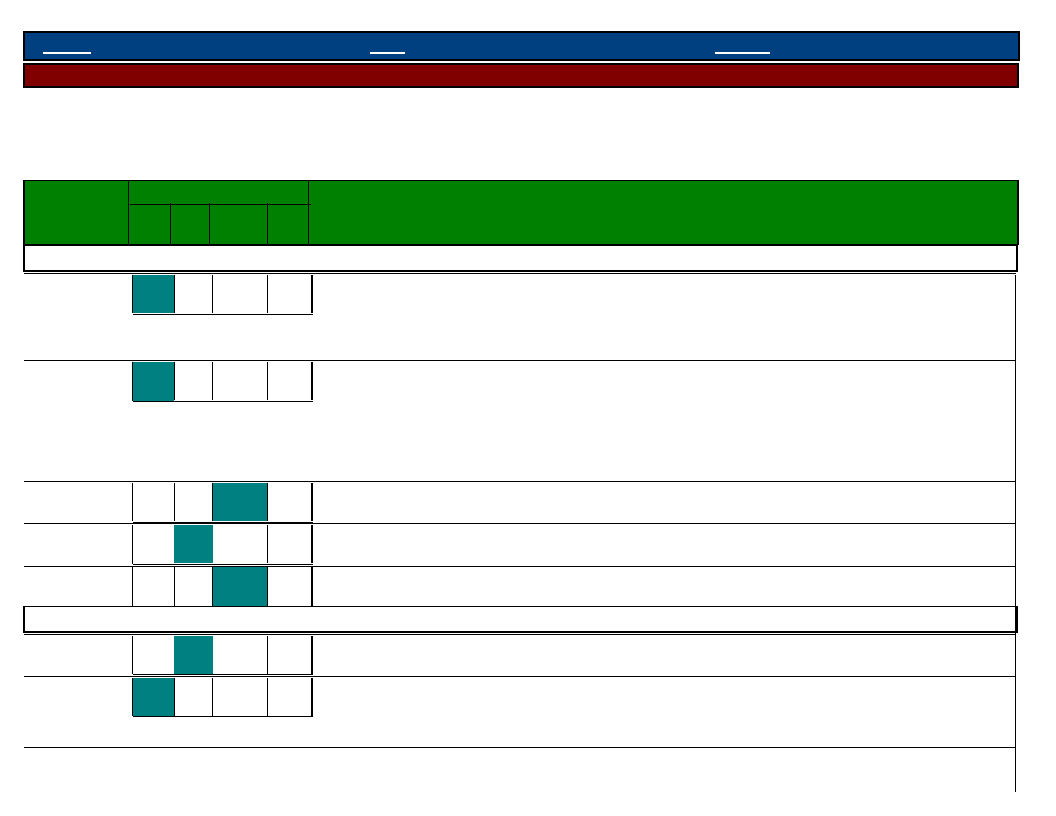
Region S.N.N.P
Zone WOLAYITA
Wereda DAMOT GALE
VULNERABILITY ASSESSMENT
It is the process of estimating the susceptibility of different elements at risk to various hazards and of analyzing the causes behind their vulnerability.
There are many aspects of vulnerability (physical, social, economic, and environmental factors) and the vulnerability varies significantly within a
community and over time. This information will serve the sectorial offices to identify which sectorial interventions can reduce the vulnerability of the
different elements of the community and in which they needed to dedicate.
Hazard
Sector:
Level_Of_Vulnerability
Very
High
High Medium Low
Specific_Reasons_Of_Vulnerability
CROP
Crop pest and
crop disease
2,254 2,254
2,254 2,254 -Lack of using disease resistant crops varieties
-Lack of using pesticide and fungicide
-Poor agricultural practices
Drought
2,254 2,254
2,254
2,254 -Dependency on rain fed agriculture
-Lack of soil and water conservation
-Lack of irrigation practice
-lack of awareness on utilization of new
technology
Lack of using drought resistant and improved
seed
Most_Vulnerable_Elements
Reasons for Most
Vulnerable Elements
Children, pregnant and lactating Women are
most vulnerable
Pregnant and lactating women, and children
are more vulnerable
Low capacity to resist
with the possible
effects of the disaster
(lack of balanced
nutrient)
Due to low capacity to
resist with the effects
of disaster
Livestock
diseases
Flood
2,256 2,256
2,255 2,255
2,256 2,256 -Crop production activity depend on Livestock
labor
HHs who mainly depend on livestock
2,255 2,255 -Poor flood Prevention measures along farm land Children, women and elder
Human diseases 2,256 2,256
Sector: LIVESTOCK
Crop pest and
crop disease
2,255 2,255
Drought
2,254 2,254
2,256 2,256 -Crop production activity depend on human skill Children, elders, disables and people with
and labor
HIV/AIDS
Less immunity
2,255 2,255 -Livestock’s feed depend on crop residues
Children, elders, pregnant and lactating women
2,254
2,254 -Livestock pasture and water are depend on
rainfall
-Lack of using improved forage
-Poor rangeland management practice
Children and pregnant and lactating women's
Due to high
dependency on
livestock product
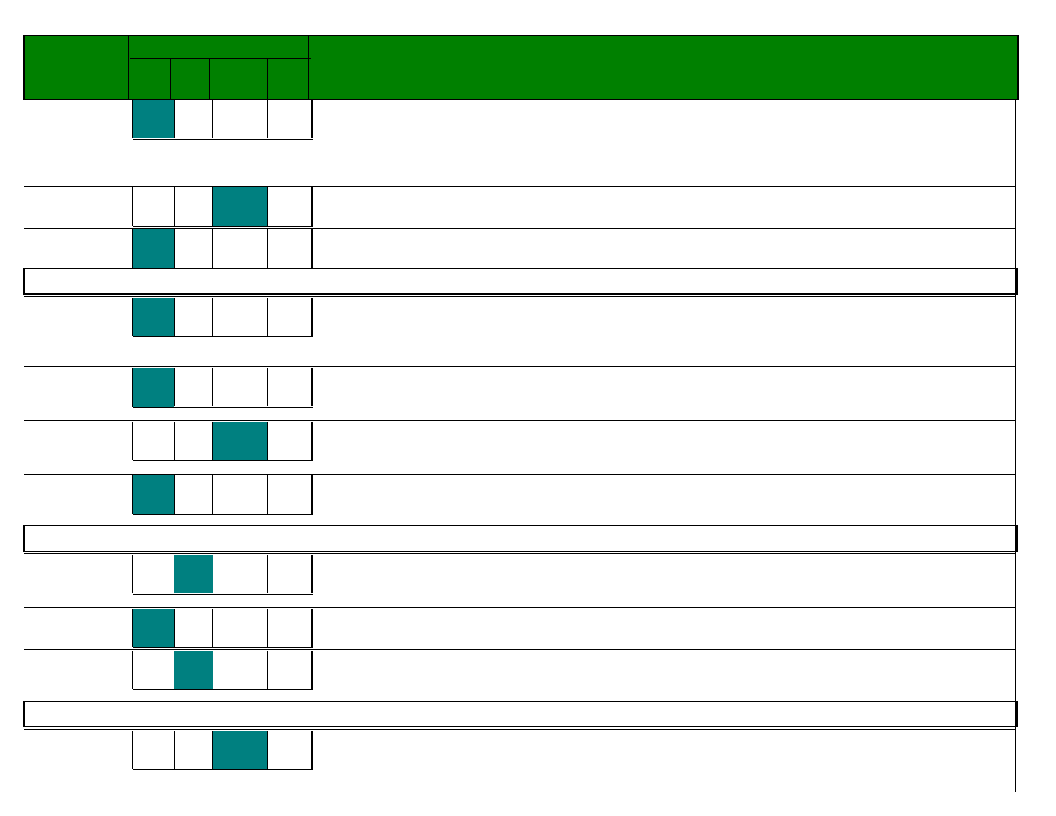
Hazard
Livestock
diseases
Flood
Level_Of_Vulnerability
Very
High
High Medium Low
Specific_Reasons_Of_Vulnerability
2,254 2,254
2,254
2,254 -Lack of scheduled vaccine program
-Lack of disease Resistance animal breed
-Poor veterinary service
-Lack of using improved forage
Lack of quarantine center
2,256 2,256 2,256 2,256 -Poor grazing management system
Most_Vulnerable_Elements
Women's, Children, elders and disables
Reasons for Most
Vulnerable Element
Low capacity to
generate alternative
income activity
Children, PLWs, elder and disable
Human diseases 2,254 2,254 2,254 2,254 -Livestock rearing activity depend on human
power
Sector: HEALTH & NUTRITION
Crop pest and
crop disease
2,254 2,254
2,254 2,254 -Household nutrition status depend on crop
production
-Due to low income generation
Children and PLWs
Children, pregnant and lactating women, and
elder
Drought
Flood
2,254 2,254
2,256 2,256
2,254 2,254 -Lack of reserved food
-Lack of sanitation and hygiene
-Lack of awareness on epidemic disease (AWD)
2,256 2,256 -Lack of awareness on water borne diseases
-Lack of flood protection measures
Children, pregnant and lactating women's are
most vulnerable group
Children's, elders and pregnant and lactating
mothers
Human diseases 2,254 2,254
Sector: EDUCATION
Crop pest and
crop disease
2,255 2,255
2,254 2,254 -Poor environmental hygiene and sanitation
-Lack of awareness on prevention measures
-Lack of enough health service facilities
2,255 2,255 -Lack of balanced diet
-Lack of reserved food
Children, pregnant and lactating, disable,
HIV/AIDS Patient
Children and women's are vulnerable
Drought
2,254 2,254 2,254 2,254 -Lack of school feeding program
-Lack of adequate water facilities
Children and women students are more
vulnerable
Human diseases 2,255 2,255
2,255 2,255 -Poor environmental hygiene and sanitation
Children's are most vulnerable
-Lack of awareness on diseases transmission and
preventive measures
Sector: NATURAL RESOURCES MANAGEMENT
Crop pest and
crop disease
2,256 2,256 2,256 2,256 -lack of awareness on crop pest management
activities
Children, women and disabled
Due to low capacity to
resist the food
shortage (balance
diet)
Due to low immunity
to resist with the given
disease
Because there are low
capacity to resist with
effects of flood
Low immunity to resist
disease
Due to low capacity to
cope with food
shortage
Because there are
depended on others
Due to low immunity
to resist with the
disease
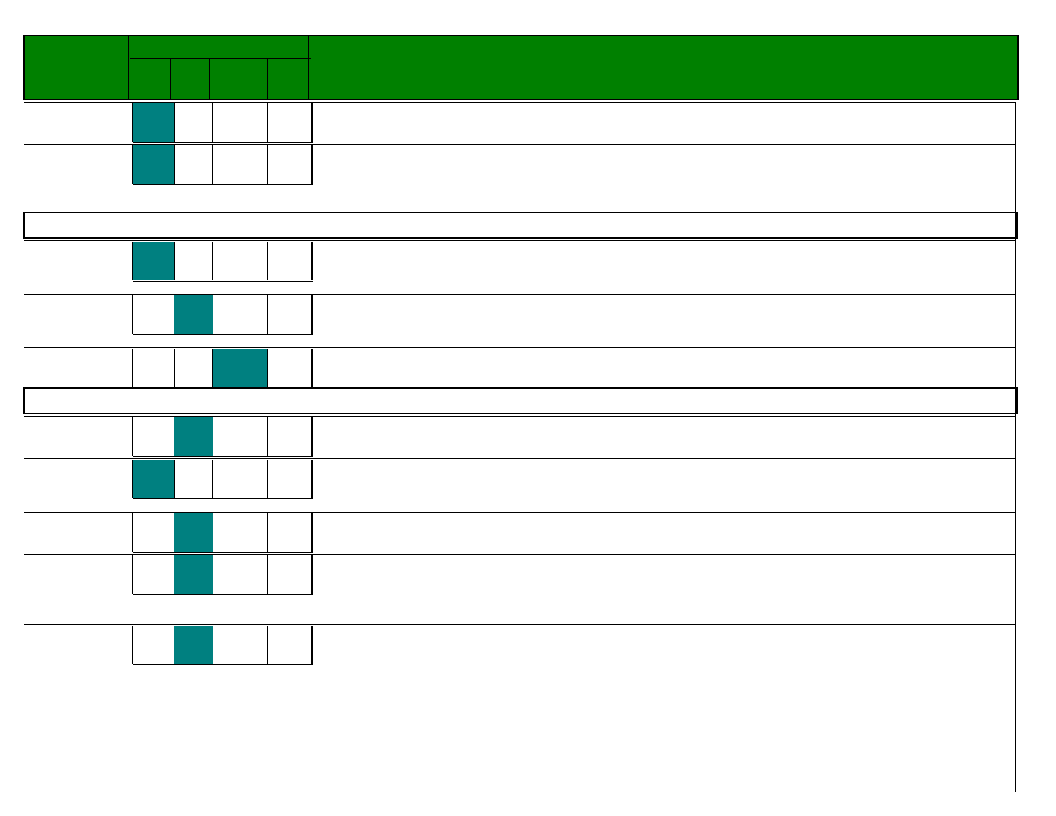
Hazard
Drought
Flood
Level_Of_Vulnerability
Very
High
High Medium Low
Specific_Reasons_Of_Vulnerability
2,254 2,254 2,254 2,254 -Lack of drought resistant variety
-Over utilization of natural resource
2,254 2,254 2,254 2,254 -Lack of adequate soil and water conservation
activity
Most_Vulnerable_Elements
Children, Women and elders
Reasons for Most
Vulnerable Elements
Children, Pregnant and Lactating Women,
people with HIV/AIDS and disability are
vulnerable,
Due to their low
capacity to resist with
the effect of flood
Sector: WATER RESOURCE
Drought
2,254 2,254
Flood
2,255 2,255
Human diseases 2,256 2,256
2,254 2,254 -Availability of water depends on amount of
rainfall
Children, pregnant and lactating women's, elder Low capacity to resist
and HIV/AIDS patient
water problem and
workload
2,255 2,255 -Poor environmental sanitation and protection of Children, pregnant and lactating women, Elder Due to less capacity to
water sources (small spring, medium spring, Hand and people with HIV/AIDS are the most
resist to water born
dag well, Shallow well)
vulnerable,
disease
2,256 2,256 -Water, sanitation and hygiene related activities Children, women, elder and people with
depend on human power
HIV/AIDS are most vulnerable
Sector: WOMEN & CHILDREN
Crop pest and
crop disease
2,255 2,255 2,255 2,255 -Lack of using pesticides and improved crop
variety
Children, women, disabled and people with
HIV/AIDS
Drought
Livestock
diseases
2,254 2,254
2,255 2,255
2,254 2,254 -Lack of reserved food
-Agriculture practices depend on rain feed
agriculture
2,255 2,255 -Highly depended on livestock products
Children, women, elderly and people with
HIV/AIDS
Children, Women, elders, disability and people
with HIV/AIDS
Flood
2,255 2,255
2,255 2,255 -Lack of adequate sanitation and hygiene
Children and pregnant and lactating women's
-Lack of appropriate flood protection measures are most vulnerable
Due their low capacity
to resist with water
born disease.
Human diseases 2,255 2,255
2,255 2,255 -Poor hygiene and sanitation practice
-Lack of awareness on transmission and
preventive measures of communicable disease
Children, pregnant and lactating women, elder, Low immunity
disability and people with HIV/AIDS
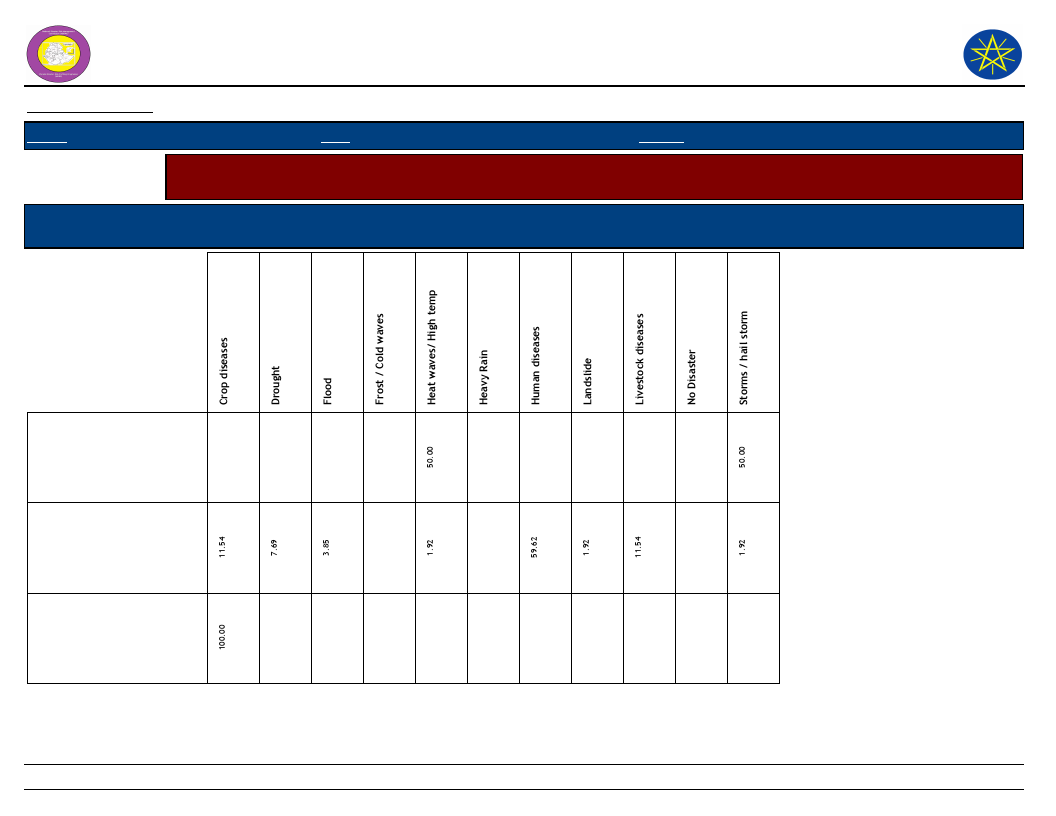
Wereda Disaster
Risk Profile
National Disaster Risk Management
Commission (NDRMC)
Data_Collected_Date
March 2017
Region S.N.N.P
Zone WOLAYITA
Wereda DAMOT GALE
Selected Indicator
Capacity: Coping Strategies Adopted by Households - Main coping strategies adopted by households for respective
disasters
Coping Strtegies Adopted
Types of disaters for which HHs in the community adopt the listed
Coping Strtegies
Tuesday, August 1, 2017
Begging for money or for
food
Borrowing of food or cash
(including purchasing food
on credit)
Collection of wild food
Page 1 of 8
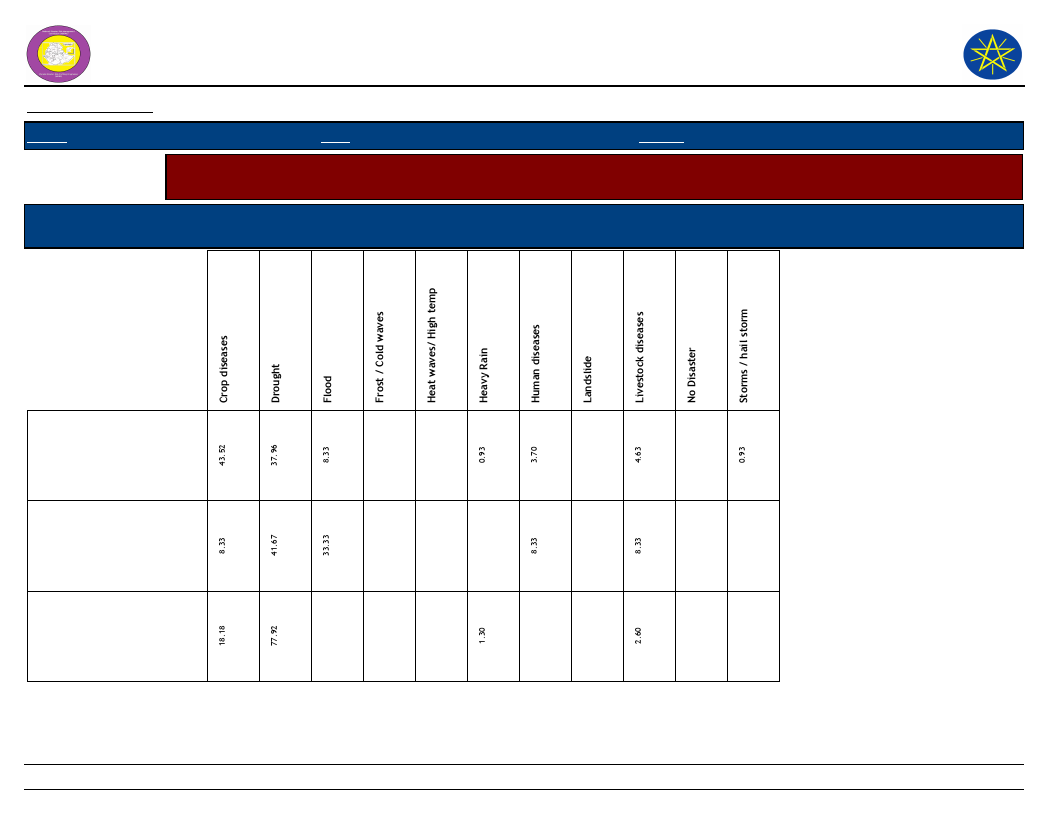
Wereda Disaster
Risk Profile
National Disaster Risk Management
Commission (NDRMC)
Data_Collected_Date
March 2017
Region S.N.N.P
Zone WOLAYITA
Wereda DAMOT GALE
Selected Indicator
Capacity: Coping Strategies Adopted by Households - Main coping strategies adopted by households for respective
disasters
Coping Strtegies Adopted
Types of disaters for which HHs in the community adopt the listed
Coping Strtegies
Tuesday, August 1, 2017
Consumption rather than
sale of crop surplus
Increased working hours
Limit portion size at meals
Page 2 of 8
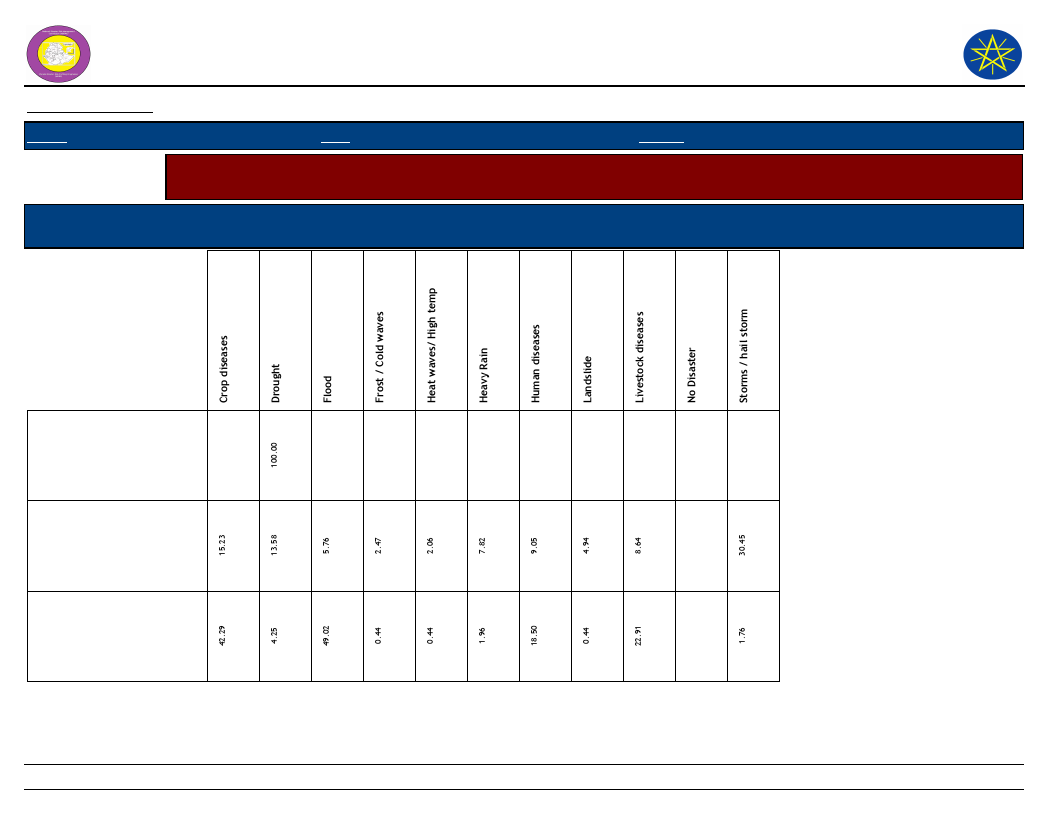
Wereda Disaster
Risk Profile
National Disaster Risk Management
Commission (NDRMC)
Data_Collected_Date
March 2017
Region S.N.N.P
Zone WOLAYITA
Wereda DAMOT GALE
Selected Indicator
Capacity: Coping Strategies Adopted by Households - Main coping strategies adopted by households for respective
disasters
Coping Strtegies Adopted
Types of disaters for which HHs in the community adopt the listed
Coping Strtegies
Tuesday, August 1, 2017
Long-term / permanent
migration (including
distress migration of
whole families)
No coping strategy
adopted
Others -
Page 3 of 8
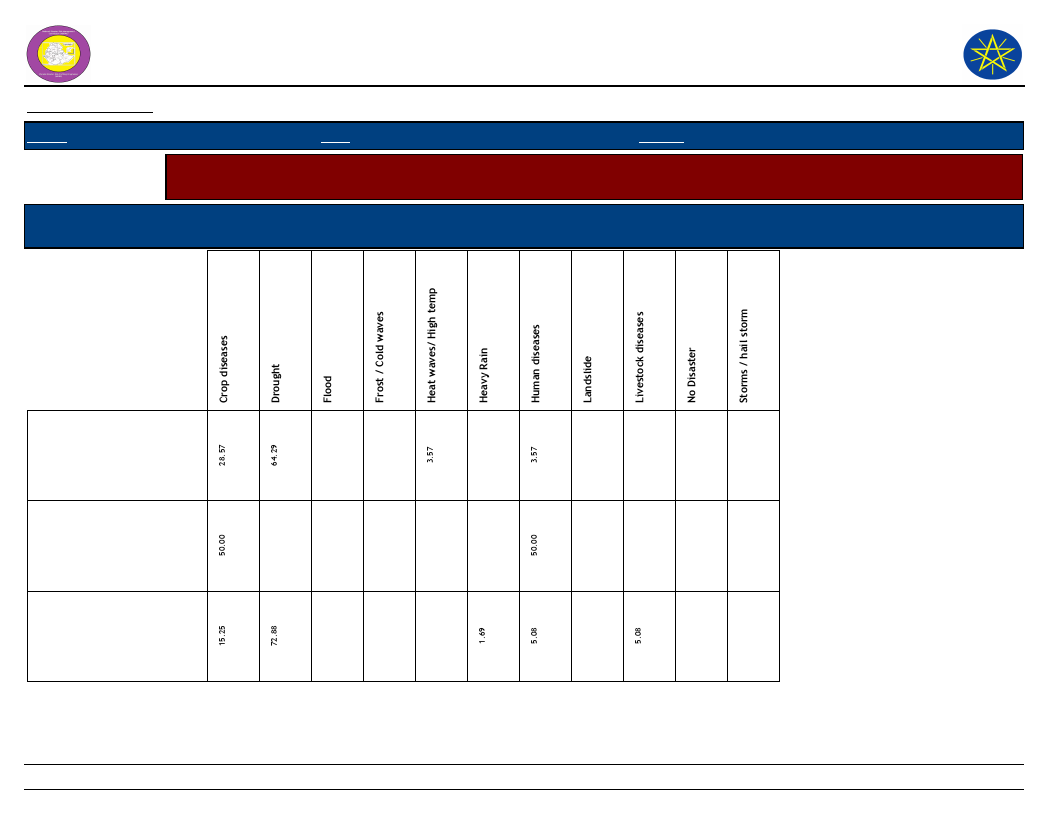
Wereda Disaster
Risk Profile
National Disaster Risk Management
Commission (NDRMC)
Data_Collected_Date
March 2017
Region S.N.N.P
Zone WOLAYITA
Wereda DAMOT GALE
Selected Indicator
Capacity: Coping Strategies Adopted by Households - Main coping strategies adopted by households for respective
disasters
Coping Strtegies Adopted
Types of disaters for which HHs in the community adopt the listed
Coping Strtegies
Tuesday, August 1, 2017
Reduce number of meals
eaten in a day
Reduced expenditure on
health and education
(including taking children
out of school)
Reduced expenditure on
non-essential items (beer,
cigarettes, clothes, meat,
etc.)
Page 4 of 8
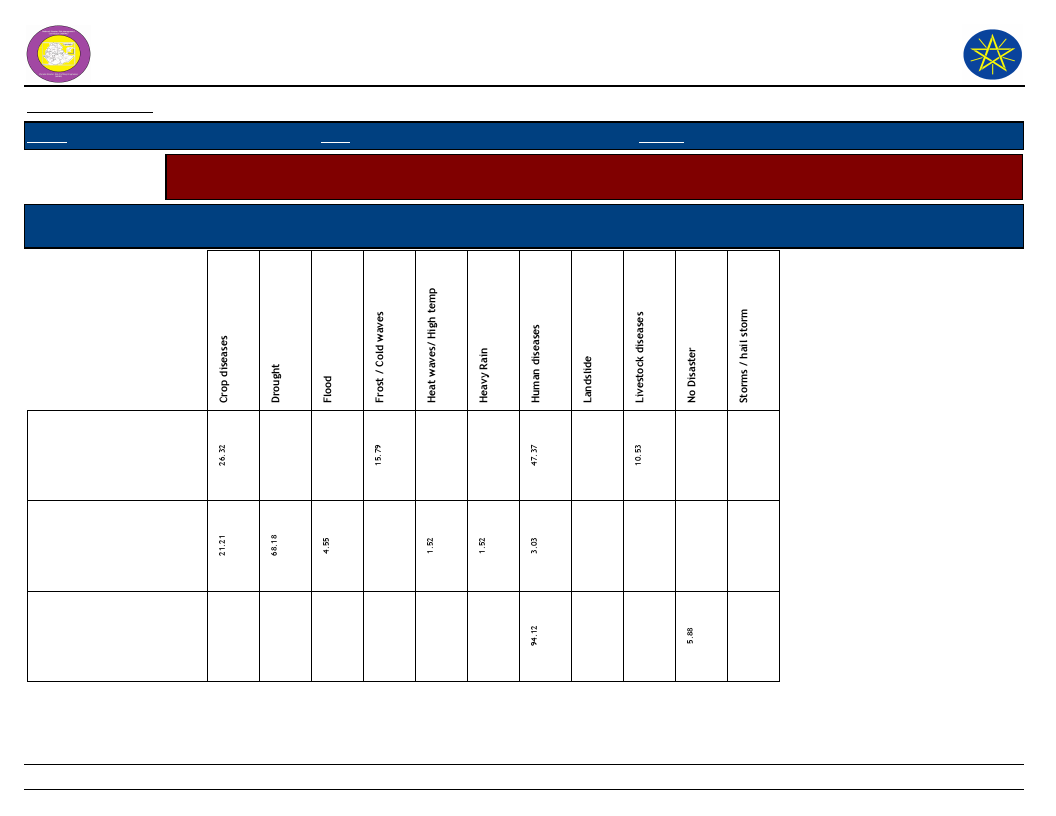
Wereda Disaster
Risk Profile
National Disaster Risk Management
Commission (NDRMC)
Data_Collected_Date
March 2017
Region S.N.N.P
Zone WOLAYITA
Wereda DAMOT GALE
Selected Indicator
Capacity: Coping Strategies Adopted by Households - Main coping strategies adopted by households for respective
disasters
Coping Strtegies Adopted
Types of disaters for which HHs in the community adopt the listed
Coping Strtegies
Tuesday, August 1, 2017
Reduced expenditure on
productive inputs
(fertilizer, seeds,
livestock drugs, etc.)
Rely on less preferred and
less expensive food
Restrict consumption by
adults in order for small
children to eat
Page 5 of 8
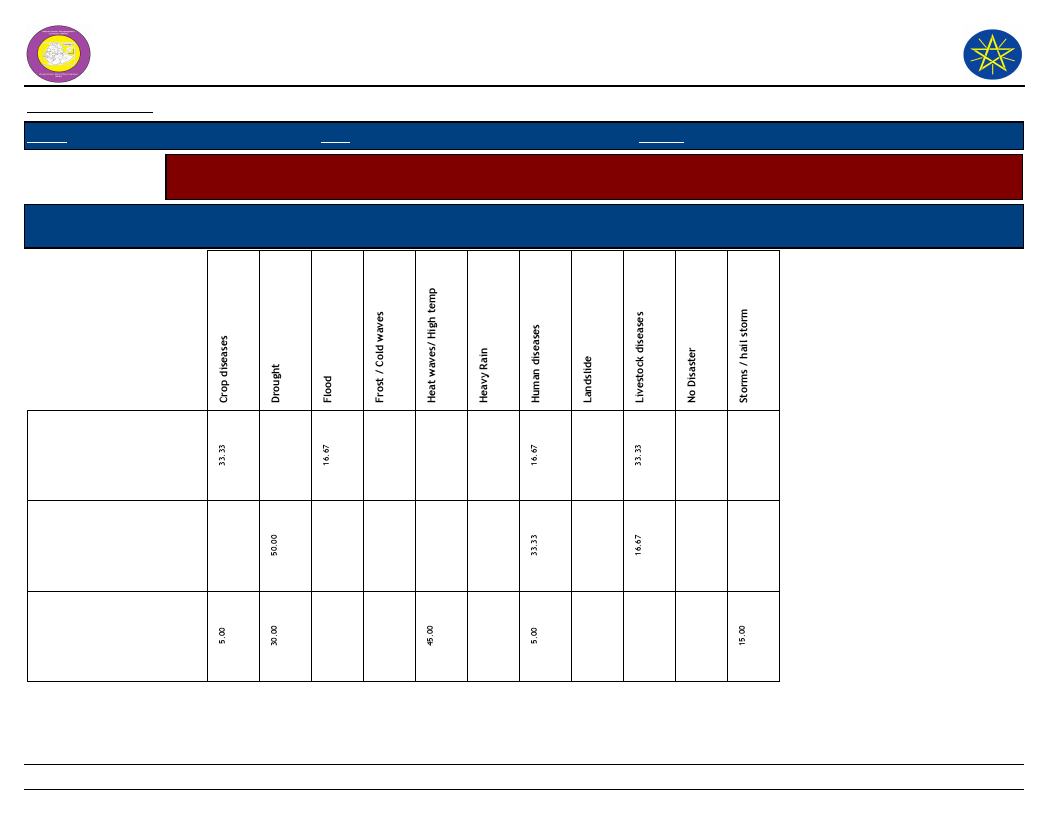
Wereda Disaster
Risk Profile
National Disaster Risk Management
Commission (NDRMC)
Data_Collected_Date
March 2017
Region S.N.N.P
Zone WOLAYITA
Wereda DAMOT GALE
Selected Indicator
Capacity: Coping Strategies Adopted by Households - Main coping strategies adopted by households for respective
disasters
Coping Strtegies Adopted
Types of disaters for which HHs in the community adopt the listed
Coping Strtegies
Tuesday, August 1, 2017
Sale of non-productive
assets (Jewelry, clothing,
etc.)
Sale of productive assets
(land, farm implements,
vehicle, etc.)
Seek alternative or
additional jobs
Page 6 of 8
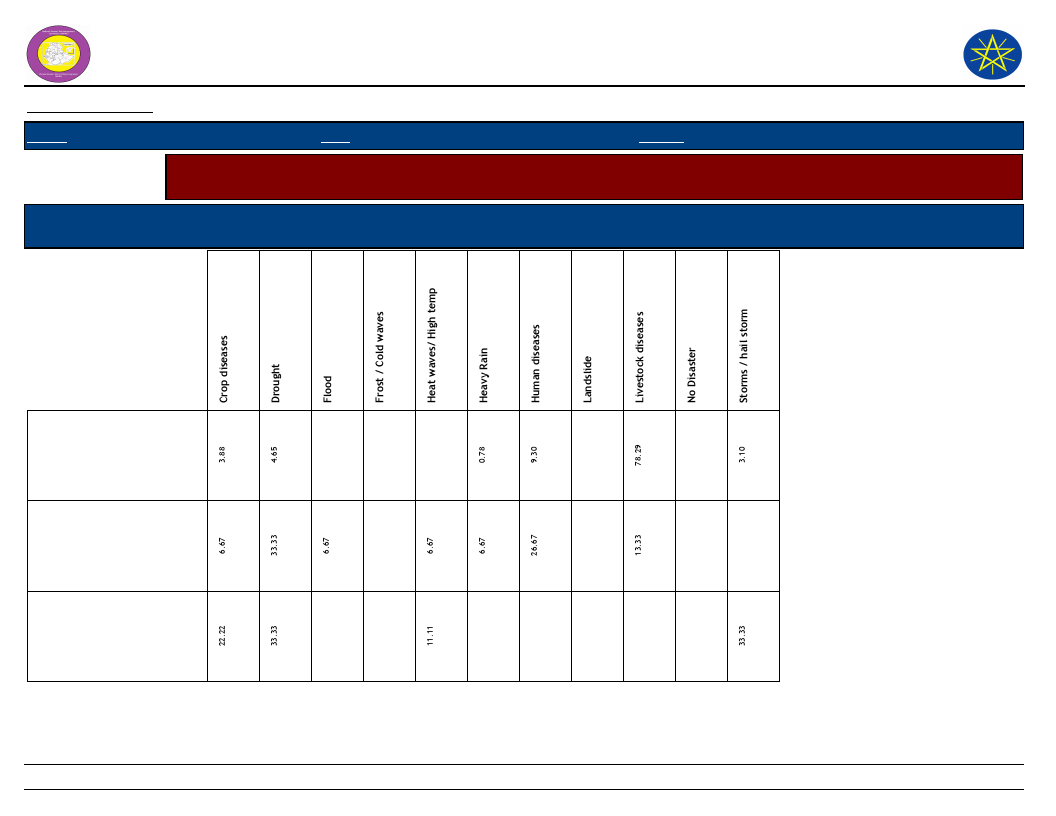
Wereda Disaster
Risk Profile
National Disaster Risk Management
Commission (NDRMC)
Data_Collected_Date
March 2017
Region S.N.N.P
Zone WOLAYITA
Wereda DAMOT GALE
Selected Indicator
Capacity: Coping Strategies Adopted by Households - Main coping strategies adopted by households for respective
disasters
Coping Strtegies Adopted
Types of disaters for which HHs in the community adopt the listed
Coping Strtegies
Tuesday, August 1, 2017
Sell more livestock than
usual
Sending children of
household for work
Short-term / seasonal
labor migration
Page 7 of 8
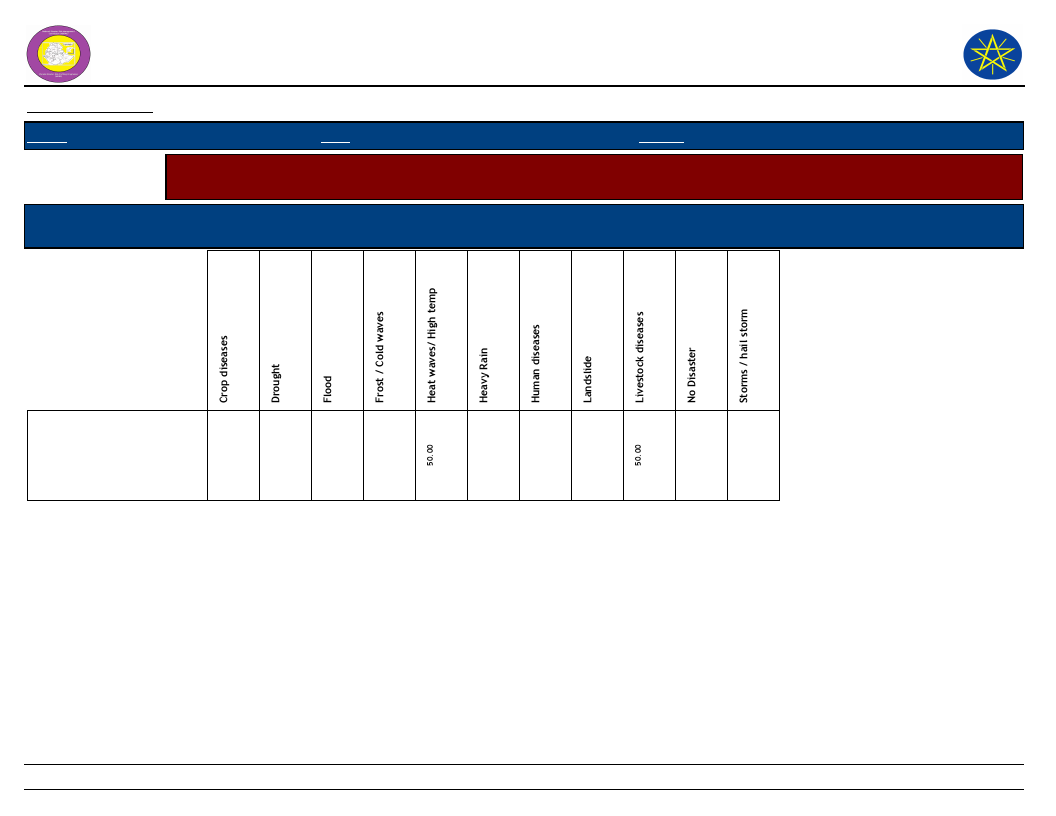
Wereda Disaster
Risk Profile
National Disaster Risk Management
Commission (NDRMC)
Data_Collected_Date
March 2017
Region S.N.N.P
Zone WOLAYITA
Wereda DAMOT GALE
Selected Indicator
Capacity: Coping Strategies Adopted by Households - Main coping strategies adopted by households for respective
disasters
Coping Strtegies Adopted
Types of disaters for which HHs in the community adopt the listed
Coping Strtegies
Tuesday, August 1, 2017
Skip entire day without
eating
Page 8 of 8
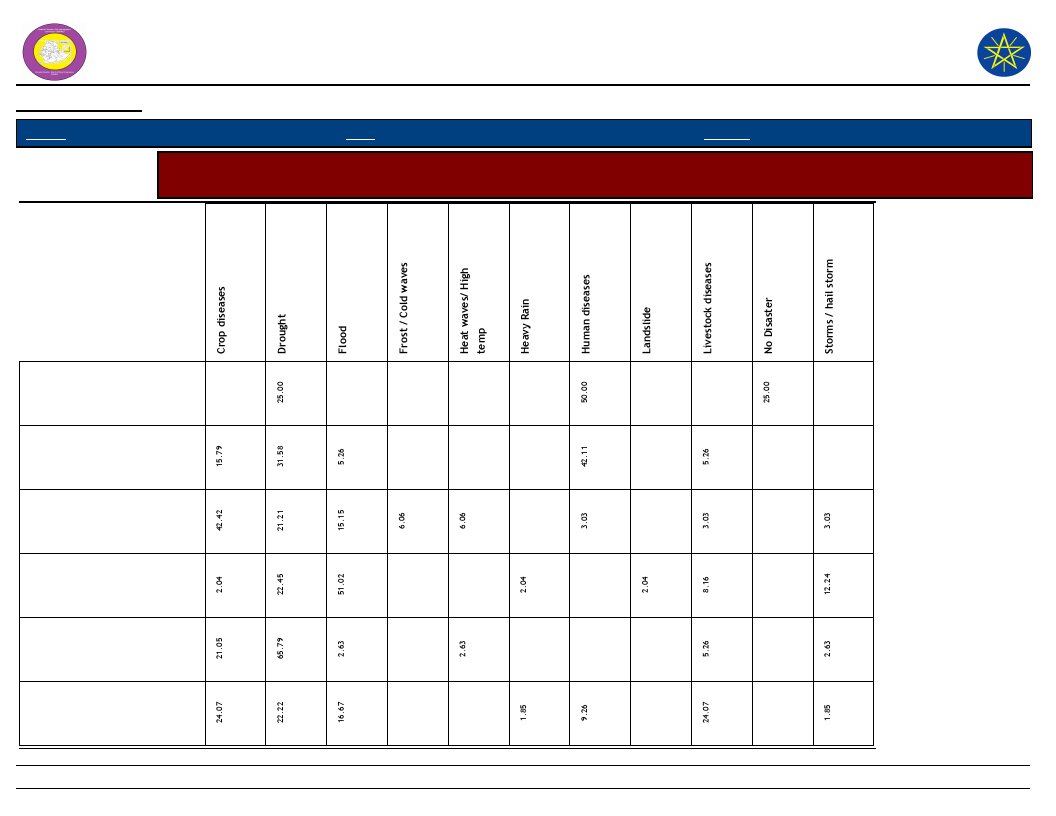
Wereda Disaster Risk
Profile
National Disaster Risk Management
Commission (NDRMC)
Data_Collected_Date
Region S.N.N.P
March 2017
Zone
WOLAYITA
Wereda DAMOT GALE
Tuesday, August 1, 2017
Selected Indicator
Capacity: Coping Strategies Adopted by Households - Secondary coping strategies adopted by households for
respective disasters
Begging for money or for
food
Borrowing of food or cash
(including purchasing food
on credit)
Consumption rather than
sale of crop surplus
Increased working hours
Limit portion size at meals
No coping strategy adopted
Page 1 of 4
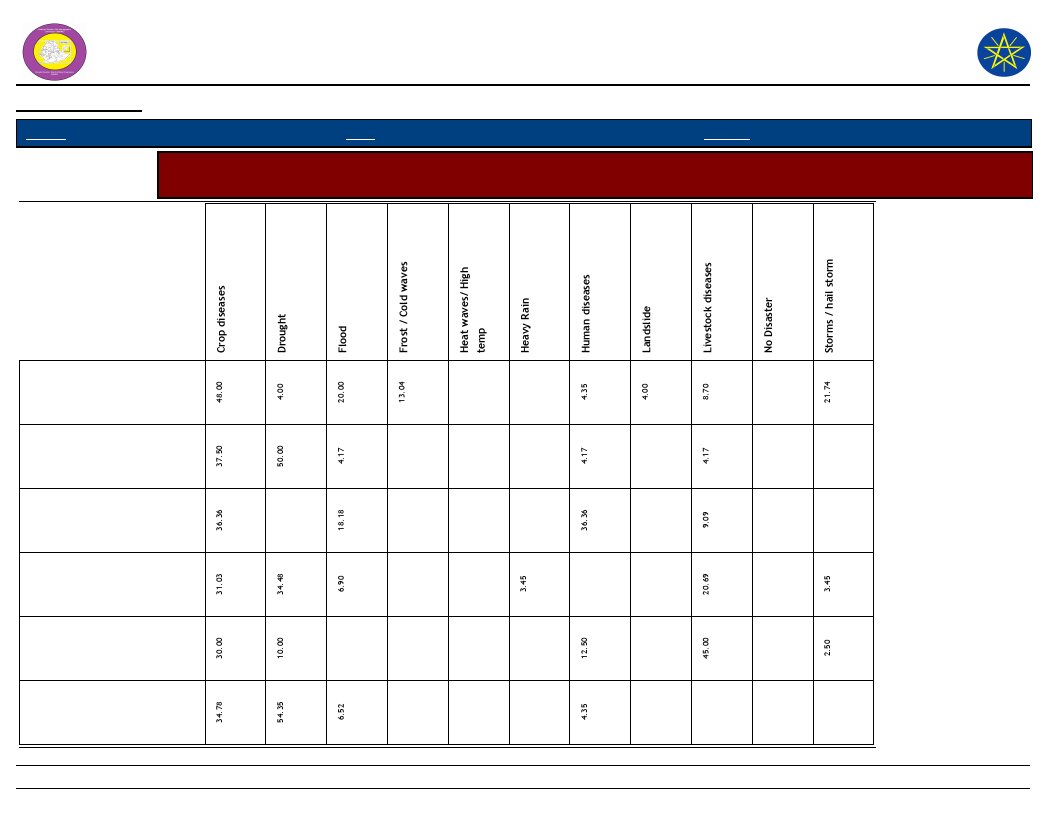
Wereda Disaster Risk
Profile
National Disaster Risk Management
Commission (NDRMC)
Data_Collected_Date
Region S.N.N.P
March 2017
Zone
WOLAYITA
Wereda DAMOT GALE
Tuesday, August 1, 2017
Selected Indicator
Capacity: Coping Strategies Adopted by Households - Secondary coping strategies adopted by households for
respective disasters
Others -
Reduce number of meals
eaten in a day
Reduced expenditure on
health and education
(including taking children
Reduced expenditure on
non-essential items (beer,
cigarettes, clothes, meat,
Reduced expenditure on
productive inputs
(fertilizer, seeds, livestock
Rely on less preferred and
less expensive food
Page 2 of 4
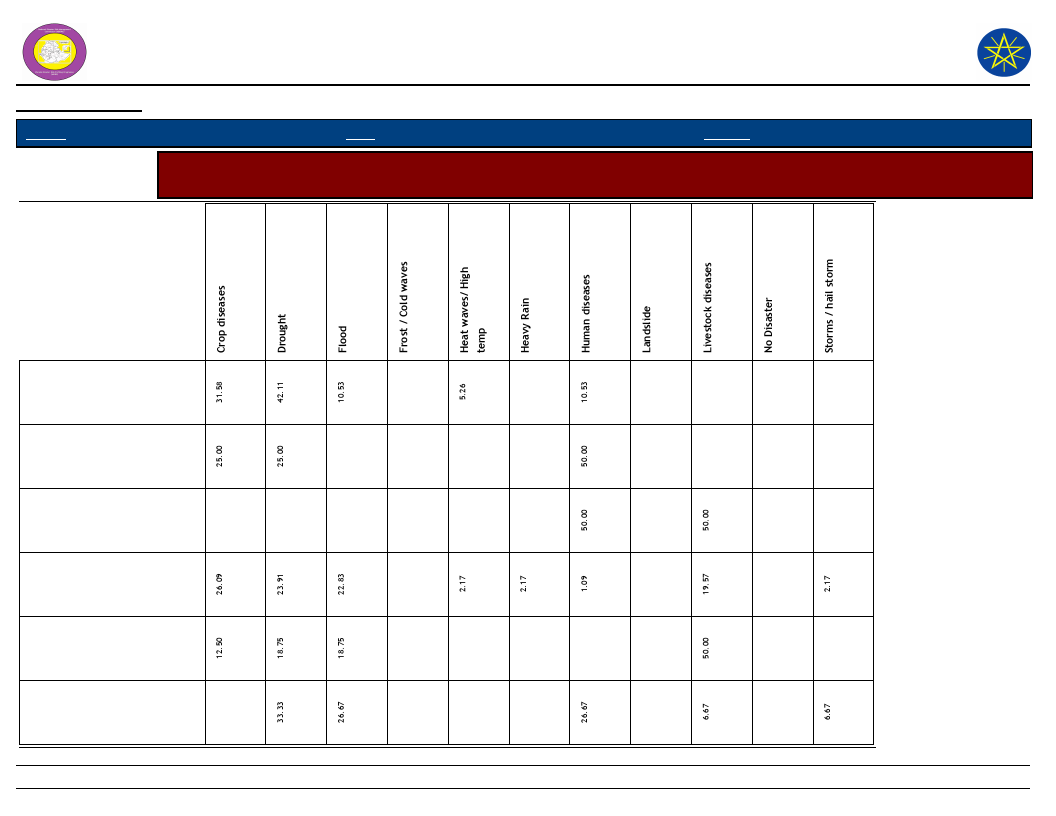
Wereda Disaster Risk
Profile
National Disaster Risk Management
Commission (NDRMC)
Data_Collected_Date
Region S.N.N.P
March 2017
Zone
WOLAYITA
Wereda DAMOT GALE
Tuesday, August 1, 2017
Selected Indicator
Capacity: Coping Strategies Adopted by Households - Secondary coping strategies adopted by households for
respective disasters
Restrict consumption by
adults in order for small
children to eat
Sale of non-productive
assets (Jewelry, clothing,
etc.)
Sale of productive assets
(land, farm implements,
vehicle, etc.)
Seek alternative or
additional jobs
Sell more livestock than
usual
Sending children of
household for work
Page 3 of 4
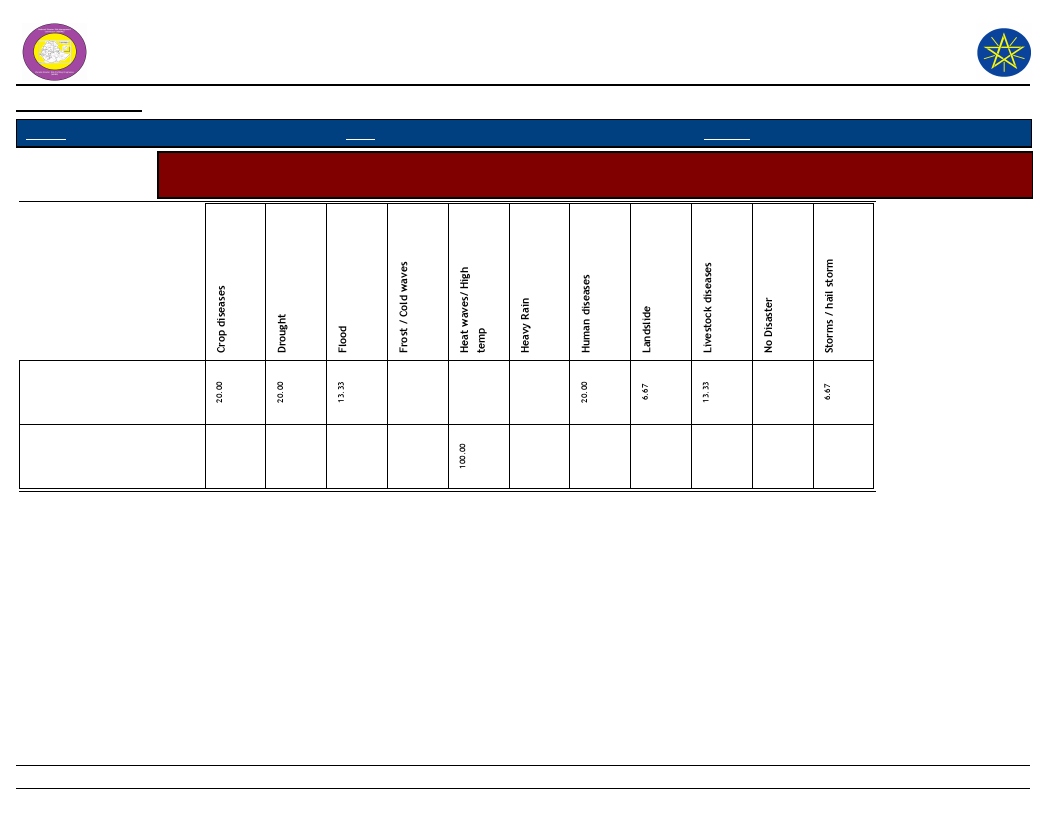
Wereda Disaster Risk
Profile
National Disaster Risk Management
Commission (NDRMC)
Data_Collected_Date
Region S.N.N.P
March 2017
Zone
WOLAYITA
Wereda DAMOT GALE
Tuesday, August 1, 2017
Selected Indicator
Capacity: Coping Strategies Adopted by Households - Secondary coping strategies adopted by households for
respective disasters
Short-term / seasonal labor
migration
Skip entire day without
eating
Page 4 of 4
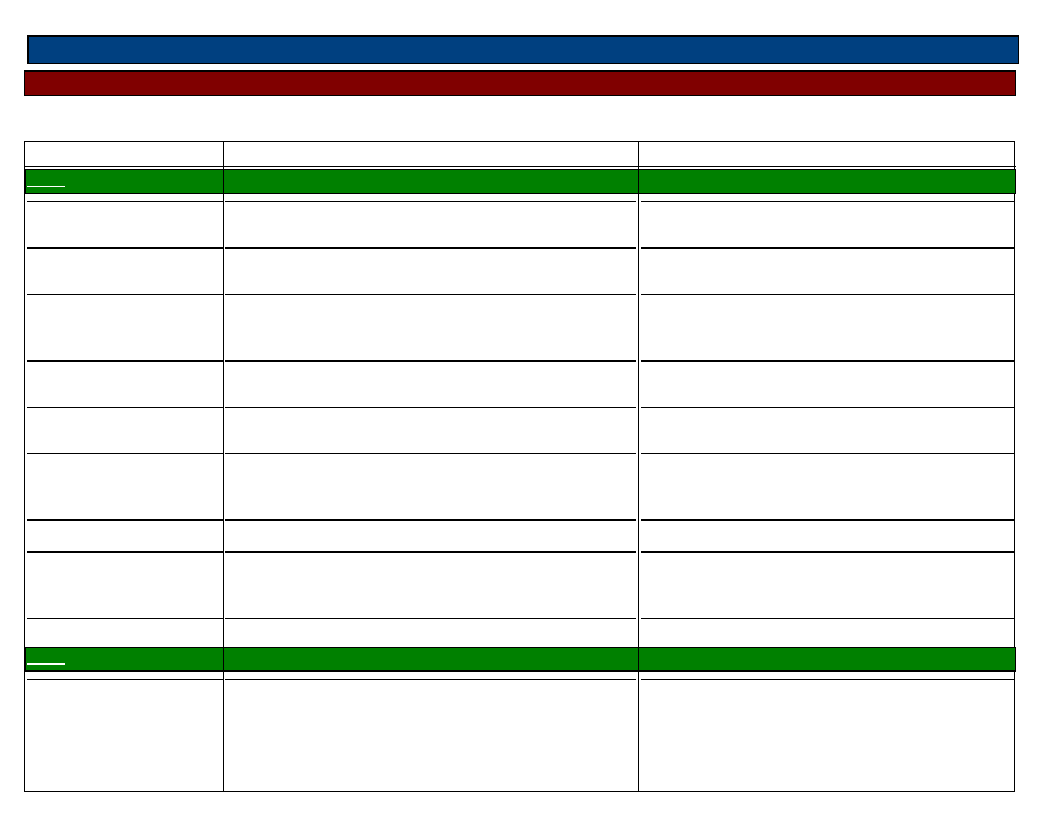
Region S.N.N.P
Zone WOLAYITA
Wereda DAMOT GALE
ADAPTIVE CAPACITY ASSESSMENT
This analysis will enhance to develop coping capacities of the individuals and the communities, and the organizations to develop
resiliency from any type of hazard taking into account the longer trends produced by the climate change.
Adaptive Capacity Type
Existing_Capacity
Capacity_Gap
Sector
CROP
ASSETS - HUMAN CAPITAL
ASSETS - SOCIAL CAPITAL
ASSETS - PHYSICAL
CAPITAL
ASSETS - FINANCIAL
CAPITAL
ASSETS - NATURAL
CAPITAL
KNOWLEDGE AND
INFORMATION
INNOVATION
Development agent at keble level -23
Expert at woreda level - 6
'Debo' -it is the Way in which farmers use to help each
other in agricultural activity
Presence of Farmers Training Center
Availability of Irrigation canal
Presence of Demonstration house
Government budget 60%
Presence of river and agricultural land
Indigenous knowledge on predicting weather condition
Traditional knowledge
Information on Radio, Tv and telephone
Use traditional pesticides technique
Lack of development agent at kebele level - 4
Lack of expert at woreda level - 1
Lack of commitment
Quality problem on farmers training center
Shortage of running cost 40%
Lack of awareness on utilization of irrigation
Lace of communication (telephone) on some
kebeles
Lack of training to make it scientific
FLEXIBLE AND FORWARD
LOOKING DECISION -
MAKING AND PLANNING
INSTITUTIONS
Sector
Woreda agriculture office has been planning and
implementing to increase the productivity of farmers,
Flexible and transparent decision making
Government institution
LIVESTOCK
Lack of timely implementation
Absence of NGOs
ASSETS - HUMAN CAPITAL
Presence of 13 livestock health assistant at 27 kebleles,
3 DVM, 1 BVs and 3 veterinary assistant at woredal
level,
70% of SMS at woreda levels
Shortage of development agent and animal health
assistant
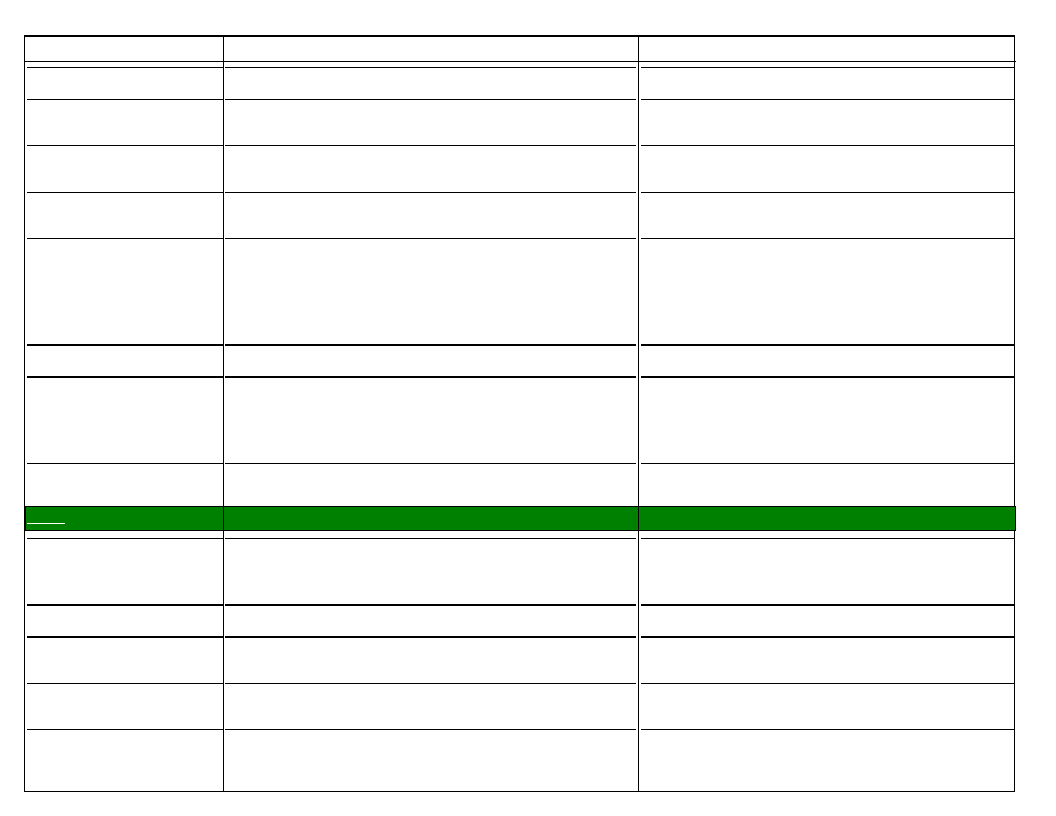
Adaptive Capacity Type
ASSETS - SOCIAL CAPITAL
ASSETS - PHYSICAL
CAPITAL
ASSETS - FINANCIAL
CAPITAL
ASSETS - NATURAL
CAPITAL
KNOWLEDGE AND
INFORMATION
INNOVATION
FLEXIBLE AND FORWARD
LOOKING DECISION -
MAKING AND PLANNING
INSTITUTIONS
Sector
ASSETS - HUMAN CAPITAL
ASSETS - SOCIAL CAPITAL
ASSETS - PHYSICAL
CAPITAL
ASSETS - FINANCIAL
CAPITAL
ASSETS - NATURAL
CAPITAL
Existing_Capacity
High social interaction among community
Availability of 2 health posts and one woreda livestock
clinic
Availability of government budget
Presence of river
Presence of regular reporting about the condition of
livestock from kebele to woreda and to other
government level,
there is away of disseminating and obtaining
information regard to rainfall, pasture and water
Farmers use cultural drugs and treatment ways
Woreda livestock office has committed to improve
livestock production.
Flexible and transparent decision making approach
Good planning approach
NGOs ; SDI VOCA - Forage development
Aspire project - Agriculture bee production
HEALTH & NUTRITION
Health extension workers 95%
Health center professionals 80%
Health office staff 85%
Women's Health Development Army (WDA) - 80%
Presence of Health post - 27
Availability of Health center - 7
Government budget
-
Capacity_Gap
-
Shortage of health post, clinic treatment and
diagnostic material
Lack of NGOs supportive in relating to animal
health problem
Shortage of water in some kebeles
Way of information sharing should be improved and
supported by technology
Lack of training to make it scientific
Implementation of activities on the given time line
should be improved
Lack of capacity building activities in protecting
animal from disease
Lack of health extension workers - 5%
Lack of Health center profession - 20%
Lack of Health office staff 15%
-
Lack of 6 health post
Lack of NGOs support
-
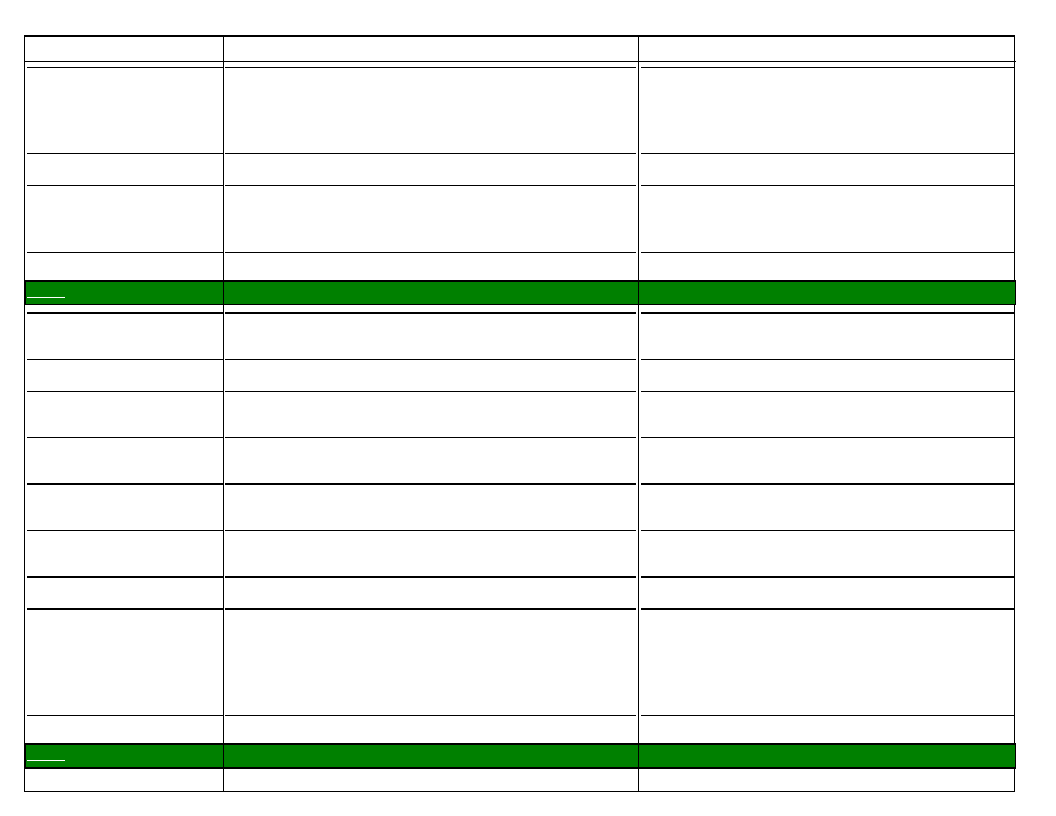
Adaptive Capacity Type
KNOWLEDGE AND
INFORMATION
INNOVATION
FLEXIBLE AND FORWARD
LOOKING DECISION -
MAKING AND PLANNING
INSTITUTIONS
Sector
ASSETS - HUMAN CAPITAL
ASSETS - SOCIAL CAPITAL
ASSETS - PHYSICAL
CAPITAL
ASSETS - FINANCIAL
CAPITAL
ASSETS - NATURAL
CAPITAL
KNOWLEDGE AND
INFORMATION
INNOVATION
FLEXIBLE AND FORWARD
LOOKING DECISION -
MAKING AND PLANNING
INSTITUTIONS
Sector
Existing_Capacity
Availability of network access in woreda level,
presence of skilled health professional and Clear line
communication with health post, health center and
health office (Regular report)
-
Woreda health office has been planning and
implementing strategies to improve health services
Health post, Health center and NGOs
NATURAL RESOURCES MANAGEMENT
Expert at woreda level - 2
Development agent at kebele level - 24
Water shade committee and Edir
Presence of nursery site - 16
Availability of equipment
Government budget
Presence of river and forest
Community knowledge and by laws in managing and
protecting natural resources, availability of NRM experts
-
Woreda agriculture and natural resource office are
committed to protect the natural resource by
implementing different strategies and activities
Local bylaws on managing and protection of natural
resources,
Government institution
WATER RESOURCE
Capacity_Gap
Lack of awareness in disease outbreak
-
implementation of the planned activity on the
given time frame should be improved
Shortage of medical supplies and manpower
Lack of expert at woreda level - 6
Lack of development agent at kebele level - 3
Lack of motivation and commitment
Shortage of nursery site - 11
Shortage of budget
Limited of river
Shortage of natural forest
Community skills in natural resource conservation
practice should be supported by skilled expert
-
-
Absence of project and NGOs
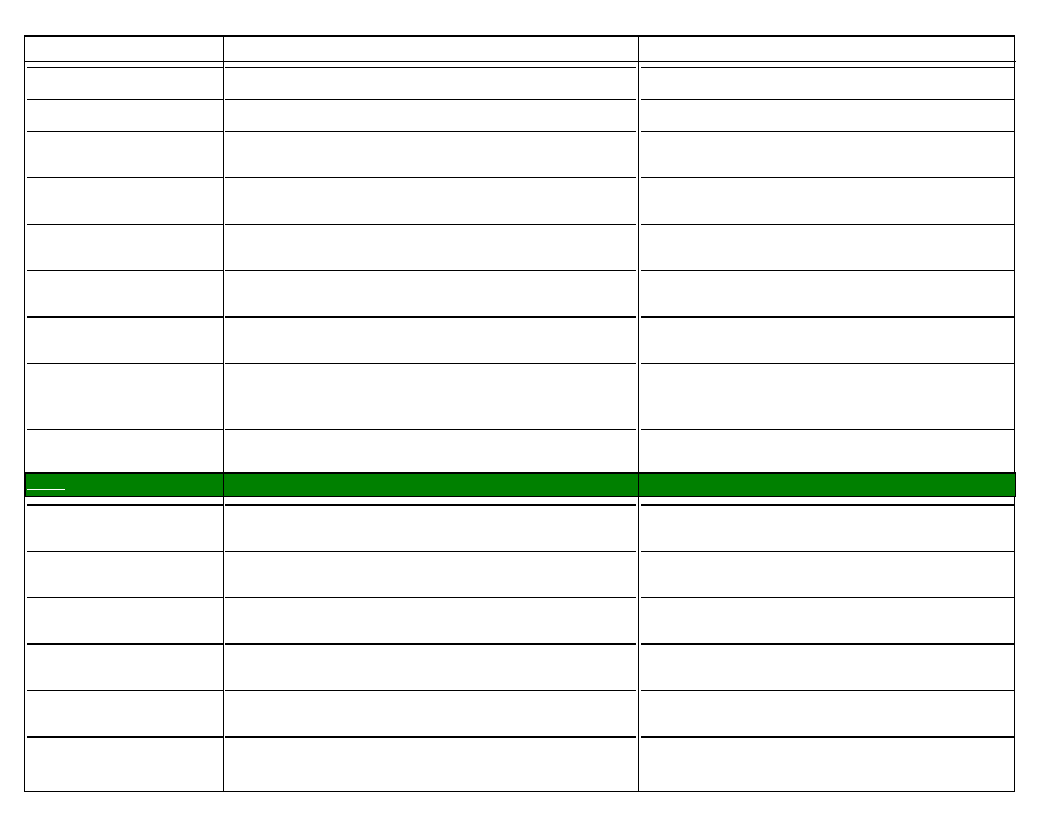
Adaptive Capacity Type
ASSETS - HUMAN CAPITAL
ASSETS - SOCIAL CAPITAL
ASSETS - PHYSICAL
CAPITAL
ASSETS - FINANCIAL
CAPITAL
ASSETS - NATURAL
CAPITAL
KNOWLEDGE AND
INFORMATION
INNOVATION
FLEXIBLE AND FORWARD
LOOKING DECISION -
MAKING AND PLANNING
INSTITUTIONS
Sector
ASSETS - HUMAN CAPITAL
ASSETS - SOCIAL CAPITAL
ASSETS - PHYSICAL
CAPITAL
ASSETS - FINANCIAL
CAPITAL
ASSETS - NATURAL
CAPITAL
KNOWLEDGE AND
INFORMATION
Existing_Capacity
Available expert at woreda level - 54%
-
Presence of water schemes (Borehole, pond, spring
water and traditional walls)
Government budget and
One WASH
Presence of river
Good information sharing approach
Physical and bacteriological treatments
Boil and filtering of water
Transparent and community based plan
Good commitment to improve access to water
Government institution and
NGOs (One wash )
EDUCATION
Availability of human resource (Teacher, supervisor,
director and expert at office level)
Presence of parent teachers association at community
level
School building and material
Annual budget, school and block grant
-
Availability of educated teachers and access of
information (plasma and internet)
Capacity_Gap
Expert gap at woreda level - 46%
-
Limited water coverage in all kebeles
Shortage of budget
Shortage of budget for constructing irrigation
schemes
Lack of awareness on schemes management
Lack of awareness on water born disease
Shortage of budget to implement on time
Shortage of budget
Lack of capacity building training
Shortage of skilled manpower
Lack of awareness and commitment
Shortage of budget
Shortage of budget
-
Lack of material
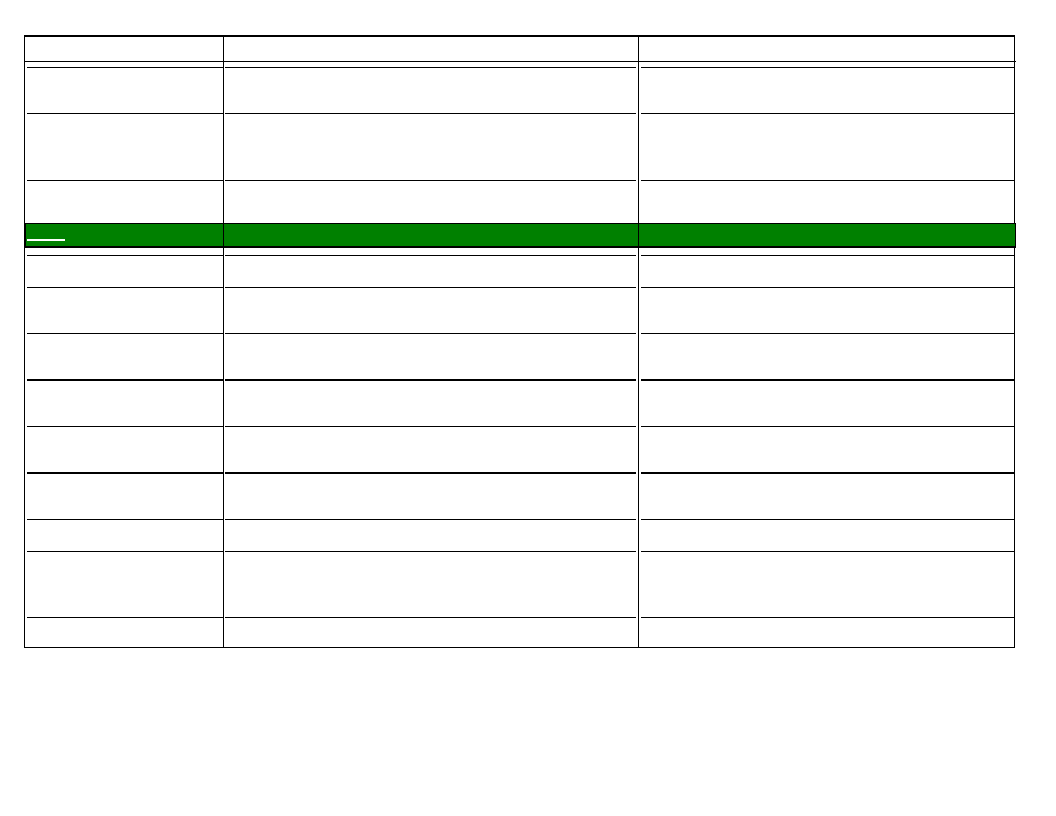
Adaptive Capacity Type
Existing_Capacity
Capacity_Gap
INNOVATION
FLEXIBLE AND FORWARD
LOOKING DECISION -
MAKING AND PLANNING
INSTITUTIONS
Sector
Traditional harvesting Machine (created by school
community )
Government is committed to improve access and quality
of education in the woreda
Government institution and Wolaita Development
Association
WOMEN & CHILDREN
Lack of supporting mechanism
-
Lack of NGOs support
ASSETS - HUMAN CAPITAL
Total available human resource 85%
Lack of available human resource 15%
ASSETS - SOCIAL CAPITAL
ASSETS - PHYSICAL
CAPITAL
ASSETS - FINANCIAL
CAPITAL
ASSETS - NATURAL
CAPITAL
KNOWLEDGE AND
INFORMATION
INNOVATION
Availability of social interaction like Debo, Edir and
Equb
Availability of office and furniture
Government budget
-
Empower women
-
Decreasing of cooperation due to economic
hardship
Shortage of awareness and lack of budget
Low saving habit
Lack of budget
-
Lack of permanent education system
-
FLEXIBLE AND FORWARD
LOOKING DECISION -
MAKING AND PLANNING
INSTITUTIONS
Flexible and good decision making
Government institution, RUSACD and Omo micro finance
Lack of community participation on planning
activity
Lack of awareness on integrating gender issue
Source: WDRP [Information about WASH -access to water and sanitation-, HEALTH -status, status by kebele, health facilities and access to water-,
INFRASTRUCTURE, -access to road and market-, FINANCE AND ECONOMICS -Access to market or to credit facilities, formal & informal transfers-, CROP -Water
for irrigation, status of agriculture, land of ownership and crops grown-, LIVESTOCK -Livestock ownership and changes, water and pasture availability for
livestock-, NATURAL RESOURCES MANAGEMENT -Environmental problems, general quality-, EDUCATION and GENDER] and workshop
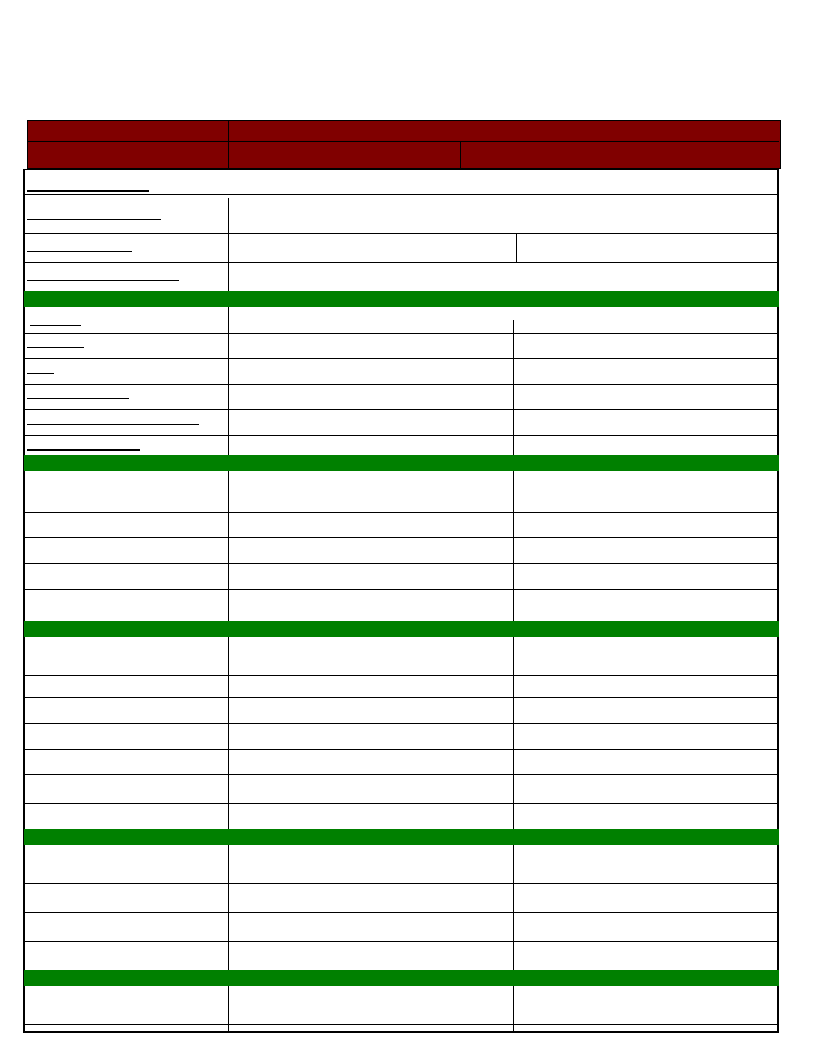
SCENARIO CHARACTERISTICS
This section provides with details of the probable impact/s, effects and negative consequences of the
Contingency. Knowing the losses allows having a clear idea of the magnitude of the likely impact and it is
Possible to estimate a number of planning assumptions for likely needs, both in terms of response capacity
And resource need. Better use range of figures rather than specific number.
Field
Most likely Scenario
Description
Worst Scenario
Potential Hazard: Crop diseases and Pest
Description of Disaster
Due to crop diseases the woreda has been affected by loss of yield, food shortage,
malnutrition
Kebeles_Affected
All Kebeles
All kebeles
Estimated_Date_Duration
Affected
Displaced
Died
Gender_Affected
Description of Gender_Issues
Vulnerable_Groups
Description of Crop damage
March - June (Belge season), August to November (Meher season)
People
About 88,000 people are affected
-
About 118,000 people will be affected
-
-
-
Men 9535, Women 7215
Man 13103, Women 8012
Children and pregnant and lactating women will Children and pregnant and lactating women
be the most vulnerable groups due to food
Pshreorgtnaagnet and lactating women 31%, People living
with HIV/AIDS 0.2%, DisableCdropepople 3.5% and
ewfAofsioflecldocbstmehwpotahirltrelaebgmdeeothostigmvhuolsntelrikaebllye sgcreonuaprsioduethteo
elder 9.2%
Crop production and income from sell of crops High crop damaged and all kebeles of the
may decreased a
woreda will be affected
Total crop area damaged (ha) 4000 ha. Are damaged
Types of Crops affected
Haricot Bean Maize
Wheat
Indicate area damaged
2800 ha.
1000 ha.
1500 ha.
Other damages
-
Description of Livestock Damage
Livestock
14,500 ha. Will damaged
Haricot Bean Maize
5600 ha.
5000 ha.
-
Wheat
4550 ha.
Livestock types
Number of livestock affected
Number of livestock died
Livestock disease outbreak
Pasture land damaged (ha)
Other Damages
Description of health effects
---------
---------
---------
Human Health
---------
---------
---------
Human disease outbreak
No. People sick (Morbidity)
No. People died (Mortality)
---------
Desc. of Malnutrition effects
---------
---------
Nutrition
---------
---------
---------
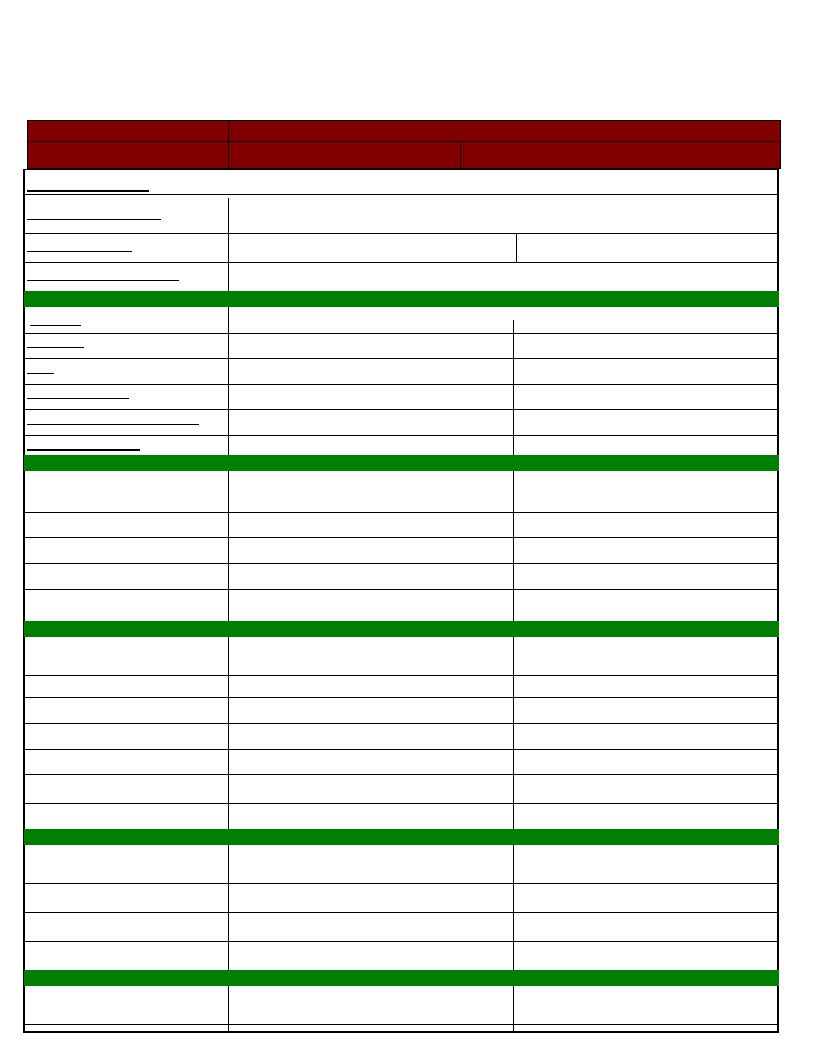
SCENARIO CHARACTERISTICS
This section provides with details of the probable impact/s, effects and negative consequences of the
Contingency. Knowing the losses allows having a clear idea of the magnitude of the likely impact and it is
Possible to estimate a number of planning assumptions for likely needs, both in terms of response capacity
And resource need. Better use range of figures rather than specific number.
Field
Most likely Scenario
Description
Worst Scenario
Potential Hazard: Drought
Description of Disaster
Crop damage, shortage of water and pasture and loss of income
Kebeles_Affected
All kebeles
All kebeles
Estimated_Date_Duration
Affected
Displaced
Died
Gender_Affected
Description of Gender_Issues
Vulnerable_Groups
Description of Crop damage
January- June
People
About 62,091 are affected
-
About 85,662 people will be affected
-
-
-
Of the total population 29,610 are men & 32,481 Of the total population 41,750 are men &
are women
Children and pregnant and lactating women will
43,912 are women
Children and pregnant and lactating women
be affected
Pregnant and lactating women 31%, Children
Awsilcl obme paaffreecdtteod most likely scenario most
56%, Displaced 3.5% Elder 9C.1ro%pand people with people will be vulnerable
HIV/AIDS 0.3% are affected
Loss of crop production
As a result of high crop damaged
malnutrition may increased
Total crop area damaged (ha) 5,800 ha.
11,000 ha.
Types of Crops affected
Maize
Haricot Bean Beans
Maize
Haricot Bean Teff
Indicate area damaged
1500 ha.
2804 ha.
500 ha.
2551 ha.
5251 ha.
1825 ha
Other damages
-
-
Livestock
Description of Livestock Damage Shortage of pasture and water may affect
livestocks production
Livestock types
Bovine
Poultry
Eqiunes
Number of livestock affected
20,000
3,000
150
Livestock damage, loss of income and
unusual migration
Bovine
Eqiunes
Poultry
35,000
4,000
200
Number of livestock died
Livestock disease outbreak
Pasture land damaged (ha)
175
18
7
320
55
13
Trypanosomiasis, GIT parasites and Pasturollosis Trypanosomiasis, GIT parasites and
Pasturollosis
950 ha.
1270 ha.
Other Damages
Description of health effects
Human disease outbreak
-
-
Human Health
Hygiene and sanitation problem and shortage of In connection with poor hygiene and
food may expose to different human
sanitation, shortage of water and food,
Malaria
Diarrhea
Measles
Malaria
Diarrhea
Measles
No. People sick (Morbidity)
No. People died (Mortality)
Desc. of Malnutrition effects
1400-1600
1300-1500
5-10
3000-5000 2000-3000 20-30
-
-
-
3
3
-
Nutrition
Due to low intake of balanced diet malnutrition Malnutrition case on children, pregnant and
among children, pregnant and
lactating women may getting high and
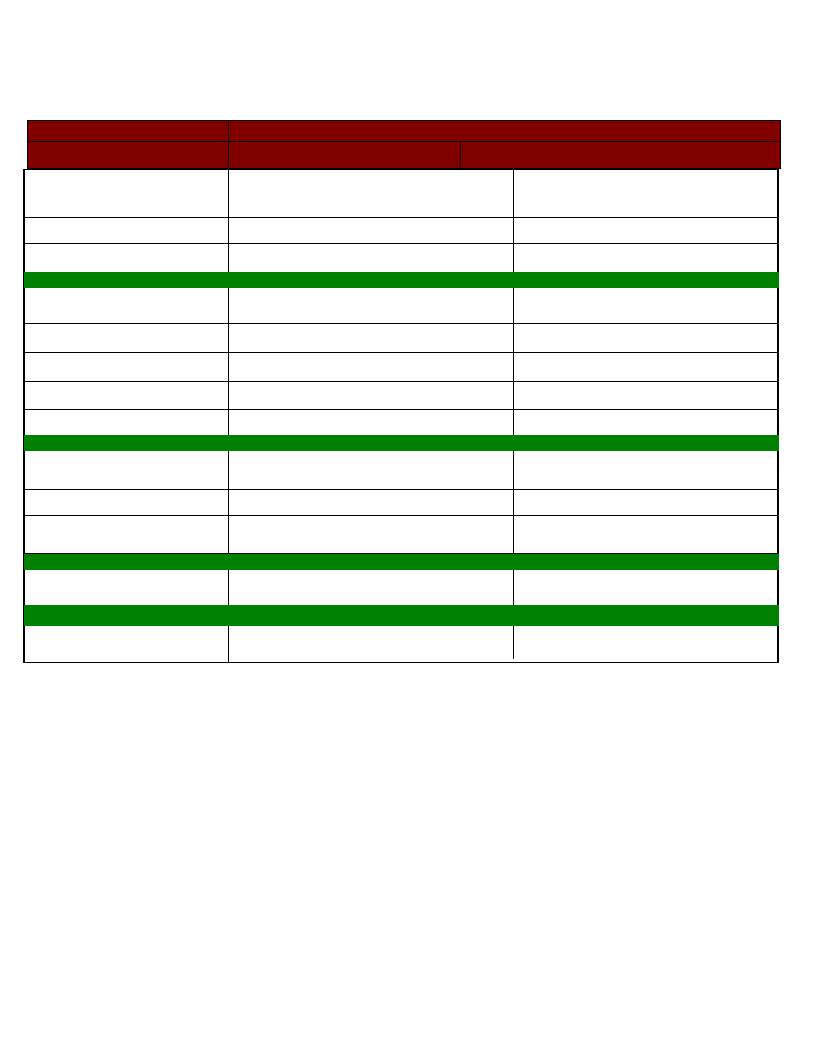
SCENARIO CHARACTERISTICS
This section provides with details of the probable impact/s, effects and negative consequences of the
Contingency. Knowing the losses allows having a clear idea of the magnitude of the likely impact and it is
Possible to estimate a number of planning assumptions for likely needs, both in terms of response capacity
And resource need. Better use range of figures rather than specific number.
Field
Most likely Scenario
Description
Worst Scenario
MAM (Moderate Acute
Malnutrition)
Children (6-59 mths) Pregnant....
560
580
Expected...
4.5
Children (6-59 mths) Pregnant..
700
800
Expected
6
SAM (Severe Acute Malnu...)
94
10
0.4
250
60
1.2
Total expected cases
Description Water problems
700
650
5.3
WASH
During drought period different water schemes
discharge may decreased and
1100
8.3
1000
21 kebeles may be highly affected
No. of water facilities damaged 56 Wpt, 7 SW, 3 BH and 3 SWD
96 Wpt, 15 SW, 4 BH and 6 SWD
People in need of water
assistance
Description Sanitation Effects
Description of Hygiene affects
Description Education Problems
63,355 (45%) of the total population of the
woreda
Due to water shortage and people may use
unprotected water source
Due to poor hygiene water born disease will
affect the community
Education
91,140 (60%) of the total population
Poor environmental sanitation may occur
Water born disease may increase
significantly
Late comers, absentees and drop out of students
may increased
No. of school affected (drop-outs) 12 schools
Up to 20 schools
Number of students to be
affected
Description of infrastructure
damaged
Other humanitarian
consequences
1429 students may affected from January - May 2119 students will be affected from
January - May
Infrastructure
Other humanitarian consequences

EARLY WARNING INDICATORS & TRIGGERS
Drought
Early Warning Indicators
(observations or signals to
follow up the situation)
Triggers (points when
emergency interventions
should start)
Early Warning Indicators &Triggers
CROP
Late of rainfall by 1 2 week
Below normal rainfall
LIVESTOCK
poor availability of pasture and water
poor livestock body condition
Unusual movement of animals
Loss of productivity
WASH
Decreasing amount of water source (Schemes)
HEALTH
Increase malnutrition case
EDUCATION
Dropout increase
Increase student absenteeism
GENDER
Shortage of food and clean water
Increase illness of children and women
Shortage of food in HH level
FOOD & NONFOOD
Shortage of rainfall
CROP
- After planting/sowing late of rainfall 2- 3 weeks
- Crop failure
LIVESTOCK
- 50% livestock loss of body Wight
- 65 % shortage of forage
- 3% of animal recumbent
- Unusual migration of livestock
WASH
- Non functionality of water coverage increasing to 14%-31%
HEALTH
- High number of malnourished children
EDUCATION
- Dropout rate increase above 3%
- Late comers above 3%
GENDER
- High malnutrition case of women and children
FOOD & NONFOOD
- Shortage of food
- Shortage of water from December to may
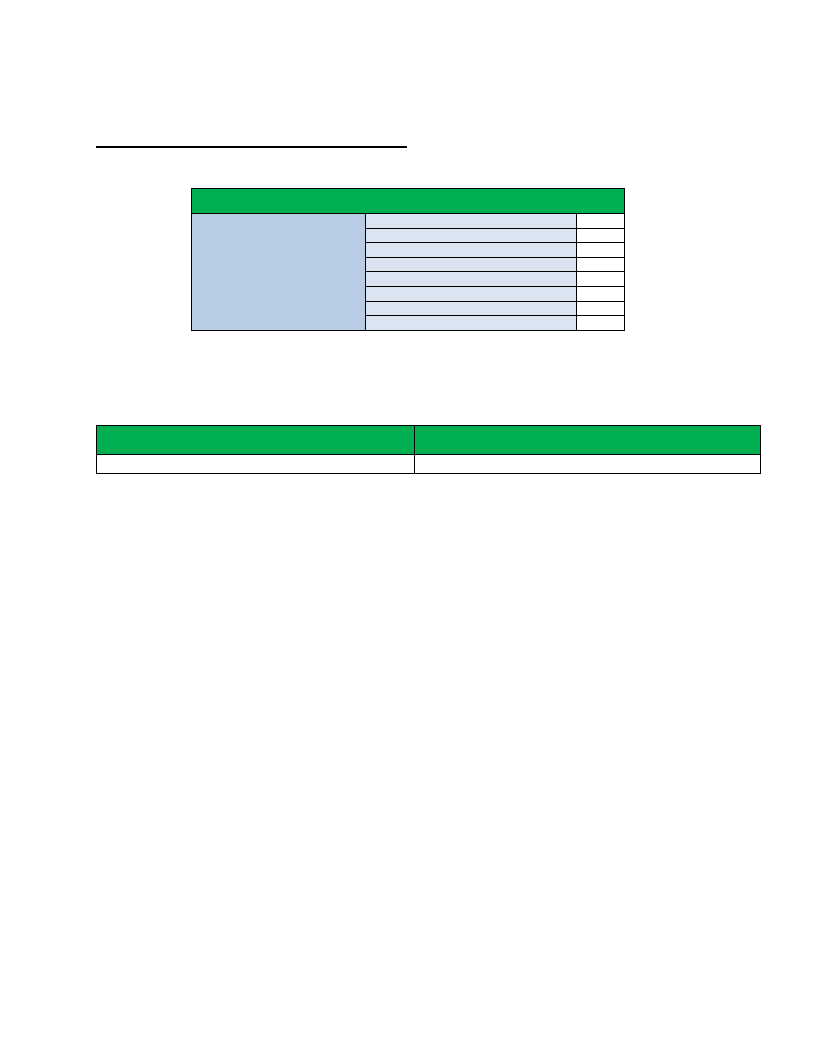
MERGENCY SUPPORT FUNCTIONS ACTIVATION
Indicate which Emergency Support Functions will be involved for this specific hazard and most likely scenario.
EMERGENCY SUPPORT FUNCTIONS
Coordination
X
Crop
X
Make X in the ESF that will Livestock
X
be activated
WASH
X
Health
X
Education
X
Food and Non-Food Items
X
Gender
X
Source: Workshop
According this scenario and seasonal calendar of the risk Analysis:
Estimative period of year for Preparedness activities
December and January
Source: Seasonal Calendar
Estimative period of year for Response & Early Recovery
activities
February to June
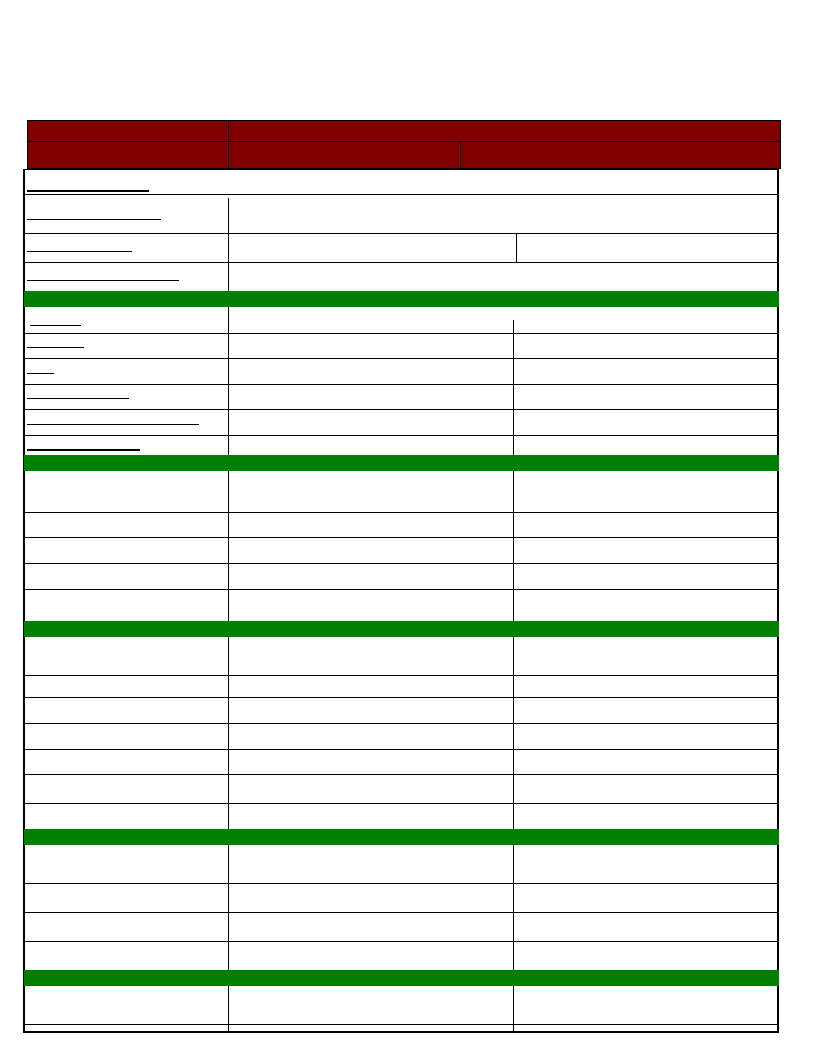
SCENARIO CHARACTERISTICS
This section provides with details of the probable impact/s, effects and negative consequences of the
Contingency. Knowing the losses allows having a clear idea of the magnitude of the likely impact and it is
Possible to estimate a number of planning assumptions for likely needs, both in terms of response capacity
And resource need. Better use range of figures rather than specific number.
Field
Most likely Scenario
Description
Worst Scenario
Potential Hazard: Livestock diseases
Description of Disaster
Livestock disease may result loss of income and productivity
Kebeles_Affected
Estimated_Date_Duration
Affected
Displaced
Died
Gender_Affected
Description of Gender_Issues
Vulnerable_Groups
Description of Crop damage
All kebeles
All kebeles
December- June
17,500
-
People
22,500
-
-
-
Men 10,530, Women 12,720 are affected
Men 14,605, Women 17,650 of the total
population will be affected
Children 57%, Pregnant and lactating women
33%, People with HIV/AIDS1C%roanpd elder 9%
As compared to most likely scenario all
human elements will be more vulnerable
Total crop area damaged (ha)
Types of Crops affected
Indicate area damaged
---------
---------
---------
Other damages
Livestock
Description of Livestock Damage Death of livestock and loss of income
---------
---------
---------
Death of livestock and
Livestock types
Number of livestock affected
Number of livestock died
Livestock disease outbreak
Pasture land damaged (ha)
Other Damages
Description of health effects
Human disease outbreak
No. People sick (Morbidity)
No. People died (Mortality)
Desc. of Malnutrition effects
Bovine
Poultry
Eqiunes
95,000
25,500
500
230
440
42
FMD, Anthrax, Newcastle disease, Blackleg,
Pasturollosis, LSD, PPR, Shoat pox,
-CBPP,CPP,AHS
-
Human Health
Shortage of water leads to poor sanitation and
hygiene this situation aggravates human
Anthrax
Robis
TB Bovine
Bovine
11,500
Eqiunes
30,000
Poultry
700
550
630
87
FMD, Anthrax, Newcastle disease, Blackleg,
Pasturollosis, LSD, PPR, Shoat pox, CBPP,
-CPP, AHS
-
Human disease outbreaks will be high
Anthrax
Robis
TB Bovine
30-45
5-10
1
50-100
10-15
2-5
-
-
-
2-3
2-4
1-2
Nutrition
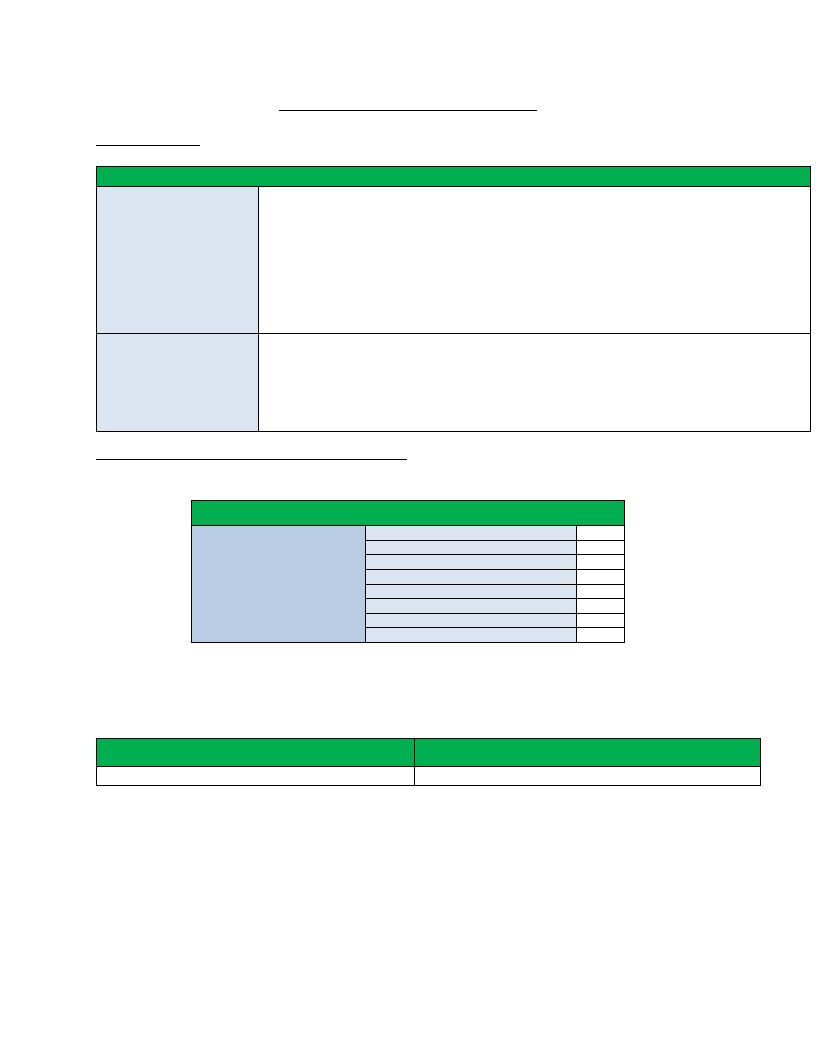
EARLY WARNING INDICATORS & TRIGGERS
Livestock disease
Early Warning Indicators
(observations or signals to
follow up the situation)
Triggers (points when
emergency interventions
should start)
Early Warning Indicators &Triggers
LIVESTOCK
- Occurrence of disease outbreak at adjacent woreda
- Sudden death of livestock
- Internal and external parasite
- Decreasing of animal market price
FOOD AND NON FOOD
- Decreasing of animal market price
- Loss of animal body condition
- Loss of productivity
LIVESTOCK
- Disease outbreak
- Mortality rate of livestock approaches up to 1%
FOOD AND NON FOOD
- Loss of income
- Livestock damage
MERGENCY SUPPORT FUNCTIONS ACTIVATION
Indicate which Emergency Support Functions will be involved for this specific hazard and most likely scenario.
EMERGENCY SUPPORT FUNCTIONS
Coordination
X
Crop
Make X in the ESF that will Livestock
X
be activated
WASH
Health
X
Education
X
Food and Non-Food Items
X
Gender
X
Source: Workshop
According this scenario and seasonal calendar of the risk Analysis:
Estimative period of year for Preparedness activities
October and November
Source: Seasonal Calendar
Estimative period of year for Response & Early Recovery
activities
December – May
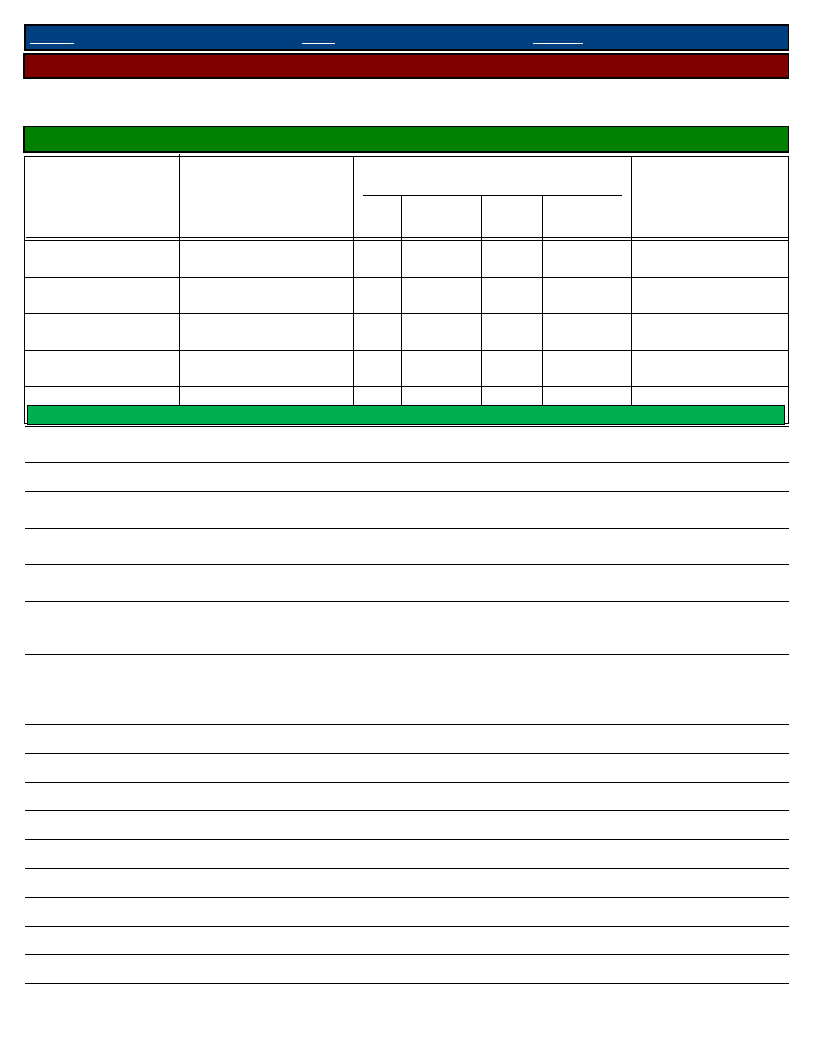
Region S.N.N.P
Zone WOLAYITA
Wereda DAMOT GALE
RESOURCES REQUIRED
This section provides information about the resources required to respond to the specific contingency according to the
scenario.
Crop diseases and Pest
Emergency Support
Function
Agriculture (Crop)
Agriculture (Crop)
Quantity needed for the minimum
emergency response
Description_Of_Resource Unit
Unit_ Total
Total
Cost (Br) Qty Cost (Br) Source_Of_Resource
Dimethoate 40% EC
Lt.
Karate
Lt.
Malatine
Lt.
220 1,000
520
200
220 1,000
220,000
104,000
220,000
Zone and Regional
agriculture office
Zone and Regional
agriculture office
Zone and Regional
agriculture office
Tilt
Lt.
520
750
390,000 Zone and Regional
agriculture office
Mancozeb 80 Wp mancozeb Kg.
Drought
Haricot bean
Qtl.
80
550
1,913 2,804
44,000
>>
5,364,052
Woreda, Zone and
Regional office
Maize
Qt.
2,950
100
29,500 Regional and zonal
Wheat
Irish potato
Sweat potato
Agriculture (Livestock) Hay
Concentrate feed
Health and Nutrition
Plumpy nut
Qt.
Qt.
Cutting
Bell
Kg.
Box
1,450
400
850 1,000
4
1,512,500
100 11,667
610 3,500
0
420
580,000 Regional/zonal agriculture
office
850,000 Regional/zonal agriculture
office
6,050,000 Regional/zonal agriculture
office
1,166,700 Woreda contingency fund,
Zone & region livestock
office
2,135,000
Woreda Early warning &
food security,
Regional/zonal sectoral
Office
0
Unicef & WFP
Compact pack of 10
Box
0
100
0
Unicef & WFP
F-100 bag 100
Box
0
50
0
Unicef & WFP
F-75 Bag/100
Box
0
40
0
Unicef & WFP
Amoxicillin tab 1000
Tin
0
50
0
Unicef & FMOH
Amoxicillin syrup
Bottle
0
430
0
Unicef & FMOH
Gentamycin injection
Box
0
10
0
Unicef & FMOH
Ampicillin injection
Box
0
10
0
Unicef & FMOH
Ceftriaxone
Box
0
5
0
Unicef & FMOH
Resomal (ORS) 100
Box
0
10
0
Unicef & FMOH
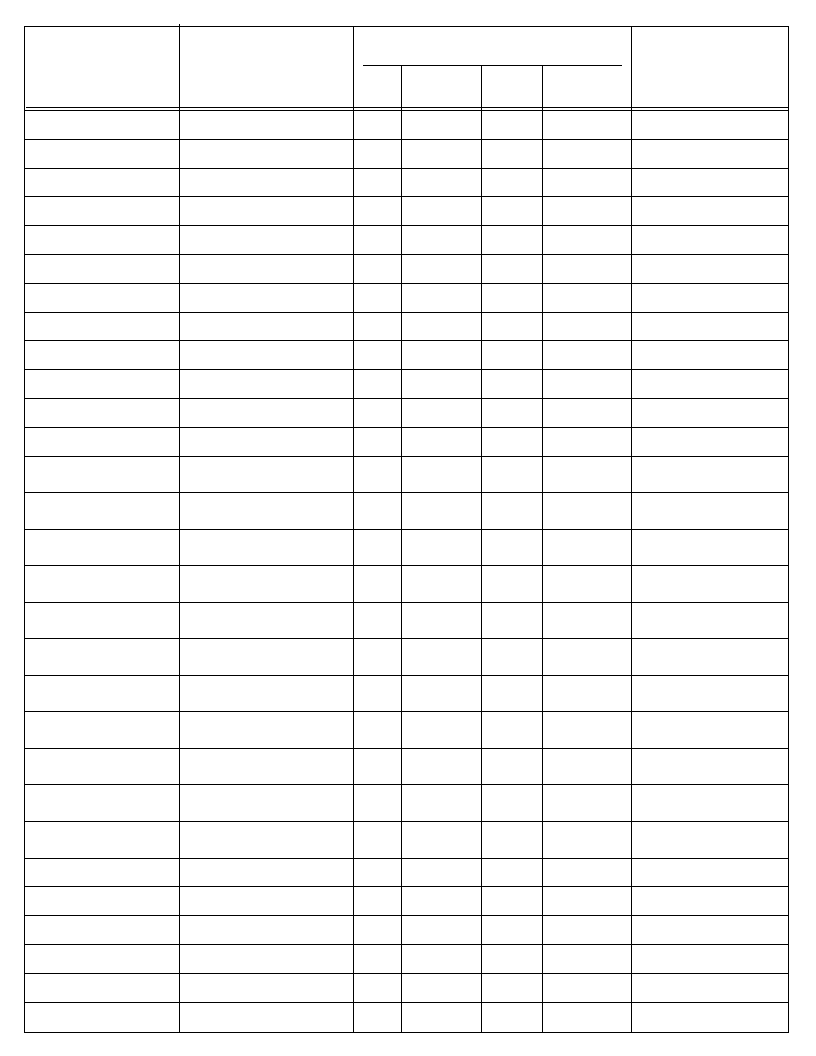
Emergency Support
Function
Health and Nutrition
Quantity needed for the minimum
emergency response
Description_Of_Resource Unit
Unit_ Total
Total
Cost (Br) Qty Cost (Br) Source_Of_Resource
Glucose 40%
0
50
0
Unicef & FMOH
Ringer Lactate 1000 ml.
Box
0
50
0
Unicef & FMHO
NG tub
each
0
200
0 Unicef , WHO and FMOH
Zinc strip 100 ab
Box
0
10
0 Unicef, FMOH and WHO
Vitamin A Capsule 500 tab Tin
0
30
0 Unicef, FMOH and WHO
Iron sulphate /feso 4 tab
Tin
0
30
0 Unicef, FMOH and WHO
Albendozele tab 1000 tab Tin
0
20
0 Unicef, FMOH and WHO
Coarten Stripoof tab
Box
0
10
0 FMOH, Unicef and WHO
Ceunine tab
Tin
0
10
0 FMOH, Unicef and WHO
Ceunine injection
Box
0
5
0 FMOH, Unicef and WHO
Chloroguin
Tin
0
10
0 FMOH, Unicef and WHO
CSB
Qt.
4,000
428
1,712,000 World food program
WASH (Water, Sanitation
and Hygiene)
Water treatments - Chlorine
Water Agar
Kg.
Bottle
Aqua tab
Carton
Beshan gar
Dose
Water Tracking
m3
Get valve 1 1/2'
Pes
Cheek valve 2'
pes.
GI-Pipe 1 1/2'
Pes.
GI- pipe 2'
Pes.
GI-pipe 1 1/4'
Pes.
PVC 75mm (2')
Pes.
HDPE 32 mm (1')
m
4
800
2 15,800
3 15,800
5 15,800
12 800,000
300
25
700
8
800
80
2,500
200
600
45
40
400
45 3,000
3,200
31,600
47,400
79,000
9,600,000
7,500
5,600
64,000
500,000
27,000
16,000
135,000
Region and zone water
office
Region and zone water
office
Region and zone water
office
Region and zone water
office
Region and zone water
office
Woreda, HABP, zone,
Region
Woreda, HABP, Zone,
Region
Woreda, HABP, Zone,
Region
Woreda, HABP, Zone,
Region
Woreda, HABP, Zone,
Region
Woreda, HABP, Zone,
Region
Woreda,Zone, Region
Faucet 3/4'
Pcs.
80
100
8,000 Woreda,Zone, Region
Education
Grain
Kg.
1,100 128,610 141,471,000
WFP
Pulse
Kg.
1,500 12,861 19,291,500
WFP
Oil
Lt.
75 4,287
321,525
WFP
CSB
Kg.
4,000 53,588 214,350,000
WFP
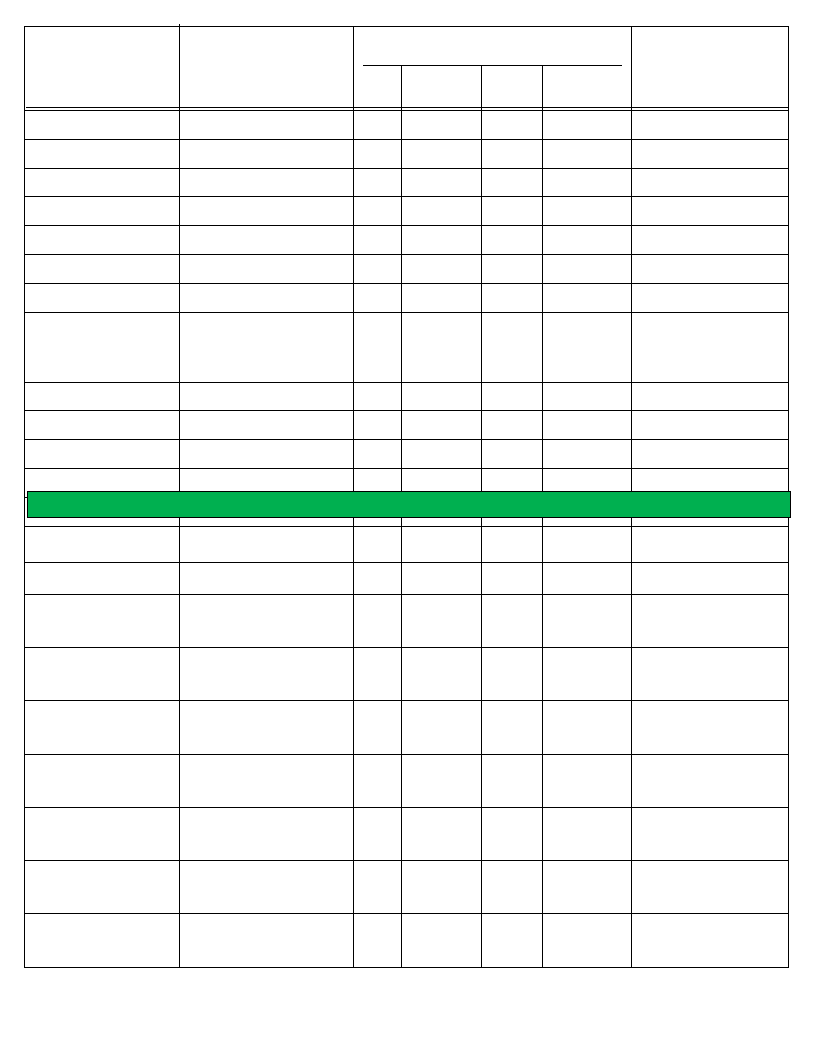
Emergency Support
Function
Education
Quantity needed for the minimum
emergency response
Description_Of_Resource Unit
Unit_ Total
Total
Cost (Br) Qty Cost (Br) Source_Of_Resource
Salt
Kg.
10 8,574
85,740
WFP
Cooking dish
No.
1,000
9
9,000
WFP
Spoon
No.
100 1,429
142,900
WFP
Cup (water glass)
No.
10 1,429
14,290
WFP
Flat dish
No.
25 1,429
35,725
WFP
Wood
Bayjo
7,500
6
45,000
WFP
Spices
Kg.
12,000 36,000
432,000
WFP
Food and Non-food Items
(shelter, clothing,
bedding and household
items)
Grain
Pulse
Qtl.
1,100 9,314 10,245,015
Zone and Region
Qtl.
1,500
931
1,397,048
Region
Oil
Lt.
75 27,941
2,095,571
Region
CSB
Qt.
4,000 1,358
5,432,960
Zone, Region
Livestock disease
Agriculture (Livestock) Vaccine
Dose
Albendazole
Box
Ivermectin
Vial
Ox tetracycline
Vial
Penistrip
Vial
Multivitamin
Vial
Amprolium and OXITC powder Sachet
Source: Workshop
2 350,000
180 1,167
20 1,750
40 3,950
135 3,440
125 2,550
80
250
525,000 Woreda contingency fund,
Zone & region livestock
office
210,000 Woreda contingency fund,
Zone & region livestock
office
35,000 Woreda contingency fund,
Zone & region livestock
office
158,000 Woreda contingency fund,
Zone & region livestock
office
464,400 Woreda contingency fund,
Zone & region livestock
office
318,750 Woreda contingency fund,
Zone & region livestock
office
20,000 Woreda contingency fund,
Zone & region livestock
office
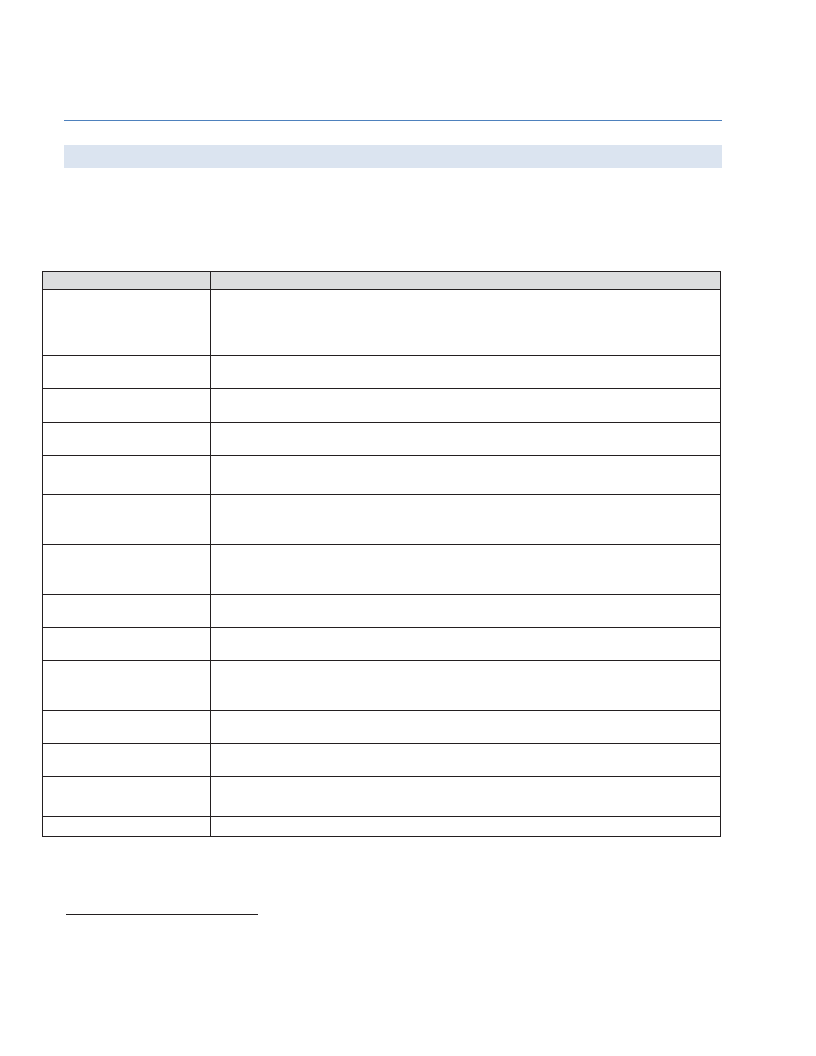
III. EMERGENCY SUPPORT FUNCIONS (ESF)
DESCRIPTION
The Emergency Support Functions (ESF) are focused on critical operational functions necessary for an
emergency response. These annexes clearly describe the processes, roles, and responsibilities that the
Wereda offices and stakeholders carry out for preparedness and for response to and early recovery from a
likely disaster.
ESF
Coordination
Agriculture (Crop)
Agriculture (Livestock)
Health & Nutrition
Water, Sanitation and
Hygiene (WASH)
Education
Food and shelter
Gender
Logistics and transport
Communication
Search and Rescue
Federal Affairs
Refugees and
returnees
…
Description/Main Responsibilities5
The Coordination ESF will be in charge of the emergency response coordination. It will be
in charge of following up the consecution of the objectives of every ESF activated for any
response and the coordination among them as well as the follow up of the main activities
and responsibilities adopted in the Basic Plan.
The Crop ESF will coordinate the emergency response addressed to protect the crop and to
recover it after a likely disaster
The livestock ESF will coordinates the emergency response addressed to protect the
livestock and to recover it after a likely disaster
The Health & Nutrition ESF will cover the aspects of the emergency response related with
the health and malnutrition of the people affected
The WASH ESF will cover the aspects of the emergency response related with the water
supply, sanitation and hygiene of the people affected
The Education ESF will cover the aspects of the emergency response related with the
education in order to maintain the access to education to the children of the population
affected
The Food and Shelter ESF will cover the aspects of the emergency response related with
the food assistance and the provision of Non Food Items (shelter, clothing, bedding and
household items) for the people affected
The Gender ESF will cover the aspects of the emergency response related with gender
issues and to mainstream this gender issues in the different humanitarian assistance
The Logistics and Transport ESF will cover the aspects of the emergency response related
with the logistics and transport necessary to provide the different humanitarian assistance
The communication ESF will cover the aspects of the emergency response related with the
communications in order to inform properly the stakeholders, the different administrative
levels and the community about the humanitarian situation
The Search and Resuce ESF will cover the aspects of the emergency response related with
search and rescue when this will be required
The Federal Affairs ESF will cover the aspects of the emergency response related conflict
inside of the Ethiopian territory
The Refugees and Returnees ESF will cover the aspects of the emergency response related
with the first assistance to refugees and returnees.
…
5 The guidelines proposes description and Main responsibilities of every ESF. However, every wereda will contextualize
and will make changes according with the context and
91
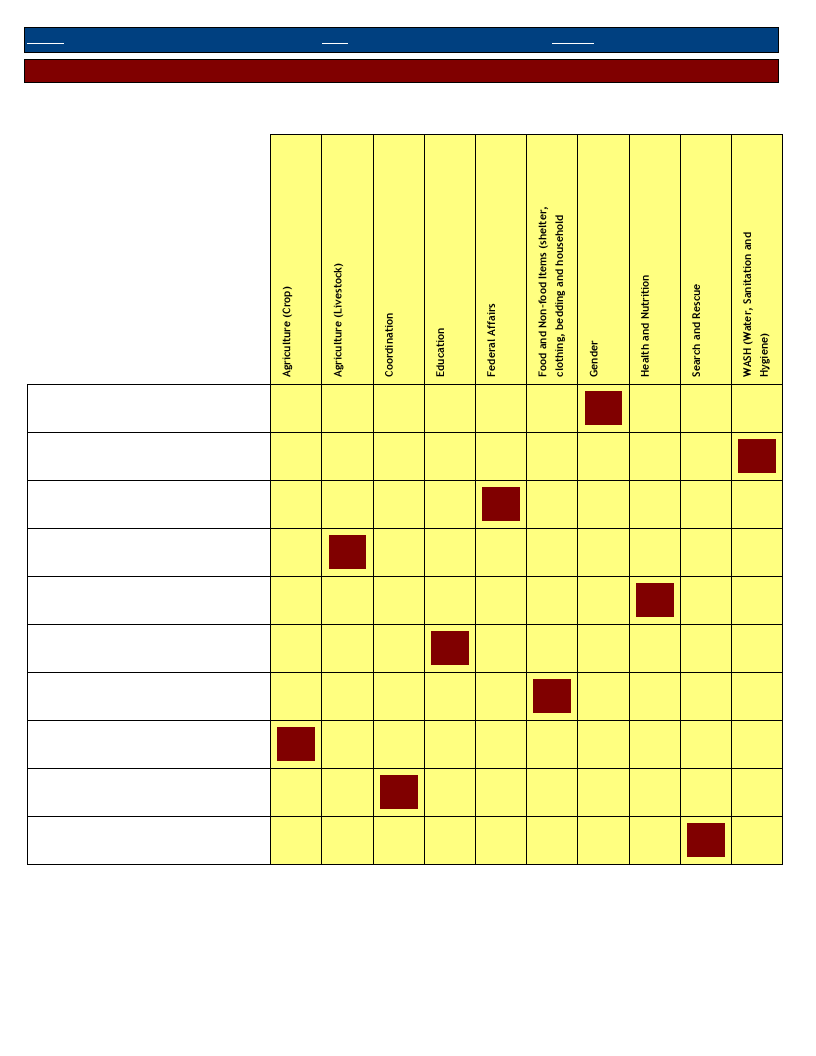
Region S.N.N.P
Zone WOLAYITA
Wereda DAMOT GALE
RESPONSIBILITY MATRIX
The matrix below summarizes which tasked organizations have the primary lead (mark with P) versus secondary
or supporting roles (mark with S) for each defined emergency support function]
Wereda Women and Children Office
Wereda Water Resource
Development Office
Wereda Police Station
Wereda Livestock and Fishery
Development Office
Wereda Health Office
Wereda Education Office
Wereda Disaster Preparedness and
Prevention Office (DPPO)
Wereda Agriculture Office
Wereda Administration Office
Peace and Security Office
S
S
S
S
S
S
P
S
S
S
S
S
S
P
S
S
S
S
P
S
S
S
S
P
S
S
S
S
P
S
S
S
P
S
S
S
S
S
S
P
S
S
P
S
P
S
S
S
S
S
S
S
S
S
P
S
Source: WDRP (Government Actors in the field of Disaster Risk Management, Non-government Actors in the field
of Disaster Risk Management, Community institutional development status) and Workshop
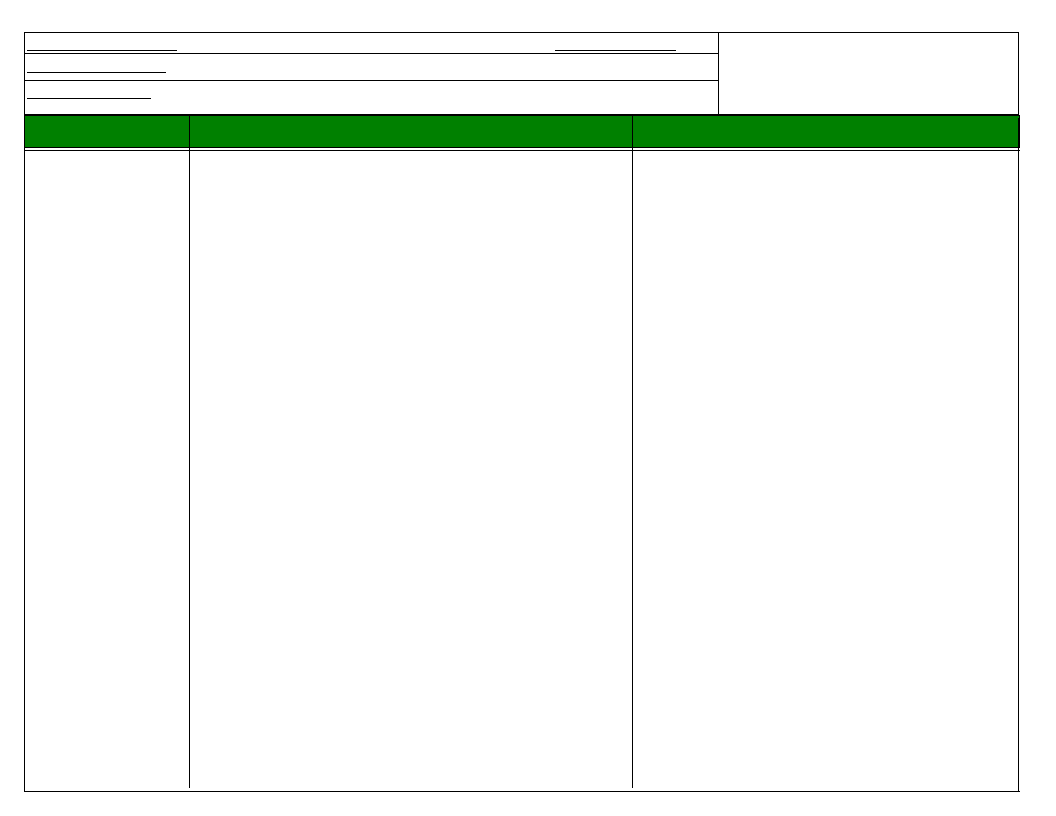
Emergency_Support_Function
Coordination
ESF_National_Standards
The Sphere project: Humanitarian Charter and
Primary_Lead_Organization
Supporting_Organization
Administration
Agricultural office, WASH, Education office, Health office, DRM, women and children
Minimum Standards in Humanitarian Response
(2011), Sectorial guidelines in Ethiopia
Hazard [It can be for any
affairs
Preparedness
Response / Early Recovery
hazard or can be specific]
(Actions that should be done in advance, before the disaster occurs to
(Actions that should be done once the disaster occurs to respond
For any hazard
- The Contingency Plan is updated and approved by the Wereda
Administration
- Coordinate all offices and stakeholders have the Contingency Plan,
know their roles and responsibilities and are adequately trained for
emergency response management
- Coordinate the update of the preparedness and response actions for
the Emergency Support Functions
- Ensure that emergency coordination mechanisms (see Basic Plan) are
in place at wereda level to discuss and make
decisions/recommendations to higher levels.
- Establish clear line of communication and two way feedback
mechanisms at woreda, zonal and regional level
- Coordinate with the ESF the collection, monitoring and analyze data
for Early Warning System and establish triggers for action
- Use Wereda Disaster risk Profile to know the risk factors and effects of
likely disasters
- According the scenario estimated in the Wereda Contingency Plan,
coordinate that every ESF start preparation of sufficient resources
ensure continuity, equity and quality of ESF activities during the
emergency
- Ensure that relevant guidelines with standards and for emergency
responses are available at woreda and the different ESF and experts
know them.
- Review the historical emergency record of previous disasters to
prepare better response according with lesson learns
- Coordinate an exercise of the Contingency Plan, making a simulation
(top table exercise) to know how to use it and how to responds and
emergency
- Prepare and assign timely sectorial experts that should participate in
the rapid response team for needs assessment
- Prepare community representatives to know basic aspects of the
emergency response management
- Prepare agreements with stakeholders to support a likely emergency
response
GENDER MAINSTREAMING
- Ensure that ESF mainstream gender issues
Ensure women participation in the preparedness planning and
- Upon Early Warning triggers, activate and coordinate
response of the Emergency Support Functions
- Upon receipt of alert, rumor or detection of deviation the
condition from the expected trend while performing Early
Warning analysis, communicate the respective level
immediately for verification
- Declare Wereda Disaster if necessary
- Ensure that emergency coordination mechanisms (see Basic
Plan: task force meetings, Disaster Prevention and
Preparedness Committee or adequate coordination mechanism)
are in place
- Initiate timely rapid need assessment to assess impact
- Coordinate the scenario updating of Wereda Contingency Plan
and initiate response strategy and activities of each Emergency
Support Function
- Intensify the Early Warning System and distribute regular
information about emergency situation
- Resource mobilization
- Ensure that responses are implemented according to the
existing guidelines (standards and protocols) in Ethiopia
- Ensure the people’s access to impartial assistance and more
vulnerable people with specific needs receive specific
assistance
- Coordinate the monitoring and evaluation of ESF
interventions, creating an historical record of the emergency.
Documentation of experiences and practices
GENDER MAINSTREAMING
- Sex- and age- disaggregated data are included for needs
assessments
- Assure that women have equal access to emergency services
- Ensure women participation in the response planning and
implementation
- To include gender issues in the sectorial historical records
RECOVERY
- Phase out plan for emergency programs as recovery activities
increase
- Determine the need for recovery or rehabilitation and
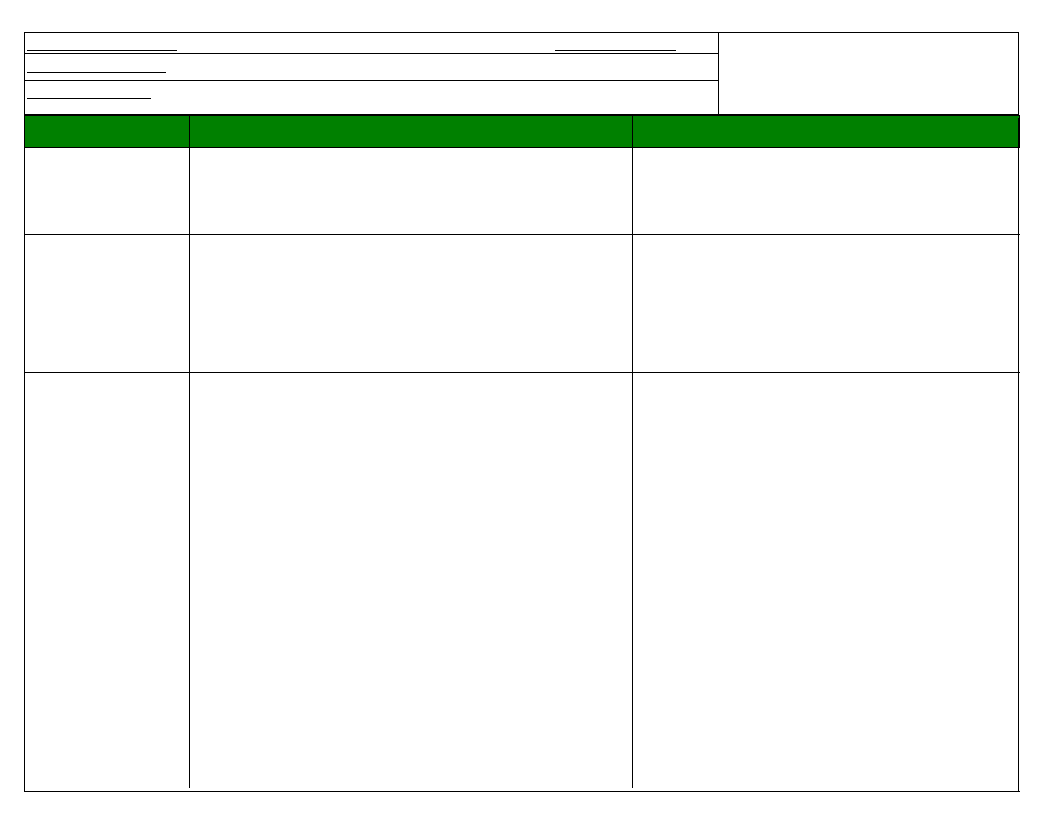
Emergency_Support_Function
Coordination
ESF_National_Standards
The Sphere project: Humanitarian Charter and
Primary_Lead_Organization
Supporting_Organization
Administration
Agricultural office, WASH, Education office, Health office, DRM, women and children
Minimum Standards in Humanitarian Response
(2011), Sectorial guidelines in Ethiopia
Hazard [It can be for any
affairs
Preparedness
Response / Early Recovery
hazard or can be specific]
(Actions that should be done in advance, before the disaster occurs to
(Actions that should be done once the disaster occurs to respond
implementation
- Consider the critical role and needs of women and girls in every sector
disseminate those needs to partners
- Request regional/Zonal government assistance for early
recovery when additional resources may be needed
- Coordinate the activities of NGOs and partners in recovery
and rehabilitation programe
Drought
- Coordinate Pre harvest (Seasonal ) assessment activities
- Establish clear line communication with woreda sectors, zonal and
regional level
- Ensure that the required resource for response are available
- Identify activity to be conducted immediately when drought occur
- Increase awareness of community to prepare and respond to crisis by
themselves
- Coordinate and activate emergency response operation based
on early warning and trigger information.
- Declare the situation in the in the woreda as a disaster, if it
is beyond the woreda response capacity
- Ensure that all allocated resources are distributed
- Monitor and evaluate the response activity
- Work with aid and governmental organizations in distributing
the required assistance
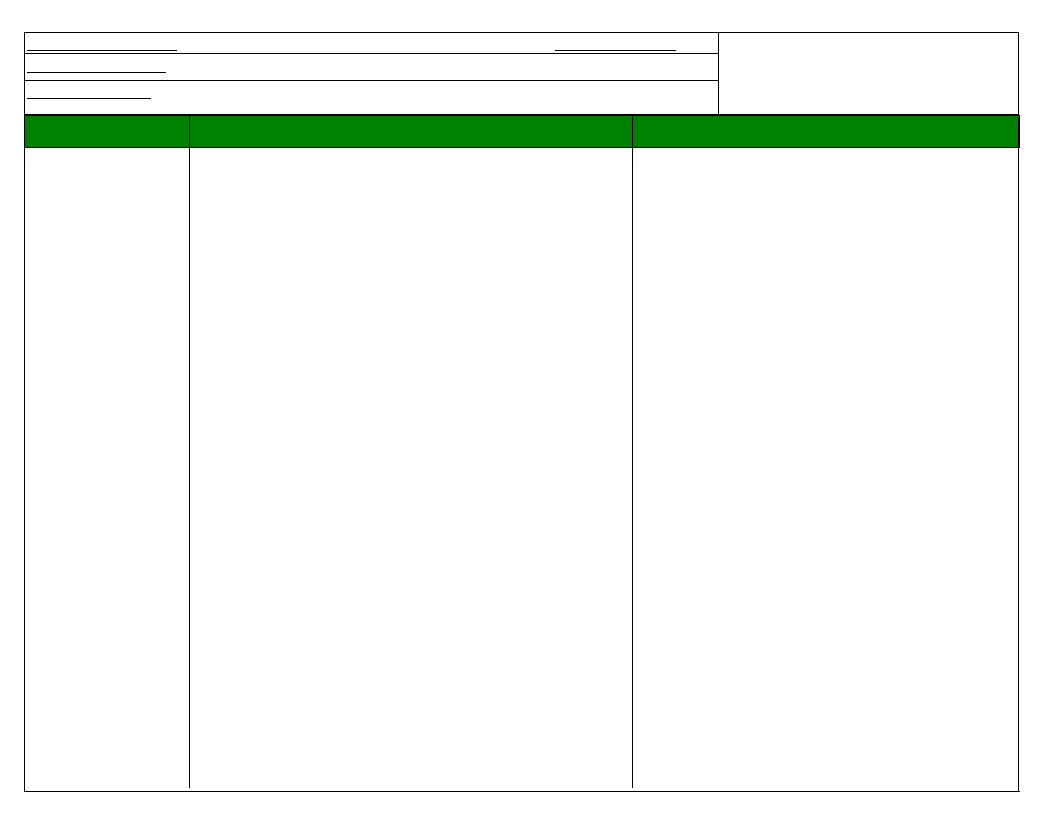
Emergency_Support_Function
Primary_Lead_Organization
Agriculture (Crop)
Agriculture Office
Supporting_Organization
Woreda Administration, WASH and NGOs
ESF_National_Standards
Emergency Seed Aid Guidelines for Ethiopia
(draft, Ethiopia 2012), The Sphere project:
Humanitarian Charter and Minimum Standards in
Humanitarian Response (2011),
Hazard [It can be for any
hazard or can be specific]
For any hazard
Preparedness
(Actions that should be done in advance, before the disaster occurs to
- Update preparedness and response actions for the CROP Emergency
Support Function
- Ensure that experts have the contingency plan and know it.
- Ensure that coordination mechanisms for Crop are in place at wereda
level to discuss and make decisions/recommendations to higher levels.
- Establish clear line of communication and two way feedback
mechanisms at woreda, zonal and regional level
- Collect, monitor and analyze Crop data for Early Warning System and
establish triggers for action
- Use Wereda Disaster risk Profile to know the risk factors and effects
(effects on the markets, land degradation, water shortages, impact in
financial capital, loss of productive assets, loss of crops… ) of likely
disasters in the Crop ESF
- Review the sectorial crop historical emergency record of previous
disasters to prepare better response according with lesson learns
- According the scenarios (crop part) estimated in the Wereda
Contingency Plan, start preparation of sufficient resources ensure
continuity, equity and quality of Crop activities during the emergency
- Ensure that relevant guidelines with standards and protocols
(Emergency Seed Aid Guideline for Ethiopia and others) for emergency
responses are available at woreda and crop facilities level and experts
know them.
- To train public agricultural personnel for crop emergency response
management
- Prepare and assign timely crop experts that should participate in the
rapid response team for needs assessment
- Prepare sufficient resources to ensure continuity, equity and quality of
crop activities during the emergency
- Identify seed system problem (unavailability of seed, or poor and
vulnerable farmers do not have access to seed, or seed of poor quality
and/or lack of appropriate varieties…) and the likely appropriate
response that would be needed.
- Analyze if crops and crops varieties to which people have access are
generally appropriate in order to know which crop it should be provided
after a likely disaster
- Analyze if the impact in crop for a likely disaster can have impact in
the food security (work in relation with food ESF)
Response / Early Recovery
(Actions that should be done once the disaster occurs to respond
- Upon Early Warning triggers, activate and coordinate
response activities of the Emergency Support Function
- Upon receipt of alert, rumor or detection of deviation the
condition from the expected trend while performing early
warning data analysis, communicate the respective level
immediately for verification
- Ensure that coordination mechanisms for crop are in place
- Initiate timely rapid need assessment to assess impact and
ensure that crop is included if necessary.
- Assess crop impact
- Update scenario of Wereda Contingency Plan and initiate
response strategy and activities
- Resource mobilization
- Ensure that responses are implemented according to the
existing guidelines (standards and protocols) for crop response
- Disseminate adequate prevention and control measure for
crop to the community and media
- Monitor and evaluate the response of crop related
interventions, creating an historical record of the emergency.
Documentation of experiences and practices
- To procure seeds for emergency interventions
GENDER MAINSTREAMING
- Sex- and age- disaggregated data are included for crop needs
and for food insecurity
- Ensure equal access to agricultural inputs and credits for
female and male farmers for early recovery
RECOVERY
- Phase out plan for emergency programs as recovery activities
increase
- Determine the need for recovery or rehabilitation and
disseminate those needs to partners
- Request Regional/Zonal government assistance for early
recovery when additional resources may be needed
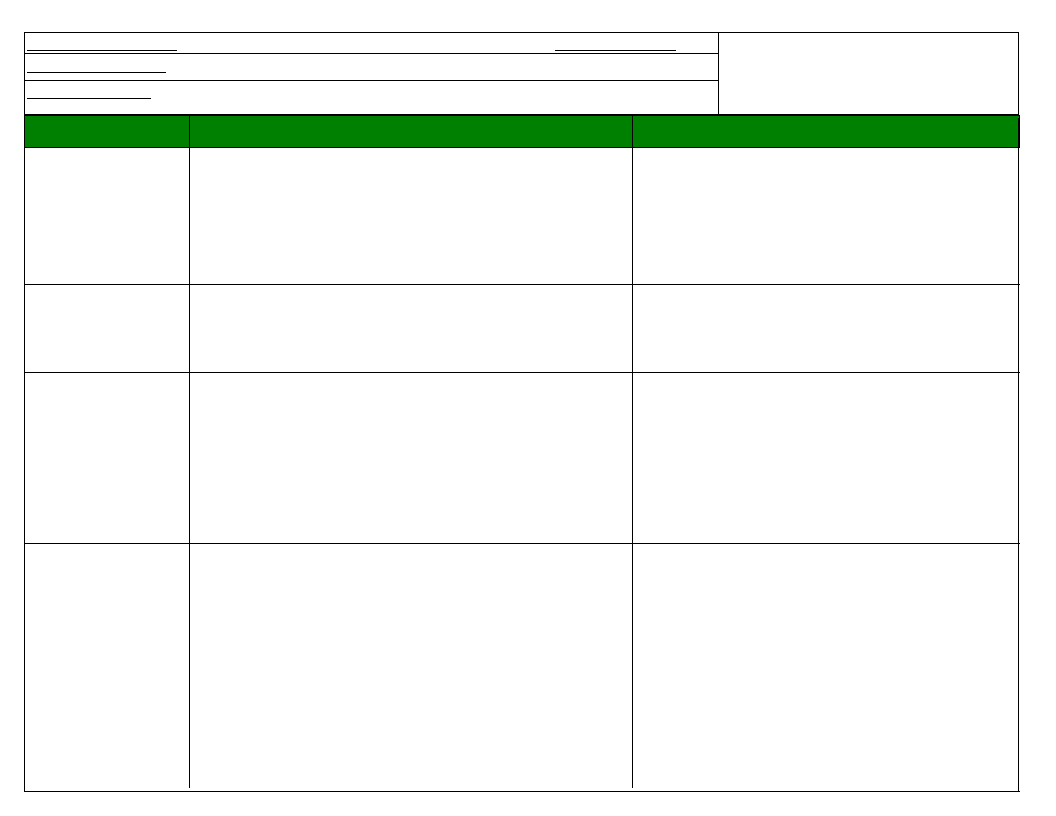
Emergency_Support_Function
Primary_Lead_Organization
Agriculture (Crop)
Agriculture Office
Supporting_Organization
Woreda Administration, WASH and NGOs
ESF_National_Standards
Emergency Seed Aid Guidelines for Ethiopia
(draft, Ethiopia 2012), The Sphere project:
Humanitarian Charter and Minimum Standards in
Humanitarian Response (2011),
Hazard [It can be for any
hazard or can be specific]
Crop pest and crop
disease
Drought
Preparedness
(Actions that should be done in advance, before the disaster occurs to
- Analyze which seed procurement will be better for an likely emergency
intervention (direct seed distribution –DSD- [commercial seed-based
DSD? Or farmer seed-based DSD?], cash or vouchers alone, seed vouchers
and fairs, )
- Advocacy for timely emergency crop responses
GENDER MAINSTREAMING
- Assure that women have equal access to agricultural services
(extension services, )
- Collect and analyze crop disease related data
- Purchase required agro chemicals for rapid response
- Train and assign personnel that should be participated in emergency
response activity
- Review and update stock status
- Conduct pre harvest Assessment
- Supply and adopt drought tolerant seed varieties
- Collect, analyze and disseminate early warning information to the
community
- Assign experts to purchase emergency seed and short cycle seeds
- Prepare agreements with stakeholders to support a likely emergency
response
- Train and assign personnel that should participate in emergency
response activities
- Create awareness to prepare the community for possible drought risk
Response / Early Recovery
(Actions that should be done once the disaster occurs to respond
- Conduct rapid need assessment
- Provision/distribute the prepared agro chemicals and
emergency seed according to the given guideline
- Follow up the emergency response activity
-Supply and provision of emergency seed
-Provision of drought resistant seed to the vulnerable group
- Make regular update of information and action
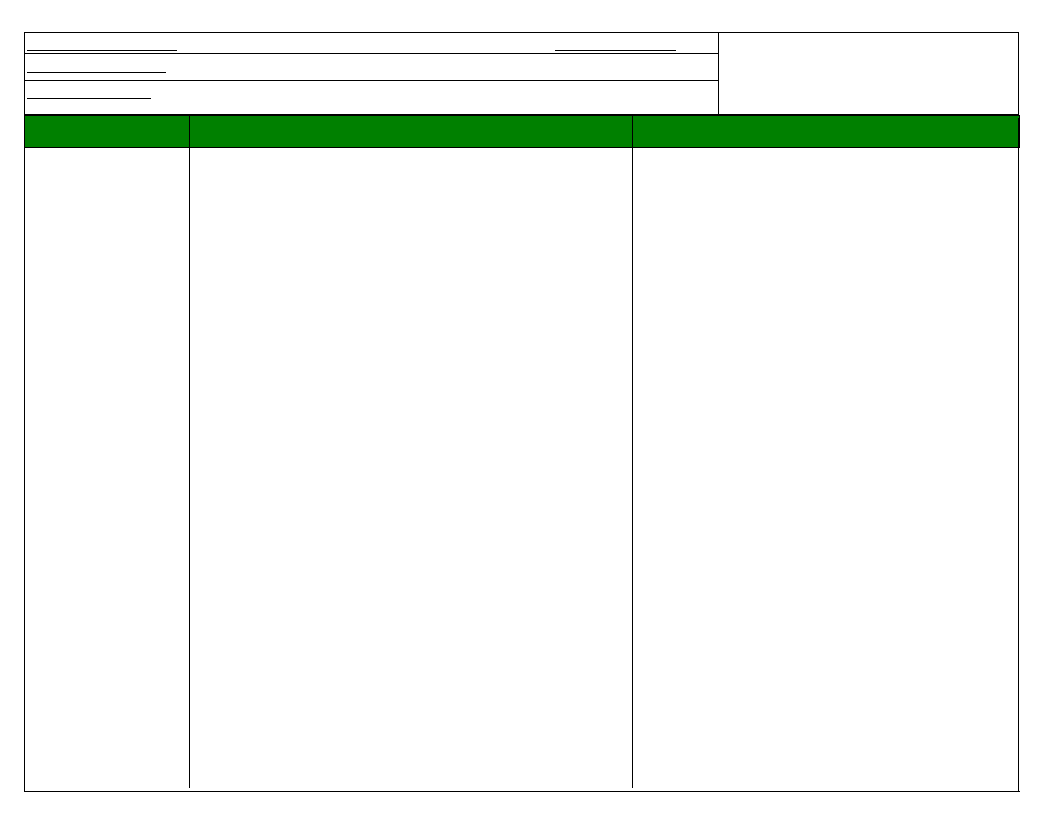
Emergency_Support_Function
Agriculture (Livestock)
ESF_National_Standards
National Guidelines for Livestock Relief
Primary_Lead_Organization
Livestock and Fishery Office
Supporting_Organization
Hazard [It can be for any
Woreda Administration, Agriculture & Natural resource office, NGO (SDI-VOCA and
Aspire project)
Preparedness
Interventions in Pastoralist Areas of Ethiopia
(Ethiopia, 2008), Livestock Emergency Guidelines
and Standards
-LEGS- (2009)
Response / Early Recovery
hazard or can be specific]
(Actions that should be done in advance, before the disaster occurs to
(Actions that should be done once the disaster occurs to respond
For any hazard
- Update preparedness and response actions for the Livestock
Emergency Support Function
- Ensure that experts have the contingency plan and know it.
- Ensure that coordination mechanisms for Livestock are in place at
wereda level to discuss and make decisions/recommendations to higher
levels.
- Establish clear line of communication and two way feedback
mechanisms at woreda, zonal and regional level
- Collect, monitor and analyze livestock data for Early Warning System
and establish triggers for action
- Facilitate visit to risk areas
- Use Wereda Disaster risk Profile to know the risk factors and effects of
likely disasters in the livestock ESF
- Review the sectorial livestock historical emergency record of previous
disasters to prepare better response according with lesson learns
- According the scenarios (livestock part) estimated in the Wereda
Contingency Plan, start preparation of sufficient resources ensure
continuity, equity and quality of Livestock activities during the
emergency
- Ensure that relevant guidelines with standards and protocols (National
Guidelines for Livestock Relief Interventions in Pastoralist Areas of
Ethiopia (Ethiopia, 2008), Livestock Emergency Guidelines and Standards
-LEGS- (2009)) for emergency responses are available at woreda and
livestock facilities level and experts know them.
- To train public livestock personnel for livestock emergency response
management
- Prepare and assign timely livestock experts that should participate in
the rapid response team for needs assessment
- Educating the public (specially the most vulnerable) on related
measures to be taken to prevent and control dangerous livestock events
- Prepare sufficient resources to ensure continuity, equity and quality of
livestock activities during the emergency
- Prepare and assist possible commercial destocking (identifying timing
or feasibility in case of it can be necessary): Engagement with traders,
Ensuring linkages with food aid and safety nets, Facilitation of livestock
transport by easing taxation
- Prepare and assist possible slaughter destocking (identifying timing or
- Upon Early Warning triggers, activate and coordinate
response activities of the Emergency Support Function
- Upon receipt of alert, rumor or detection of deviation the
condition from the expected trend while performing Early
Warning data analysis, communicate the respective level
immediately for verification
- Ensure that coordination mechanisms for livestock are in
place
- Initiate timely rapid need assessment to assess impact and
ensure livestock is included if necessary.
- Update scenario of Wereda Contingency Plan and initiate
response strategy and activities
- Activate the specific task force meeting, Disaster Prevention
and Preparedness Committee or adequate coordination
mechanism when needed
- Intensify the early warning system and distribute regular
information about livestock situation
- Resource mobilization
- Ensure that responses are implemented according to the
existing guidelines (standards and protocols) for livestock
response
- Disseminate adequate livestock messages to the community
and media
- Design and implement commercial destocking
[Communication and liaison with communities, Identification
of sellers, Provide different measures for commercial
destocking (health inspection, water and feed, veterinary
services, security, taxation, transport, …), Control measures,
Selling arrangements, monitoring arrangements, types of
livestock for purchase or prices of livestock]
- Design and implement slaughter destocking [Procurement,
slaughtering, selection of most handlers and incentives,
coordination of meat distribution and distribution of other
types of food, inspection arrangements, disposal of hides and
skins)
- Provide Livestock feed supplementation (selection of
households, types of livestock to be fed, number of beneficiary
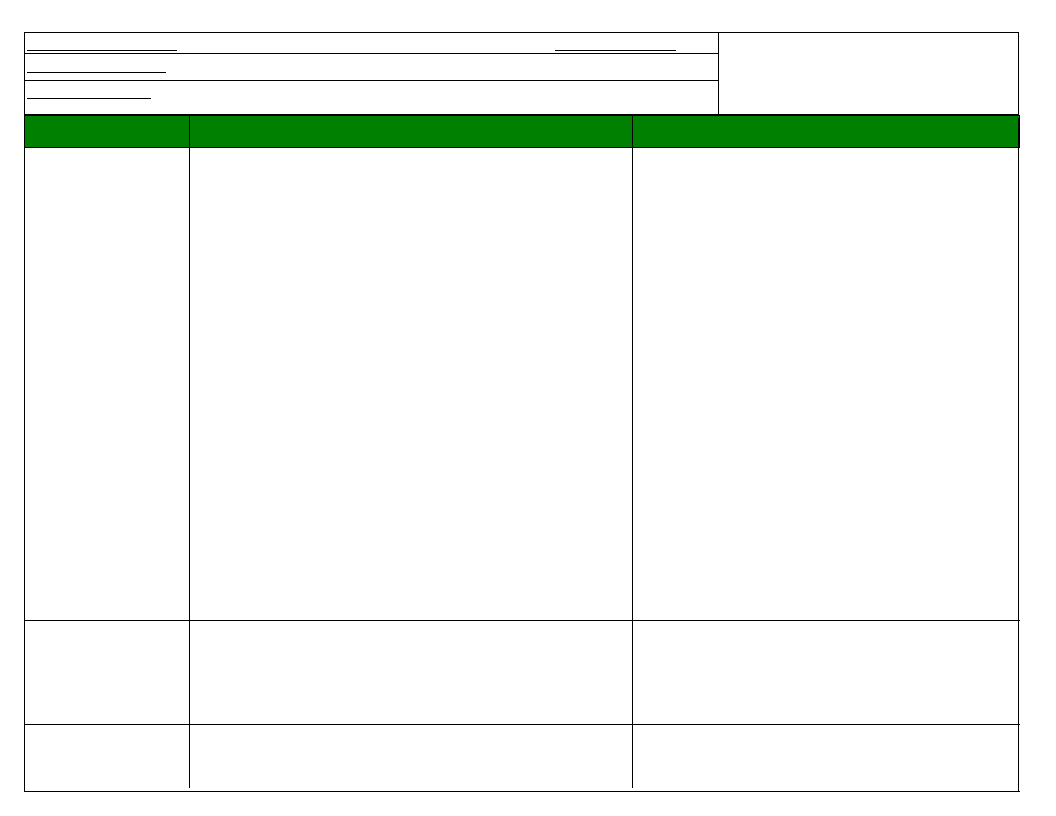
Emergency_Support_Function
Agriculture (Livestock)
ESF_National_Standards
National Guidelines for Livestock Relief
Primary_Lead_Organization
Livestock and Fishery Office
Supporting_Organization
Hazard [It can be for any
Woreda Administration, Agriculture & Natural resource office, NGO (SDI-VOCA and
Aspire project)
Preparedness
Interventions in Pastoralist Areas of Ethiopia
(Ethiopia, 2008), Livestock Emergency Guidelines
and Standards
-LEGS- (2009)
Response / Early Recovery
hazard or can be specific]
(Actions that should be done in advance, before the disaster occurs to
(Actions that should be done once the disaster occurs to respond
feasibility in case of it can be necessary):
- Check status of veterinary services, including availability of drugs in
public and private sectors and status of CAHWs (Community based
animal health workers)
- Mass treatment and vaccination programs if necessary
- Procurement and storage of veterinary medicines if necessary
- Prepare, if necessary, strategies for livestock feed supplementation
- Rehabilitation and maintenance of water points for water supply for
livestock (coordinated with human supply agencies as necessary)
- Advocacy for timely emergency livestock responses
GENDER MAINSTREAMING
- Consider the critical role of women in livestock and plan management
that enable them to part in the market and how disaster can affect
them
households and livestock, feeding arrangements,
transportation/storage/distribution, feed management,
avoiding feed toxicity)
- Provision of Water to livestock (supply and demand, costs,
distribution, water quality and safety, local equity and
management issues, long-term management and maintenance,
environmental issues)
- Provide Animal health interventions (type of intervention
[curative, preventive or supportive], payment for services,
focus on important diseases, vulnerable groups, procurement
and storage of veterinary medicines, training inputs, social and
cultural norms, security issues)
- Restocking (Selection of individual beneficiaries, types of
livestock for restocking, number of animals provided,
purchasing arrangements, credit and repayment options,
veterinary care)
- Monitor and evaluate the response of livestock related
interventions, creating an historical record of the emergency.
Documentation of experiences and practices
GENDER MAINSTREAMING
- Ensure equal access to livestock inputs
RECOVERY
- Phase out plan for emergency programs as recovery activities
increase
- Determine the need for recovery or rehabilitation and
disseminate those needs to partners
- Request Regional/Zonal government assistance for early
recovery when additional resources may be needed
Drought
- Collecting and proper storing of crop residues for livestock feed
- Enhancing improved forages
- Collecting early warning information related to drought risk
- Encouraging fodder banks through hay and other forms of feed
- Establish clear line communication b/n community, woreda, zone and
Region
Upon early warning information, activate livestock emergency
response activities
- Provision of emergency livestock feed
- Provide treatment and vaccination for affected kebeles
- Facilitate Market and slaughtering livestock destocking
- Monitor and evaluate the emergency response Operation
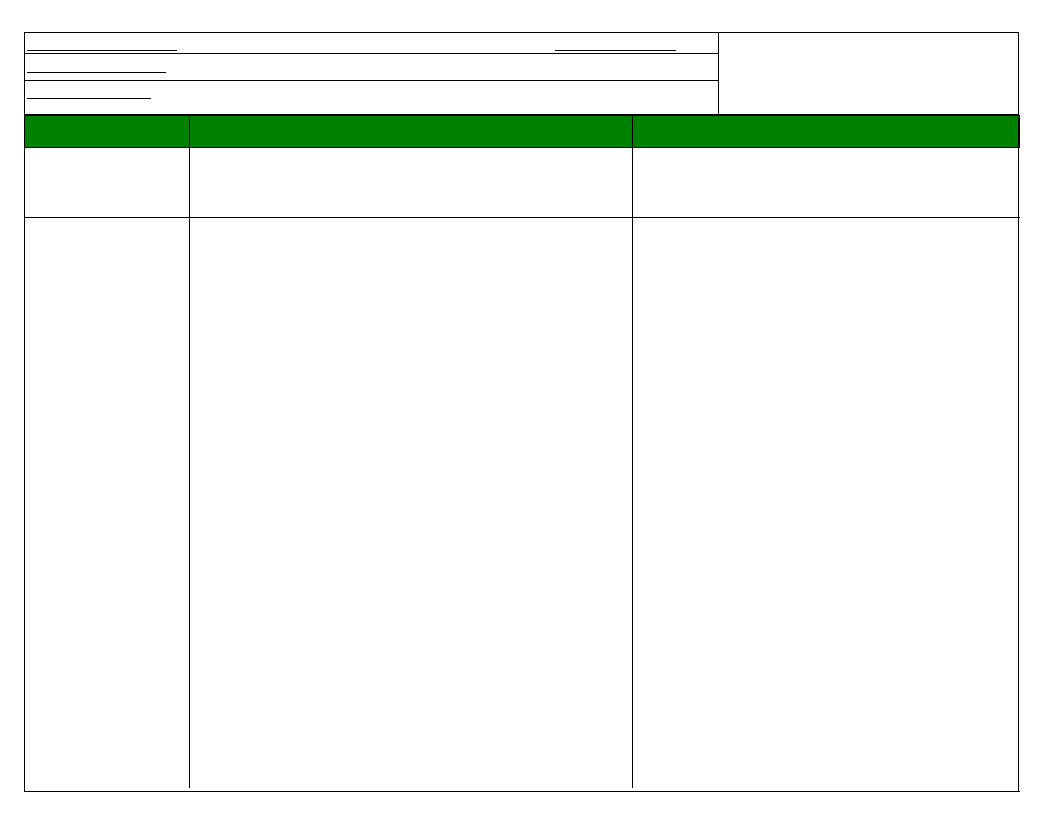
Emergency_Support_Function
Agriculture (Livestock)
ESF_National_Standards
National Guidelines for Livestock Relief
Primary_Lead_Organization
Livestock and Fishery Office
Supporting_Organization
Hazard [It can be for any
Woreda Administration,Agriculture & Natural resource office, NGO (SDI-VOCA and Aspire
project)
Preparedness
Interventions in Pastoralist Areas of Ethiopia
(Ethiopia, 2008), Livestock Emergency Guidelines
and Standards
-LEGS- (2009)
Response / Early Recovery
hazard or can be specific]
(Actions that should be done in advance, before the disaster occurs to
(Actions that should be done once the disaster occurs to respond
Livestock diseases
- Follow early sign of livestock disease
- Collecting early warning information related to livestock diseases
- Conduct mass vaccination programe
- Raise awareness about livestock disease and its prevention mechanism
- Emergency vaccination for livestock
- Separate (isolate) the affected livestock and treat according
to guideline
- Proper disposal of carcasses
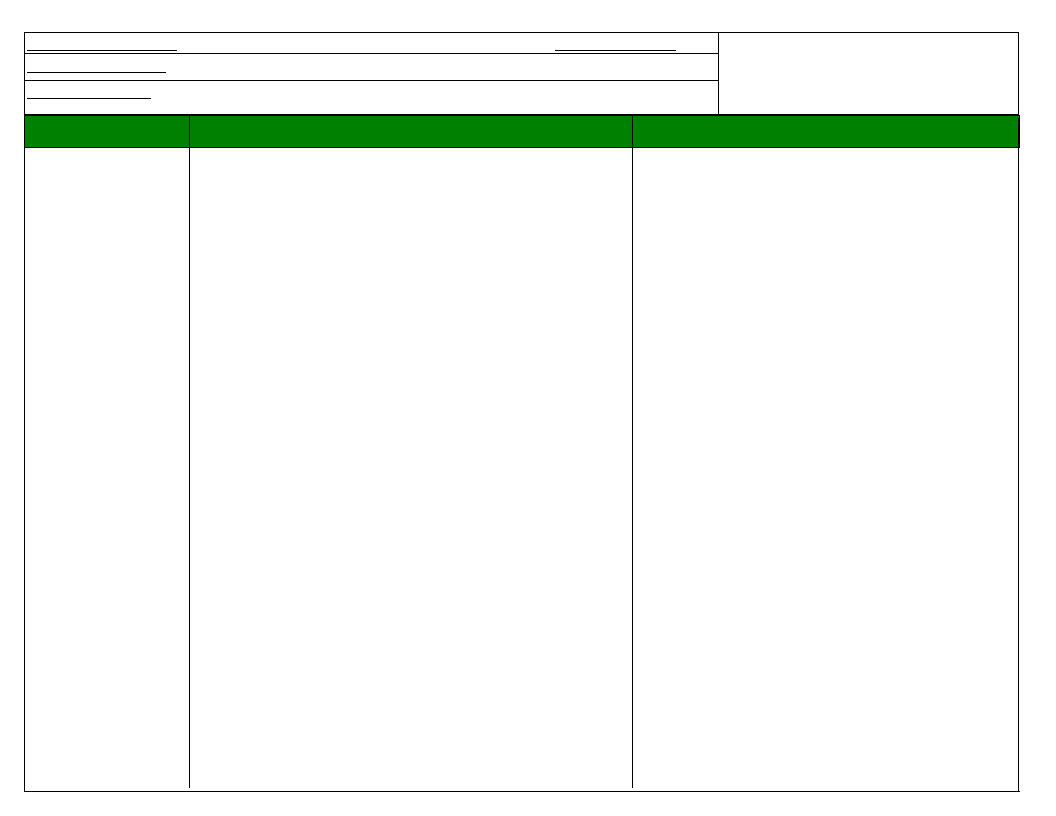
Emergency_Support_Function
Primary_Lead_Organization
Health and Nutrition
Health office
Supporting_Organization
Woreda Administration office, Water office, Woreda education office
Hazard [It can be for any
hazard or can be specific]
Preparedness
(Actions that should be done in advance, before the disaster occurs to
For any hazard
- Update preparedness and response actions for the health and nutrition
Emergency Support Function
- Ensure that experts have the contingency plan and know it.
- Ensure that coordination mechanisms for health & nutrition are in
place at wereda level to discuss and make decisions/recommendations
to higher levels.
- Establish clear line of communication and two way feedback
mechanisms at woreda, zonal and regional level
- Collect, monitor and analyze health and nutrition data for Early
Warning System and establish triggers for action (increase in number of
cases beyond expected/occurrence of outbreaks, unexplained morbidity
and mortality, malnutrition, environmental changes such as air
pollution, water quality changes, occurrence of pest, disruption of
health services or infrastructure, industrial accidents…)
- Use Wereda Disaster risk Profile to know the risk factors and effects of
likely disasters in the health and nutrition ESF
- Review the sectorial health and nutrition historical emergency record
of previous disasters to prepare better response according with lesson
learns
- According the scenarios (health and nutrition part) estimated in the
Wereda Contingency Plan, start preparation of sufficient resources
ensure continuity, equity and quality of Health & Nutrition activities
during the emergency
- Ensure that relevant guidelines with standards and protocols
(Guideline on PUBLIC HEALTH EMERGENCY MANAGEMENT (Ethiopia,
2012) and the Emergency nutrition intervention guideline (Ethiopia,
2012)) for emergency responses are available at woreda and health
facilities level and experts know them.
- Distribute Malaria Guidelines to all Health Facilities
- Train health workers on Meningitis outbreak management
ESF_National_Standards
Guideline on PUBLIC HEALTH EMERGENCY
MANAGEMENT (Ethiopia, 2012), Cholera
guideline, Measles guideline, Malaria guideline,
Influenza Surveillance implementation guideline,
Meningitis Guidelines (under finalization and
revision), RAeFsPpo(unnsede/rEfairnlaylRizeactoiovenraynd revision),
(Actions that should be done once the disaster occurs to respond
NNT (under finalization and revision), Emergency
nutrition intervention guideline (Under
development), Emergency Nutrition Assessment
Guidelines (2008), Protocol for management of
Severe Acute Malnutrition (2008), MAM
guidelines (Ethiopia, 2012), The Sphere project:
Humanitarian Charter and Minimum Standards in
Humanitarian Response (2011)
- Update preparedness and response actions for the health and
nutrition Emergency Support Function
- Ensure that experts have the contingency plan and know it.
- Ensure that coordination mechanisms for health & nutrition
are in place at wereda level to discuss and make
decisions/recommendations to higher levels.
- Establish clear line of communication and two way feedback
mechanisms at woreda, zonal and regional level
- Collect, monitor and analyze health and nutrition data for
Early Warning System and establish triggers for action (increase
in number of cases beyond expected/occurrence of outbreaks,
unexplained morbidity and mortality, malnutrition,
environmental changes such as air pollution, water quality
changes, occurrence of pest, disruption of health services or
infrastructure, industrial accidents…)
- Use Wereda Disaster risk Profile to know the risk factors and
effects of likely disasters in the health and nutrition ESF
- Review the sectorial health and nutrition historical
emergency record of previous disasters to prepare better
response according with lesson learns
- According the scenarios (health and nutrition part) estimated
in the Wereda Contingency Plan, start preparation of sufficient
resources ensure continuity, equity and quality of Health &
Nutrition activities during the emergency
- Ensure that relevant guidelines with standards and protocols
(Guideline on PUBLIC HEALTH EMERGENCY MANAGEMENT
(Ethiopia, 2012) and the Emergency nutrition intervention
guideline (Ethiopia, 2012)) for emergency responses are
available at woreda and health facilities level and experts
know them.
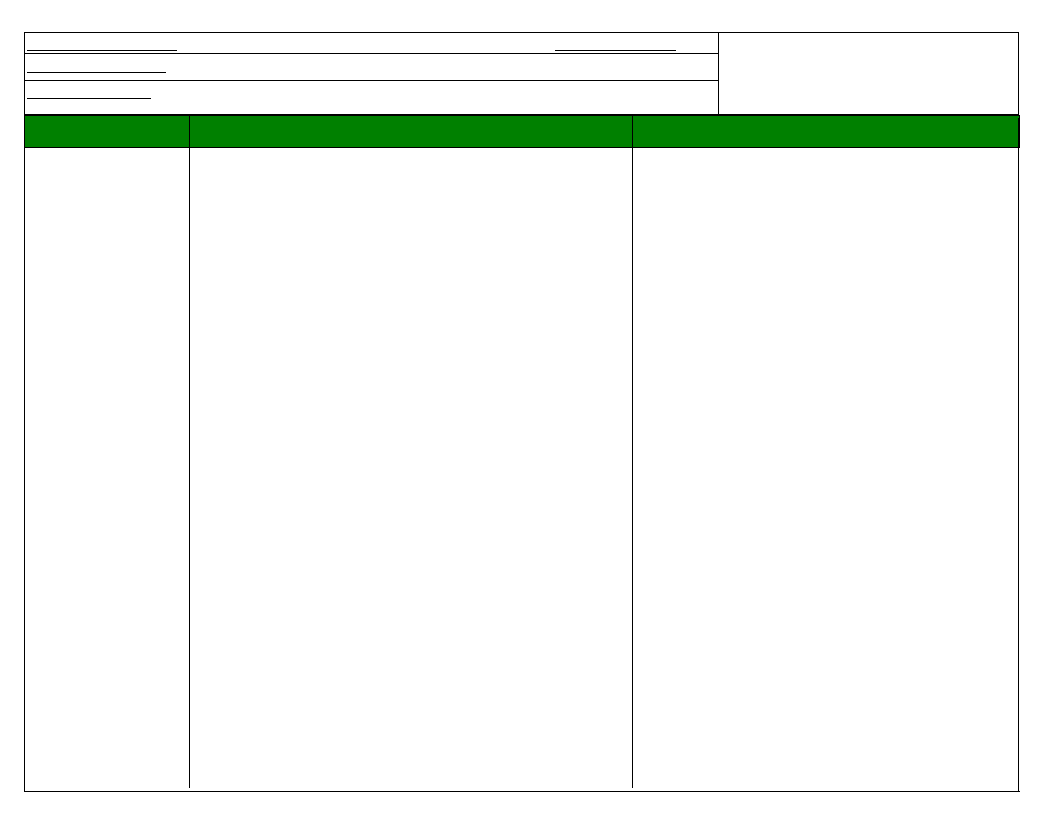
Emergency_Support_Function
Primary_Lead_Organization
Health and Nutrition
Health office
Supporting_Organization
Woreda Administration office, Water office, Woreda education office
Hazard [It can be for any
hazard or can be specific]
Preparedness
(Actions that should be done in advance, before the disaster occurs to
- Distribute Cholera outbreak control guidelines to all Health Facilities
- Distribute Measles guidelines to all Health Facilities
- To train public health personnel for health and nutrition emergency
response management
- Prepare and assign timely health and nutrition experts that should
participate in the woreda rapid response team for needs assessment
- Educating the public (specially the most vulnerable) on related
measures to be taken to prevent and control the event
- Train wereda health experts on Minimum Initial Service Package for
Reproductive health
- Wereda health experts know where Emergency Reproductive Health
kits are available if needed
- Wereda Health experts know the Standard Operating Procedures
(SOPs) for health response and recovery operations
- Prepare sufficient resources to ensure continuity, equity and quality of
health and nutrition activities during the emergency
- Advocacy for timely emergency health & nutrition responses
NUTRITION SPECIFIC
- Conduct capacity gap analysis and strengthen capacities on SAM/MAM
(Severe/Moderate Acute Malnutrition) management and on Infant and
Young Child Feeding (IYCF)
- Advocacy for linking emergency nutrition with long terms nutrition
programs such as CBN, micronutrient malnutrition
HEALTH SPECIFIC
- Identify possible priority diseases and conditions for surveillance (see
standard definitions of Guideline on public health emergency
management (Ethiopia, 2012))
- Report diseases and conditions under surveillance in the adequate
formats (see standard definitions of Guideline on public health
emergency management (Ethiopia, 2012))
ESF_National_Standards
Guideline on PUBLIC HEALTH EMERGENCY
MANAGEMENT (Ethiopia, 2012), Cholera
guideline, Measles guideline, Malaria guideline,
Influenza Surveillance implementation guideline,
Meningitis Guidelines (under finalization and
revision), RAeFsPpo(unnsede/rEfairnlaylRizeactoiovenraynd revision),
(Actions that should be done once the disaster occurs to respond
NNT (under finalization and revision), Emergency
nutrition intervention guideline (Under
development), Emergency Nutrition Assessment
Guidelines (2008), Protocol for management of
Severe Acute Malnutrition (2008), MAM
guidelines (Ethiopia, 2012), The Sphere project:
Humanitarian Charter and Minimum Standards in
Humanitarian Response (2011)
- Distribute Malaria Guidelines to all Health Facilities
- Train health workers on Meningitis outbreak management
- Distribute Cholera outbreak control guidelines to all Health
Facilities
- Distribute Measles guidelines to all Health Facilities
- To train public health personnel for health and nutrition
emergency response management
- Prepare and assign timely health and nutrition experts that
should participate in the woreda rapid response team for needs
assessment
- Educating the public (specially the most vulnerable) on
related measures to be taken to prevent and control the event
- Train wereda health experts on Minimum Initial Service
Package for Reproductive health
- Wereda health experts know where Emergency Reproductive
Health kits are available if needed
- Wereda Health experts know the Standard Operating
Procedures (SOPs) for health response and recovery operations
- Prepare sufficient resources to ensure continuity, equity and
quality of health and nutrition activities during the emergency
- Advocacy for timely emergency health & nutrition responses
NUTRITION SPECIFIC
- Conduct capacity gap analysis and strengthen capacities on
SAM/MAM (Severe/Moderate Acute Malnutrition) management
and on Infant and Young Child Feeding (IYCF)
- Advocacy for linking emergency nutrition with long terms
nutrition programs such as CBN, micronutrient malnutrition
HEALTH SPECIFIC
- Identify possible priority diseases and conditions for
surveillance (see standard definitions of Guideline on public
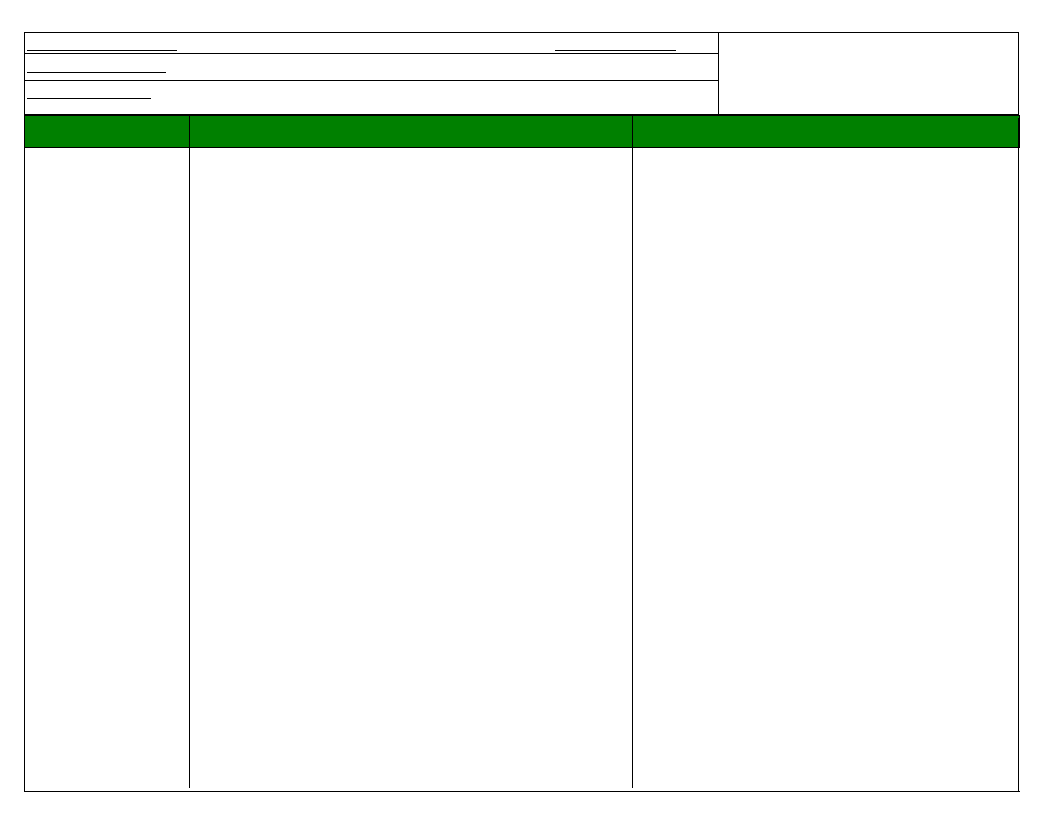
Emergency_Support_Function
Primary_Lead_Organization
Health and Nutrition
Health office
Supporting_Organization
Woreda Administration office, Water office, Woreda education office
Hazard [It can be for any
hazard or can be specific]
Preparedness
(Actions that should be done in advance, before the disaster occurs to
- Improve local laboratory capacity for surveillance and response and
the data analysis and interpretation
GENDER MAINSTREAMING
- Analyze what and how different diseases affect women and men
- Work with media, civil society and partner agencies to raise health
awareness
- Prepare prevention messages for women and girls
- Train health and nutrition workers on gender sensitive service delivery
ESF_National_Standards
Guideline on PUBLIC HEALTH EMERGENCY
MANAGEMENT (Ethiopia, 2012), Cholera
guideline, Measles guideline, Malaria guideline,
Influenza Surveillance implementation guideline,
Meningitis Guidelines (under finalization and
revision), RAeFsPpo(unnsede/rEfairnlaylRizeactoiovenraynd revision),
(Actions that should be done once the disaster occurs to respond
NNT (under finalization and revision), Emergency
nutrition intervention guideline (Under
development), Emergency Nutrition Assessment
Guidelines (2008), Protocol for management of
Severe Acute Malnutrition (2008), MAM
guidelines (Ethiopia, 2012), The Sphere project:
Humanitarian Charter and Minimum Standards in
Humanitarian Response (2011)
health emergency management (Ethiopia, 2012))
- Report diseases and conditions under surveillance in the
adequate formats (see standard definitions of Guideline on
public health emergency management (Ethiopia, 2012))
- Improve local laboratory capacity for surveillance and
response and the data analysis and interpretation
GENDER MAINSTREAMING
- Analyze what and how different diseases affect women and
men
- Work with media, civil society and partner agencies to raise
health awareness
- Prepare prevention messages for women and girls
- Train health and nutrition workers on gender sensitive service
delivery - Upon Early Warning triggers, activate and coordinate
response activities of the Emergency Support Function
- Upon receipt of alert, rumor or detection of deviation the
disease or condition from the expected trend while performing
weekly surveillance data analysis, communicate the respective
level immediately for verification
- Ensure that coordination mechanisms for health and nutrition
are in place
- Initiate timely rapid need assessment to assess impact and
ensure health and nutrition is included if necessary.
- Update scenario of Wereda Contingency Plan and initiate
response strategy and activities
- Activate the specific task force meeting, Disaster Prevention
and Preparedness Committee or adequate coordination
mechanism when needed
- Intensify the surveillance system and distribute regular
information about health situation
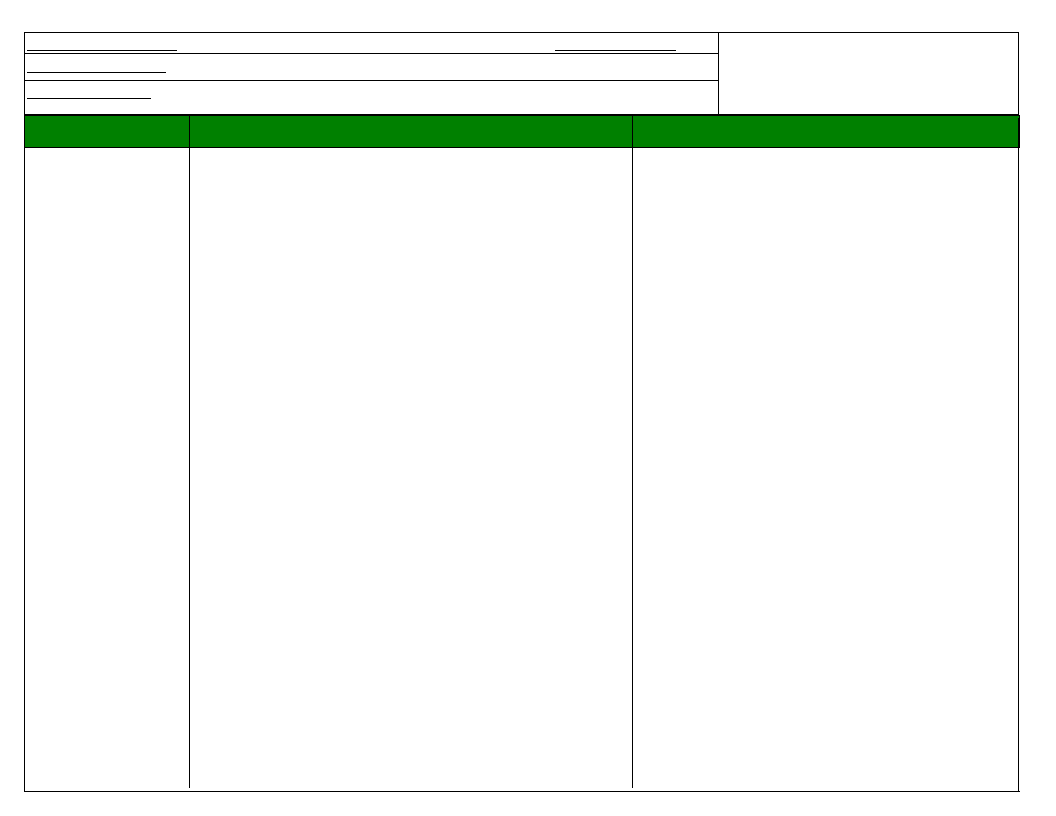
Emergency_Support_Function
Primary_Lead_Organization
Health and Nutrition
Health office
Supporting_Organization
Woreda Administration office, Water office, Woreda education office
Hazard [It can be for any
hazard or can be specific]
Preparedness
(Actions that should be done in advance, before the disaster occurs to
ESF_National_Standards
Guideline on PUBLIC HEALTH EMERGENCY
MANAGEMENT (Ethiopia, 2012), Cholera
guideline, Measles guideline, Malaria guideline,
Influenza Surveillance implementation guideline,
Meningitis Guidelines (under finalization and
revision), RAeFsPpo(unnsede/rEfairnlaylRizeactoiovenraynd revision),
(Actions that should be done once the disaster occurs to respond
NNT (under finalization and revision), Emergency
nutrition intervention guideline (Under
development), Emergency Nutrition Assessment
Guidelines (2008), Protocol for management of
Severe Acute Malnutrition (2008), MAM
guidelines (Ethiopia, 2012), The Sphere project:
Humanitarian Charter and Minimum Standards in
Humanitarian Response (2011)
- Resource mobilization
- Ensure that responses are implemented according to the
existing guidelines (standards and protocols) for health and
nutrition response
- Implement control and prevention measures for health and
nutrition
- Disseminate prevention and control measure to the
community and media
- Strengthen supervision, mentoring and technical support to
areas/health posts with weak capacity
- To promote good hygiene at health facilities and distributions
points
- Monitor and evaluate the response of health and nutrition
related interventions, creating an historical record of the
emergency. Documentation of experiences and practices
NUTRITION SPECIFIC
- Ensure supply of nutritional treatment, safe drinking water,
medical supplies and other emergency items to the affected
population with special attention to those groups most
vulnerable or with limited access to Government services
- Ensure that all under-fives are screened at health posts for
SAM and MAM management as well as referral for those with
complications
- Where necessary, call for emergency nutrition assessments to
have better understanding of the nutrition situation in the
woreda and plan for appropriate response
- Increased the frequency of nutrition situation monitoring (eg
weekly TFP admissions), timely analysis and recommendations
for actions.
- Advocacy for comprehensive nutrition response covering all
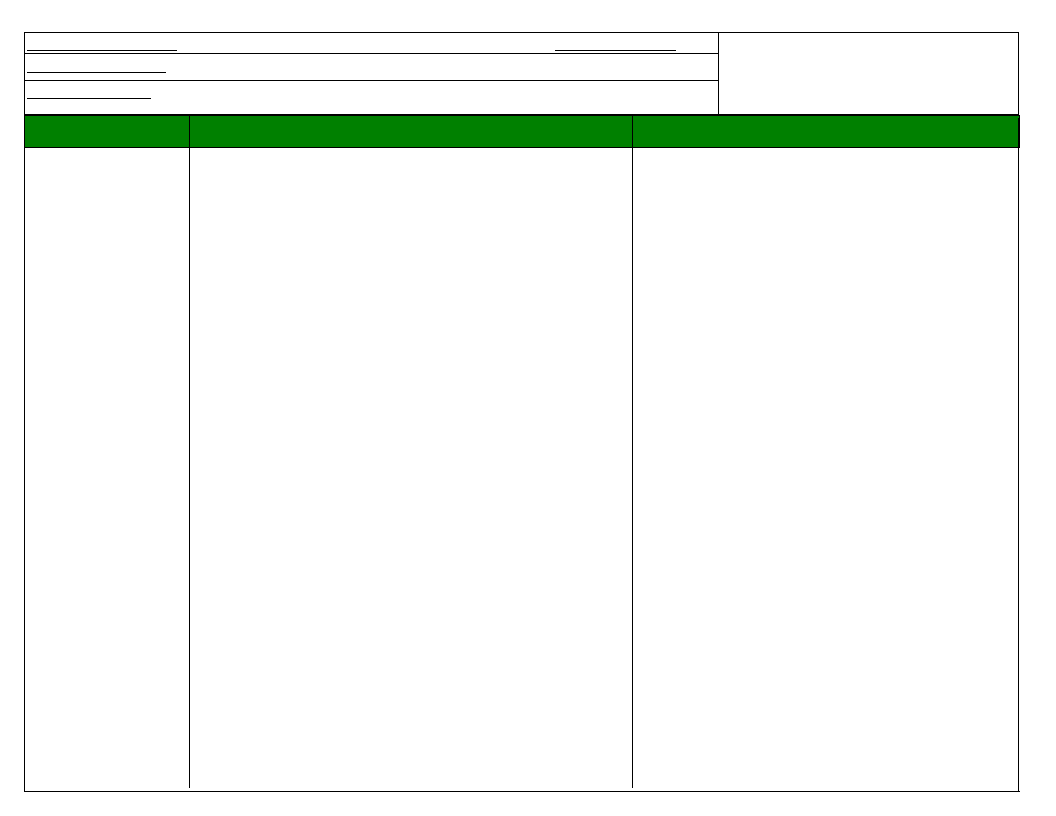
Emergency_Support_Function
Primary_Lead_Organization
Health and Nutrition
Health office
Supporting_Organization
Woreda Administration office, Water office, Woreda education office
Hazard [It can be for any
hazard or can be specific]
Preparedness
(Actions that should be done in advance, before the disaster occurs to
ESF_National_Standards
Guideline on PUBLIC HEALTH EMERGENCY
MANAGEMENT (Ethiopia, 2012), Cholera
guideline, Measles guideline, Malaria guideline,
Influenza Surveillance implementation guideline,
Meningitis Guidelines (under finalization and
revision), RAeFsPpo(unnsede/rEfairnlaylRizeactoiovenraynd revision),
(Actions that should be done once the disaster occurs to respond
NNT (under finalization and revision), Emergency
nutrition intervention guideline (Under
development), Emergency Nutrition Assessment
Guidelines (2008), Protocol for management of
Severe Acute Malnutrition (2008), MAM
guidelines (Ethiopia, 2012), The Sphere project:
Humanitarian Charter and Minimum Standards in
Humanitarian Response (2011)
the people in deed depending on the situation in the woreda
- Initiate TFP/TSF services delivery points to bring services
closer to the beneficiaries and increase coverage
- Ensure that emergency nutrition response is linked with
development nutrition programs in the woreda
HEALTH SPECIFIC
- All disaster-affected people have the knowledge and the
means to protect themselves from disease and nuisance
vectors that are likely to cause a significant risk to health or
well-being.
GENDER MAINSTREAMING
- Sex- and age- disaggregated data are included for health &
nutrition needs
- Assure provision of sex-specific essential services for women
and men
- To include gender issues in the sectorial historical records
- Provide Minimum Initial Service Packages (MISP) to have
access to priority sexual and reproductive health services,
including GBV (Gender-based Violence) services
- Distribute new emergency health kits for safe and clean
deliveries and emergency obstetric care (UNFPA clean home
delivery kits, UNICEF midwifery kits, UNICEF obstetric and
surgical kits), sanitary towels for woman, female and man
condoms, post-exposure prophylactic (PEP) kits where
necessary, emergency contraceptives and pregnancy tests.
- Include as possible balance women and men heath workers
- Train and mobilize tradition birth attendants
- Disseminate HIV/AIDS prevention messages with particular
focused in the more vulnerable people
- Analyze if there are differences for women, girls, boys and
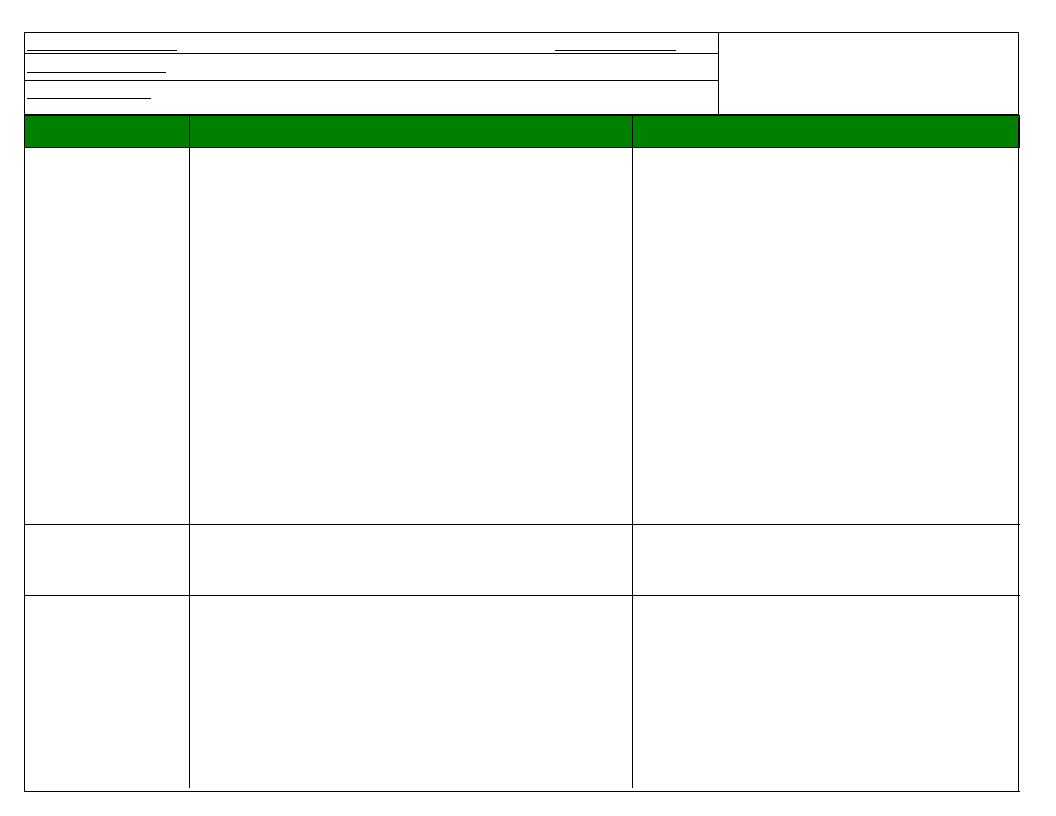
Emergency_Support_Function
Primary_Lead_Organization
Health and Nutrition
Health office
Supporting_Organization
Woreda Administration office, Water office, Woreda education office
Hazard [It can be for any
hazard or can be specific]
Preparedness
(Actions that should be done in advance, before the disaster occurs to
Drought
- Conduct screening for <5 children and pregnant and lactating mother
- Select acute sever malnourished children
- Train experts that should be participated in emergency response
ESF_National_Standards
Guideline on PUBLIC HEALTH EMERGENCY
MANAGEMENT (Ethiopia, 2012), Cholera
guideline, Measles guideline, Malaria guideline,
Influenza Surveillance implementation guideline,
Meningitis Guidelines (under finalization and
revision), RAeFsPpo(unnsede/rEfairnlaylRizeactoiovenraynd revision),
(Actions that should be done once the disaster occurs to respond
NNT (under finalization and revision), Emergency
nutrition intervention guideline (Under
development), Emergency Nutrition Assessment
Guidelines (2008), Protocol for management of
Severe Acute Malnutrition (2008), MAM
guidelines (Ethiopia, 2012), The Sphere project:
Humanitarian Charter and Minimum Standards in
Humanitarian Response (2011)
men in terms of access to food and analyze reasons for
inequalities in malnutrition rates between women, girls, boys
and men
- Ensure that vaccination programs and food supplementation
reach women, girls, boys and men
RECOVERY
- Phase out plan for emergency programs as recovery activities
increase
- Determine the need for recovery or rehabilitation (sanitation
psychosocial assistance, reconstruction, etc.) and disseminate
those needs to partners
- Request Regional/Zonal government assistance for early
recovery when additional resources may be needed
- Asses the need and make arrangement to provide
psychosocial assistance as necessary
- Distribute CSB and other supplementary food for
malnourished children
- Give vaccination and other health related responses
- Follow up health related intervention
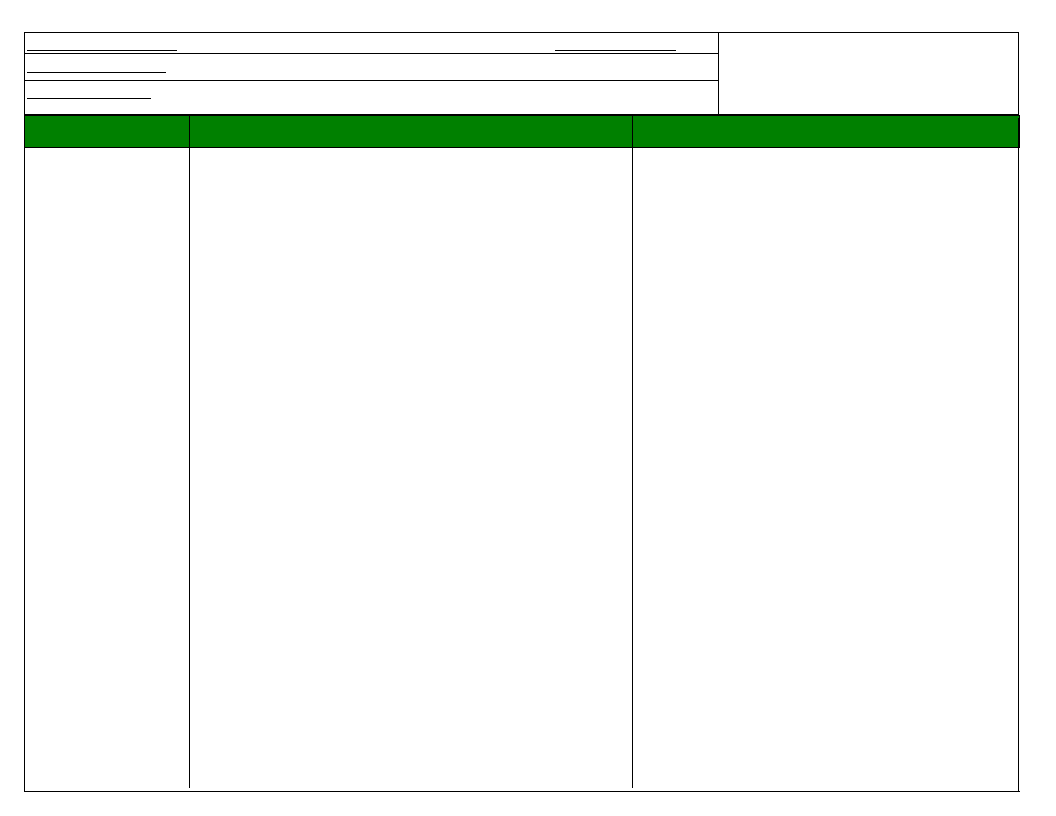
Emergency_Support_Function
Primary_Lead_Organization
Food and Non-food Items (shelter, clothing, bedding
WearneddhaoAugsreihcoulldtuirteemofsf)ice
ESF_National_Standards
Supporting_Organization
Woreda Administration, WASH, Health ,Education, women and children affairs
National Guidelines on Targeting Relief Food
Assistance, DRMFSS, (Ethiopia, 2011), The Sphere
project: Humanitarian Charter and Minimum
Standards in Humanitarian Response (2011)
Hazard [It can be for any
hazard or can be specific]
For any hazard
Preparedness
(Actions that should be done in advance, before the disaster occurs to
- Update preparedness and response actions for the Food, Non-food
Items and Shelter Emergency Support Function
- Ensure that experts have the contingency plan and know it.
- Ensure that coordination mechanisms for Food, Non-food Items and
Shelter are in place at wereda level to discuss and make
decisions/recommendations to higher levels.
- Establish clear line of communication and two way feedback
mechanisms at woreda, zonal and regional level
- Collect, monitor and analyze Food, Non-food Items and Shelter data
for Early Warning System and establish triggers for action
- Use Wereda Disaster risk Profile to know the risk factors and effects of
likely disasters in the Food, Non-food Items and Shelter ESF
- Review the sectorial Food, Non-food Items and Shelter historical
emergency record of previous disasters to prepare better response
according with lesson learns
- According the scenarios (Food, Non-food Items and Shelter part)
estimated in the Wereda Contingency Plan, start preparation of
sufficient resources ensure continuity, equity and quality of Food,
Non-food Items and Shelter activities during the emergency
- Ensure that relevant guidelines with standards and protocols (Sphere
project and WFP standards) for emergency responses are available at
woreda level and experts know them.
- Ensure that wereda experts know the Emergency Shelter & Non-food
Items Cluster standard NFI kit
- To train public personnel for Food, Non-food Items and Shelter
emergency response management
- Prepare and assign timely Food, Non-food Items and Shelter experts
that should participate in the rapid response team for needs assessment
- Prepare sufficient resources to ensure continuity, equity and quality of
Food, Non-food Items and Shelter activities during the emergency
- Advocacy for timely emergency Food, Non-food Items and Shelter
responses
FOOD SPECIFIC
- Prepare Food Specific response activities
NON FOOD ITEMS SPECIFIC
- Prepare Non-Food-Items response activities
SHELTER SPECIFIC
Response / Early Recovery
(Actions that should be done once the disaster occurs to respond
- Upon Early Warning triggers, activate and coordinate
response activities of the Emergency Support Function
- Upon receipt of alert communicate the respective level
immediately for verification
- Ensure that coordination mechanisms for Food, Non-food
Items and Shelter are in place
- Initiate timely rapid need assessment to assess impact and
ensure Food, Non-food Items and Shelter is included if
necessary.
- Update scenario of Wereda Contingency Plan and initiate
response strategy and activities
- Identify the needy population, duration of the assistance and
amount of food requirement. Update scenario of Wereda
Contingency Plan and initiate response strategy and activities
- Ensure that responses are implemented according to the
existing guidelines (standards and protocols) for Food,
Non-food Items and Shelter response
- Notify the food Commodity type and non-food needs too. The
food ration rate per person and per month. The ration rate per
person per month for cereal is 15 kg, Pulse 1.5 kg, Oil 0.45 kg
and blended food 4.5 kg but only for 35% of needy people who
are classified as vulnerable group.
- Fix Start and end date of the emergency operation
- Submit their proposal to zone or regional DRMFSS
- Activate the specific task force meeting, Disaster Prevention
and Preparedness Committee or adequate coordination
mechanism when needed
- Resource mobilization
- Ensure that responses are implemented according to the
existing guidelines (standards and protocols) for Food,
Non-food Items and Shelter response
- Monitor and evaluate the response of Food, Non-food Items
and Shelter related interventions, creating an historical record
of the emergency. Documentation of experiences and practices
FOOD SPECIFIC
- Ensure that affected people receive food assistance that
ensures their survival and upholds their dignity, and as far as
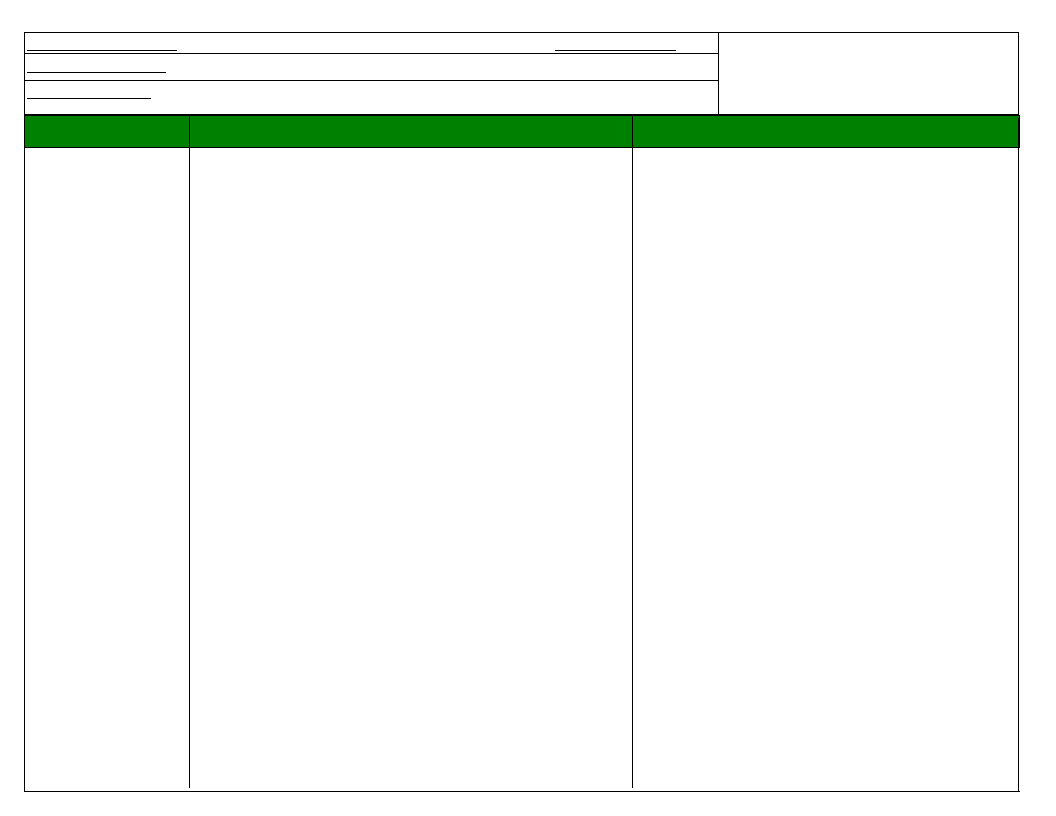
Emergency_Support_Function
Primary_Lead_Organization
Food and Non-food Items (shelter, clothing, bedding
WearneddhaoAugsreihcoulldtuirteemofsf)ice
ESF_National_Standards
Supporting_Organization
Woreda Administration, WASH, Health ,Education, women and children affairs
National Guidelines on Targeting Relief Food
Assistance, DRMFSS, (Ethiopia, 2011), The Sphere
project: Humanitarian Charter and Minimum
Standards in Humanitarian Response (2011)
Hazard [It can be for any
hazard or can be specific]
Preparedness
(Actions that should be done in advance, before the disaster occurs to
- Prepare Shelter response activities
GENDER MAINSTREAMING
- Identify sectors of population (women, girls, boys and men) most at
risk of food insecurity
- Assess the local cultural practices for women and men for food,
non-food items and shelter programs (cultural/religion and
restrictions/preferences)
- Identify future food distribution points which reduce the women’s and
children’s time getting to, and to avoid crowds and long waiting time,
timely distribution
- ‘Safe spaces’ are created at the distribution points and ‘safe passages’
schedules created for women and children heads of households
- Extend gender responsive capacity-building program for
community-based organizations in areas with special focus given to
women’s organizations in areas of chronic food insecurity
- Identify possible location without risk of abuse, violence, sexual
harassments…
- Adequate shelter construction for different needs of women, girls,
boys and men
Response / Early Recovery
(Actions that should be done once the disaster occurs to respond
possible prevents the erosion of their assets and builds
resilience
- Determine answer for the six question of targeting relief food
assistance (1.Who needs relief?: target groups, 2.Why?: impact
assessment, 3.Where?: geographical targeting, 4. When and
how long?: Seasonality of relief needs, 5. What and how much?:
type and quantity, balance of food and NFI, 6.How people is
identified?: Distribution modality, level of targeting, criteria to
identify, targeting method)
- Develop seven key steps in the community-administrative
targeting process (1.Consultation and two-way information
sharing on disaster impacts and needs, 2. Explanation of the
purpose of relief food assistance, 3.Information-sharing about
resources allocated to the community, 4. Discuss and agree
local targeting criteria, 5. Community produces draft
registration list, 6. Community discussion, adjustment and
endorsement of list, 7. Final version of registration list
submitted to kebele & wereda relief committee)
- Design food transfers on the basis of the standard initial
planning requirements for energy, protein, fat and
micronutrients, adjusted as necessary to the local situation
(WFP standards: 2100 Kcal per day)
- Ensure that the food items provided are appropriate and
acceptable to recipients so that they can be used efficiently
and effectively at the household level.
- Ensure that food distributed is fit for human consumption and
of appropriate quality.
- Ensure that the method of targeted food distribution is
responsive, timely, transparent and safe, supports dignity and
is appropriate to local conditions.
- Ensure that food is stored, prepared and consumed in a safe
and appropriate manner at both household and community
levels.
- Ensure that the disaster-affected population’s safe access to
market goods and services as producers, consumers and traders
is protected and promoted.
- Ensure adequate food access for the needs of vulnerable
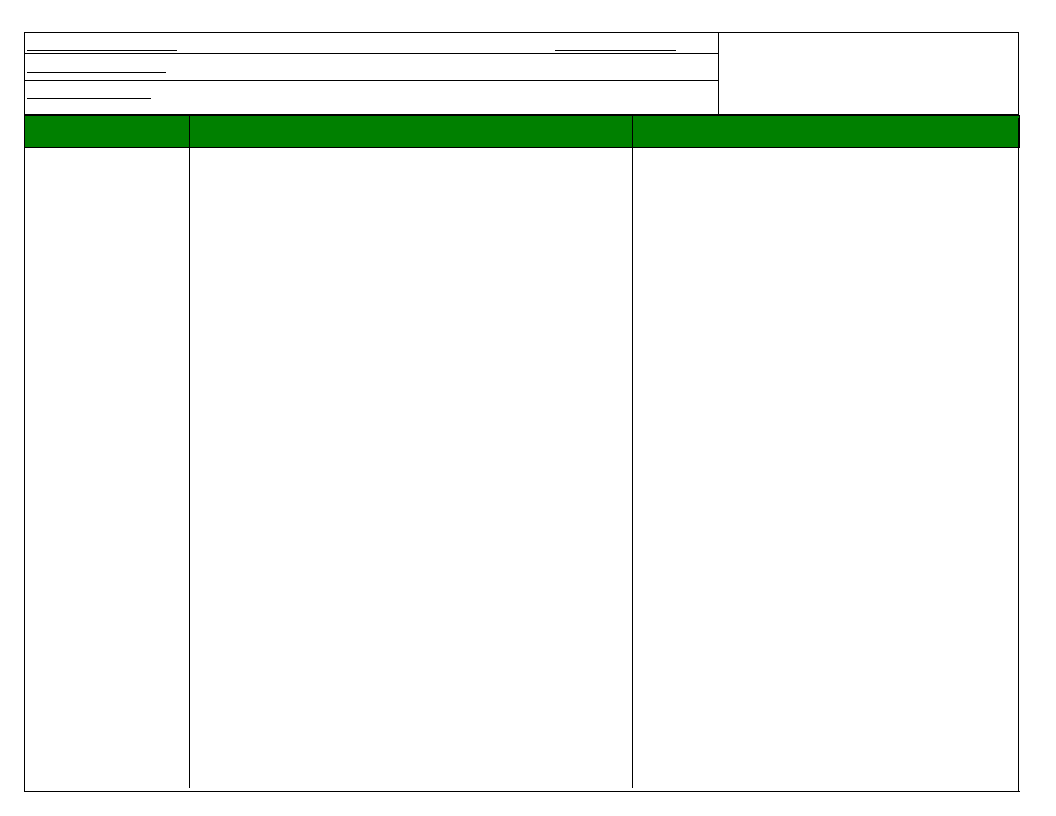
Emergency_Support_Function
Primary_Lead_Organization
Food and Non-food Items (shelter, clothing, bedding
WearneddhaoAugsreihcoulldtuirteemofsf)ice
ESF_National_Standards
Supporting_Organization
Woreda Administration, WASH, Health ,Education, women and children affairs
National Guidelines on Targeting Relief Food
Assistance, DRMFSS, (Ethiopia, 2011), The Sphere
project: Humanitarian Charter and Minimum
Standards in Humanitarian Response (2011)
Hazard [It can be for any
hazard or can be specific]
Preparedness
(Actions that should be done in advance, before the disaster occurs to
Response / Early Recovery
(Actions that should be done once the disaster occurs to respond
people such as VIH/AIDS, disable people…
NON FOOD ITEMS SPECIFIC
- Ensure that the affected population has sufficient individual,
general household and shelter support items to ensure their
health, dignity, safety and well-being.
- Ensure that the disaster-affected population has sufficient
clothing, blankets and bedding to ensure their dignity, health
and well-being.
- Ensure that the disaster-affected population has access to
culturally appropriate items for preparing and storing food,
and for cooking, eating and drinking.
- Ensure that the disaster-affected population has access to a
safe and an accessible supply of fuel or domestic energy, or to
communal cooking facilities.
- SHELTER SPECIFIC
- The affected population, when responsible for the
construction or maintenance of their shelter or for debris
removal, has access to the necessary tools, fixings and
complementary training.
- Ensure that Shelter and settlement strategies contribute to
the security, safety, health and well-being of both displaced
and non-displaced affected populations and promote recovery
and reconstruction where possible.
- Ensure that temporary communal settlements enable the safe
and secure use of accommodation and essential services by the
affected population.
- Ensure that people have sufficient covered living space
providing thermal comfort, fresh air and protection from the
climate ensuring their privacy, safety and health and enabling
essential household and livelihood activities to be undertaken.
- Ensure that local safe building practices, materials, expertise
and capacities are used where appropriate, maximizing the
involvement of the affected population and local livelihood
opportunities.
- Ensure that Shelter and settlement solutions and the material
sourcing and construction techniques used minimize adverse
impact on the local natural environment.
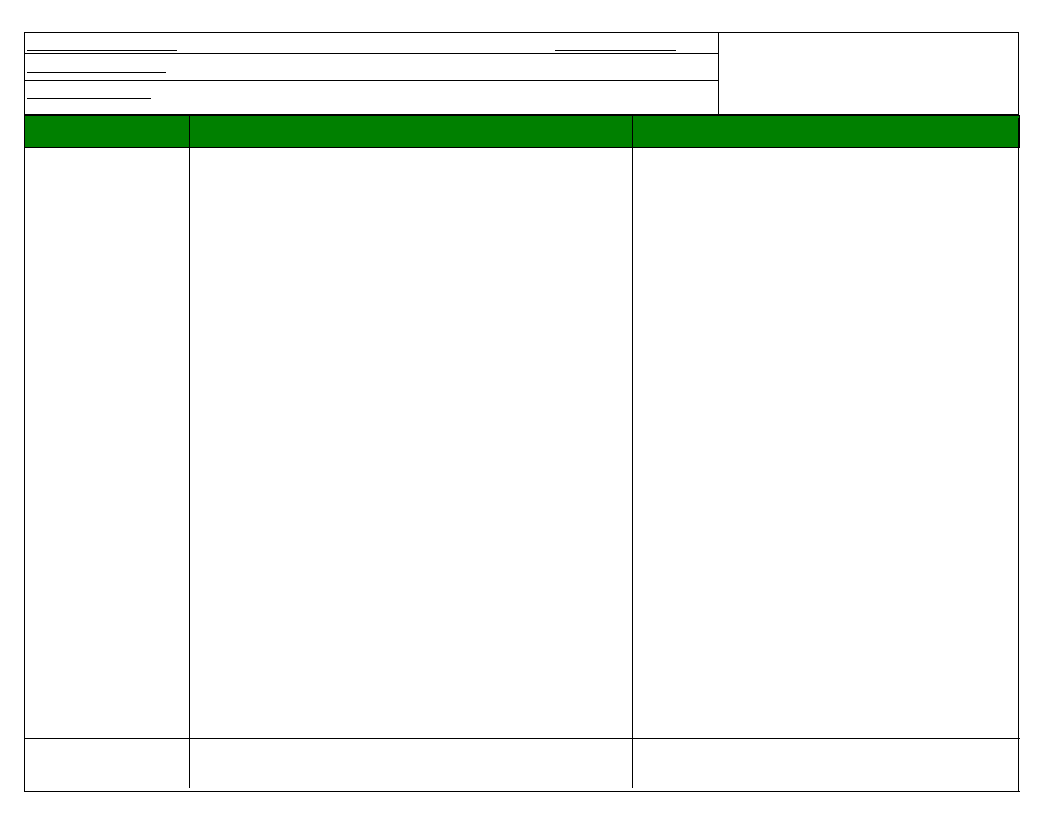
Emergency_Support_Function
Primary_Lead_Organization
Food and Non-food Items (shelter, clothing, bedding
WearneddhaoAugsreihcoulldtuirteemofsf)ice
ESF_National_Standards
Supporting_Organization
Woreda Administration, WASH, Health ,Education, women and children affairs
National Guidelines on Targeting Relief Food
Assistance, DRMFSS, (Ethiopia, 2011), The Sphere
project: Humanitarian Charter and Minimum
Standards in Humanitarian Response (2011)
Hazard [It can be for any
hazard or can be specific]
Preparedness
(Actions that should be done in advance, before the disaster occurs to
Response / Early Recovery
(Actions that should be done once the disaster occurs to respond
GENDER MAINSTREAMING
- Sex- and age- disaggregated data are included for food,
non-food items and shelter needs and food insecurity
- Take into account the specific food needs of women, girls,
men and disable (quantity, quality and nutritional aspects) for
food delivery and distribution
- Provide support specially to woman for food transport and
delivery
- Assure equal access to the local market, food aid services,
cash and food-for-work opportunities for women and men
- Assure that food is available, accessible and usable by all
members of the household/community/population
- Make sure that planning, implementation, monitoring and
evaluation phases of food security programs to be gender
responsive
- Make sure that public works projects of food security
programs are able to reduce regular workloads of women in
program implementation areas
- Identify special needs for food insecurity in female headed
households
- Distribute NFIs according the cultural/religion
practices/background and climatic conditions in relation to
women addressing their hygiene and sanitary needs (especially
menstruation period), livelihoods, daily practices, clothes,
cooking items.
- Involve women in planning distribution
- Easy access to Sanitation facilities with adequate privacy for
women and girls
RECOVERY
- Phase out plan for emergency programs as recovery activities
increase
- Determine the need for recovery or rehabilitation and
disseminate those needs to partners
- Request Regional/Zonal government assistance for early
recovery when additional resources may be needed
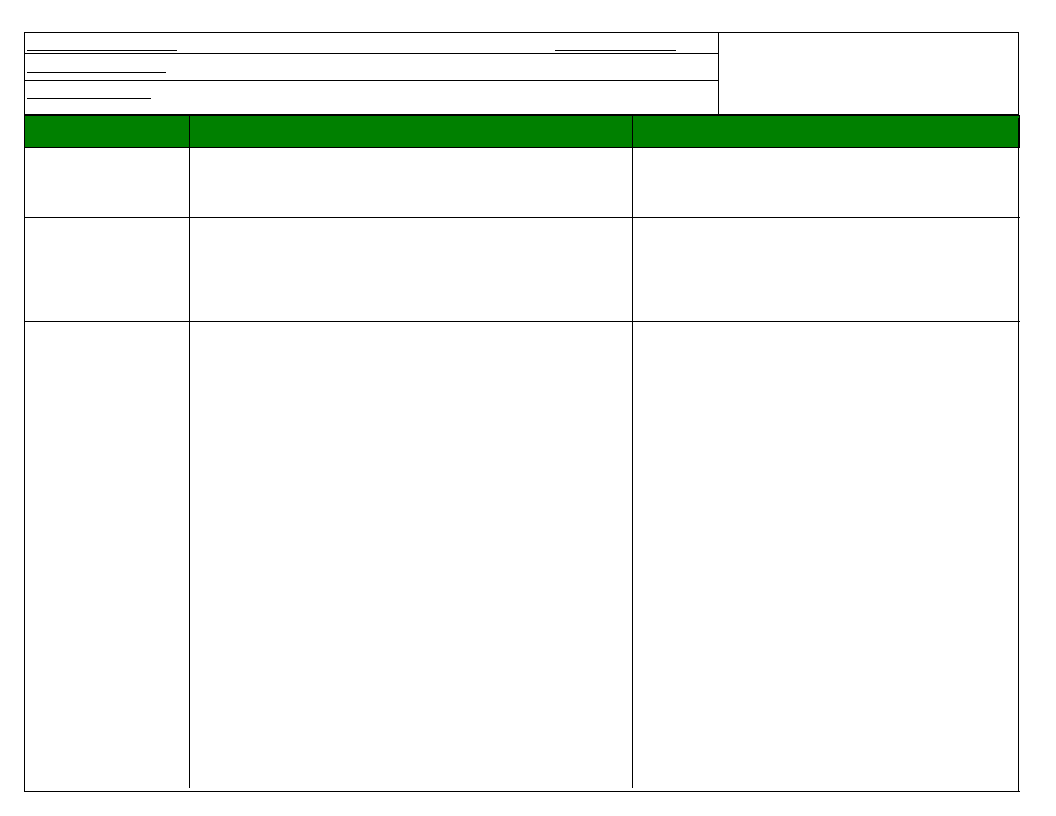
Emergency_Support_Function
Food and Non-food Items (shelter, clothing, bedding
ESF_National_Standards
National Guidelines on Targeting Relief Food
Primary_Lead_Organization
WearneddhaoAugsreihcoulldtuirteemofsf)ice
Supporting_Organization
Hazard [It can be for any
Woreda Administration, Agriculture sectoral office ,WASH, Health ,Education, women
and children affairs
Preparedness
Assistance, DRMFSS, (Ethiopia, 2011), The Sphere
project: Humanitarian Charter and Minimum
Standards in Humanitarian Response (2011)
Response / Early Recovery
hazard or can be specific]
(Actions that should be done in advance, before the disaster occurs to
(Actions that should be done once the disaster occurs to respond
Crop pest and crop
disease
- Collecting crop related early warning information
- Identifying kebeles affected by crop pest and disease
- Organizing, analyzing and reporting the data to concerned body
- Conducting rapid need assessment
- Distribute the required chemicals and emergency seeds to
affected kebeles
- Monitoring and evaluating the emergency response activity
Drought
- Forwarding early warning information checklist to kebeles
- Establish clear line communication with woreda task force members
and stakeholders
- Identifying the most vulnerable group
- Cross checking those screened according to their livelihood and effects
of hazard
- Distribute food and non food items to affected kebeles
- Monitoring the distribution according to the guideline
- Conducting rapid need assessment to identify the most
vulnerable group
- Conducting and monitoring all targeted group are addressed
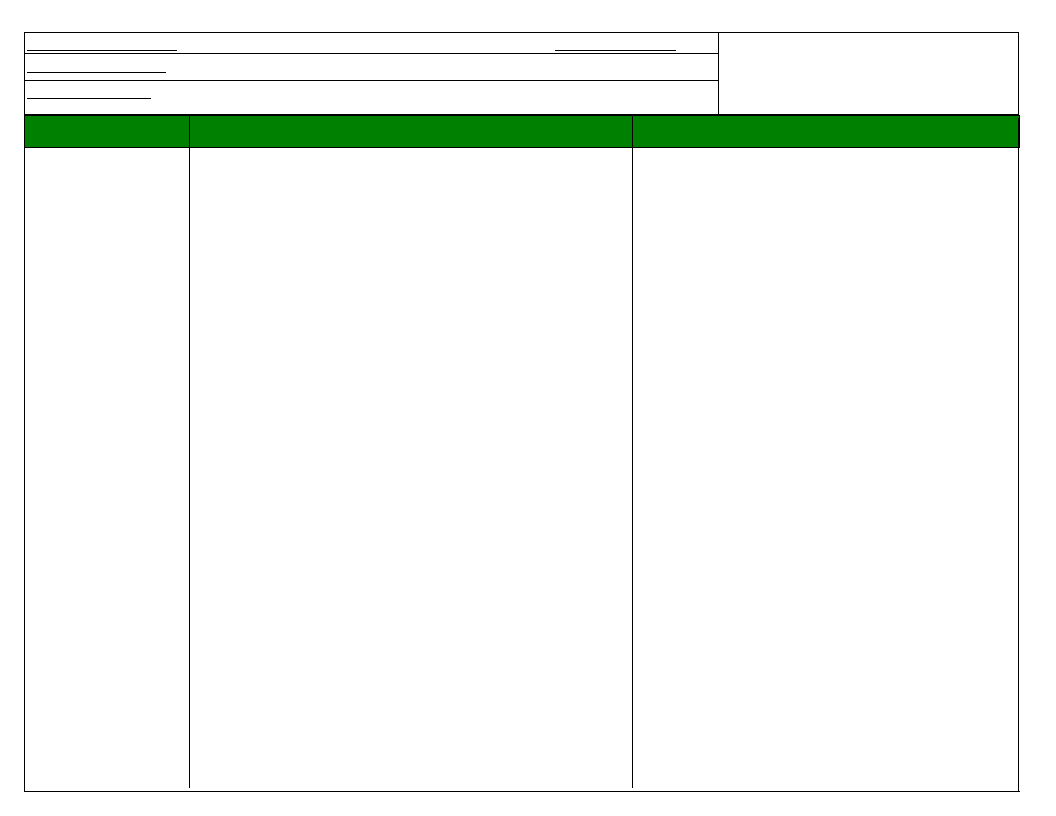
Emergency_Support_Function
Gender
ESF_National_Standards
Guidelines for Gender Mainstreaming in
Primary_Lead_Organization
Supporting_Organization
Wereda women and children office
Woreda Administration, Agriculture sectorial office ,WASH, Health and Education
Agriculture Sector (Ethiopia, 2011), Women,
girls, boys and man: different needs & equal
opportunities –Gender Handbook in Humanitarian
Hazard [It can be for any
hazard or can be specific]
Preparedness
(Actions that should be done in advance, before the disaster occurs to
Action- (Inter-Agency Standing Committee,
2006), BasReelisnpeonAssese/sEsamrleynRteocnovGeerynder in
(Actions that should be done once the disaster occurs to respond
Humanitarian Action (Ethiopia, 2011)
For any hazard
- Update preparedness and response actions for the Gender Emergency
- Upon Early Warning triggers, activate and coordinate
Support Function
response activities identified in the Gender Emergency Support
- Ensure that experts have the contingency plan and know it.
Function
- Ensure that coordination mechanisms for Gender are in place at
- Upon receipt of alert communicate the respective level
wereda level to discuss and make decisions/recommendations to higher
immediately for verification
levels.
- Ensure that coordination mechanisms for Gender are in place
- Establish clear line of communication and two way feedback
- Initiate timely rapid need assessment to assess impact and
mechanisms at woreda, zonal and regional level
ensure that Gender is included if necessary.
- Collect, monitor and analyze Gender data for Early Warning System
- Update scenario of Wereda Contingency Plan and initiate
and establish triggers for action
response strategy and activities
- Use Wereda Disaster risk Profile to know the risk factors and effects of
- Ensure that responses are implemented according to the
likely disasters in the
existing guidelines (standards and protocols) for Gender
- Review the sectorial Gender historical emergency record of previous
response
disasters to prepare better response according with lesson learns
- Mainstream, monitor and evaluate the inclusion of gender
- According the scenarios (gender part) estimated in the Wereda
issues in the sectorial response of different ESF
Contingency Plan, start preparation of sufficient resources ensure
- Create an historical record of the emergency response
continuity, equity and quality in the mainstreaming of gender activities
specific for women and girls needs (experiences and practice).
during the emergency
- Sex-disaggregated data are included in the different sectorial
- Ensure that relevant guidelines with standards and protocols
historical record.
(Guidelines for Gender Mainstreaming in Agriculture Sector (Ethiopia,
- Monitor and respond to gender-based violence and sexual
2011), Women, girls, boys and man: different needs & equal
exploitation during the emergency
opportunities –Gender Handbook in Humanitarian Action- (Inter-Agency
- Ensure that women’s access to vital information during the
Standing Committee, 2006)) for emergency responses are available at
emergency including health, food and NFI, livelihoods, market,
woreda level and experts know them.
Wash, education…
- To train specific staff for gender issues during an emergency response
- Encourage women to take leadership roles as a team leader
management
as well as in other positions in various taskforces and public
- Prepare and assign timely gender experts that should participate in the
work implementations
rapid response team for needs assessment
- Ensure that priority is given to vulnerable women, children
- If possible, disaggregate date by age- and sex- for Early Warning
and other socially marginalized group during emergencies
System
- Ensure that information is easily accessible to women and
- If possible, assure the inclusion of Sex- and age-disaggregated data in
men
the needs assessments
- Mainstream gender activities in the preparedness actions of Every
ESF MAINSTREAMING
Emergency Support Function
COORDINATION
- Organize meetings with other organizations partners working with
- Sex- and age- disaggregated data are included for needs
gender issues in the wereda to treat gender preparedness measures
assessments
- Check the previous sectorial emergency historical record and analyze
- Assure that women have equal access to emergency services
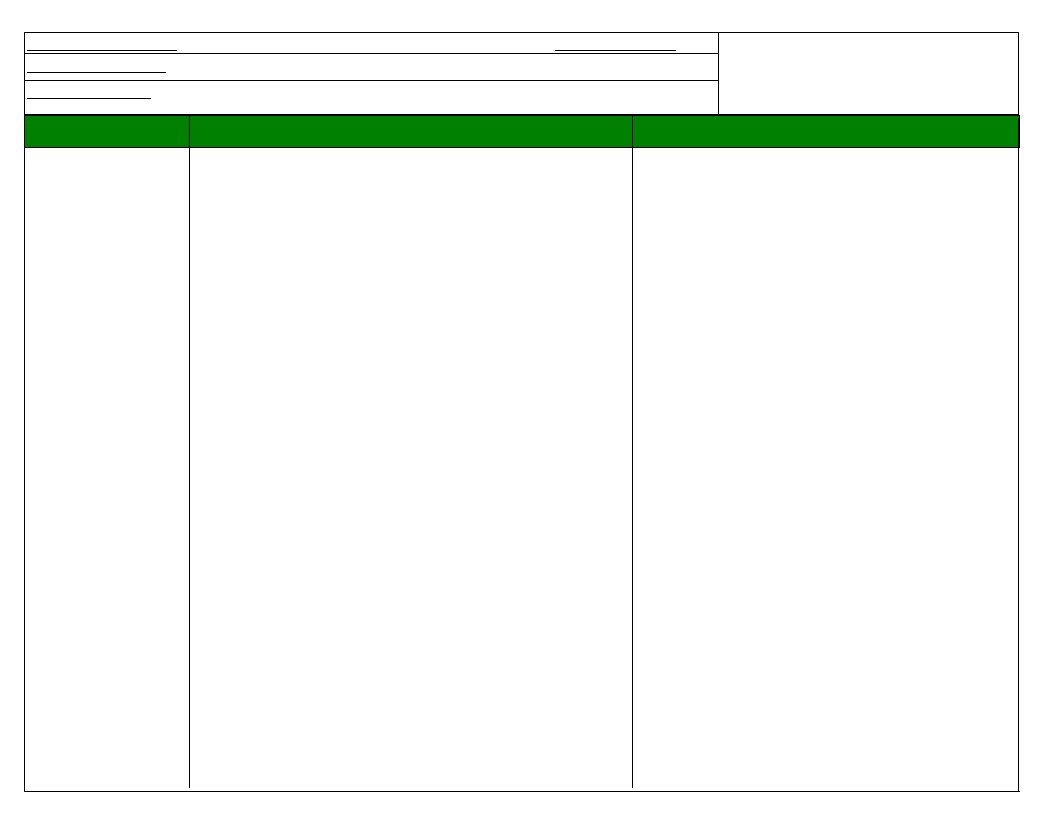
Emergency_Support_Function
Gender
ESF_National_Standards
Guidelines for Gender Mainstreaming in
Primary_Lead_Organization
Supporting_Organization
Wereda women and children office
Woreda Administration, Agriculture sectorial office ,WASH, Health and Education
Agriculture Sector (Ethiopia, 2011), Women,
girls, boys and man: different needs & equal
opportunities –Gender Handbook in Humanitarian
Hazard [It can be for any
hazard or can be specific]
Preparedness
(Actions that should be done in advance, before the disaster occurs to
Action- (Inter-Agency Standing Committee,
2006), BasReelisnpeonAssese/sEsamrleynRteocnovGeerynder in
(Actions that should be done once the disaster occurs to respond
Humanitarian Action (Ethiopia, 2011)
the specific needs for women and girls for likely scenarios
- Ensure women participation in the response planning and
- Assure the inclusion of woman (eg. Focal point of Ministry of Women
implementation
Affairs) in preparedness meeting (from Disaster Prevention and
- To include gender issues in the sectorial historical records
Preparedness committee or others), needs assessment and promote
- AGRICULTURE (CROP)
balanced representation
- Sex- and age- disaggregated data are included for crop needs
- Prepare strategies to prevent, monitor and respond to gender-based
and for food insecurity
violence and sexual exploitation in case of a worst scenario
- Ensure equal access to agricultural inputs and credits for
- Ensure that sectorial planning formats, checklists and reports are
female and male farmers for early recovery
gender responsive
AGRICULTURE (LIVESTOCK)
- The focal points for gender have analyzed the sources for gender
- Ensure equal access to livestock inputs
humanitarian standards provided by the contingency planning guidelines
HEALTH
ESF MAINSTREAMING
- Sex- and age- disaggregated data are included for health
COORDINATION
needs
- Ensure that ESF mainstream gender issues
- Assure provision of sex-specific essential services for women
- Ensure women participation in the preparedness planning and
and men
implementation
- To include gender issues in the sectorial historical records
- Consider the critical role and needs of women and girls in every sector
- Provide Minimum Initial Service Packages (MISP) to have
AGRICULTURE (CROP)
access to priority sexual and reproductive health services,
- Assure that women have equal access to agricultural services
including GBV (Gender-based Violence) services
(extension services, )
- Distribute new emergency health kits for safe and clean
AGRICULTURE (LIVESTOCK)
deliveries and emergency obstetric care (UNFPA clean home
- Consider the critical role of women in livestock and plan management
delivery kits, UNICEF midwifery kits, UNICEF obstetric and
that enable them to part in the market and how disaster can affect
surgical kits), sanitary towels for woman, female and man
them
condoms, post-exposure prophylactic (PEP) kits where
HEALTH
necessary, emergency contraceptives and pregnancy tests.
- Analyze what and how different diseases affect women and men
- Include as possible balance women and men heath workers
- Work with media, civil society and partner agencies to raise health
- Train and mobilize tradition birth attendants
awareness
- Disseminate HIV/AIDS prevention messages with particular
- Prepare prevention messages for women and girls
focused in the more vulnerable people
NUTRITION
NUTRITION
- Analyze who are at most risk for nutrition problems
- Sex- and age- disaggregated data are included for nutrition
- Train health and nutrition workers on gender sensitive service delivery
needs
WASH
- Analyze if there are differences for women, girls, boys and
- Analysis relationship between water collection during emergencies and
men in terms of access to food and analyze reasons for
the drop out from the school
inequalities in malnutrition rates between women, girls, boys
- Analyze specific needs for women and girls during a likely disaster
and men
which affects water, sanitation and hygiene
- Ensure that vaccination programs and food supplementation
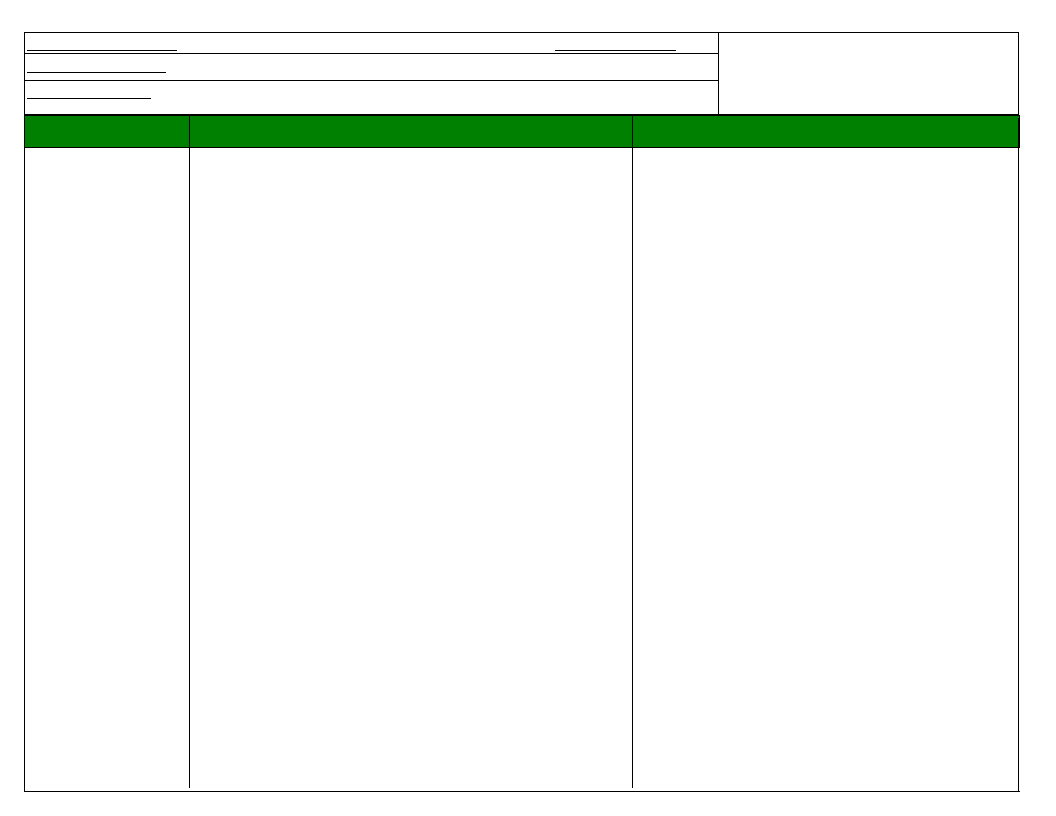
Emergency_Support_Function
Gender
ESF_National_Standards
Guidelines for Gender Mainstreaming in
Primary_Lead_Organization
Supporting_Organization
Wereda women and children office
Woreda Administration, Agriculture sectorial office ,WASH, Health and Education
Agriculture Sector (Ethiopia, 2011), Women,
girls, boys and man: different needs & equal
opportunities –Gender Handbook in Humanitarian
Hazard [It can be for any
hazard or can be specific]
Preparedness
(Actions that should be done in advance, before the disaster occurs to
Action- (Inter-Agency Standing Committee,
2006), BasReelisnpeonAssese/sEsamrleynRteocnovGeerynder in
(Actions that should be done once the disaster occurs to respond
Humanitarian Action (Ethiopia, 2011)
EDUCATION
reach women, girls, boys and men
- Assure understanding of the causes of girls drop out
WASH
- Create awareness in the communities to the importance of girls and
- Sex- and age- disaggregated data are included for wash
women’ access to education, especially in emergencies
needs
- Include Disaster Risk Management issues in the school CV
- Provide Safe location for toilets
FOOD
EDUCATION
- Identify sectors of population (women, girls, boys and men) most at
- Sex- and age- disaggregated data are included for education
risk of food insecurity
needs and drop out
- Assess the local cultural practices for women and men for food aid
- Provide adequate message to girls in a gender-sensitive
programs (cultural/religion and restrictions/preferences)
manner for topics such as HIV/ADIS and STI (Sexual
- Identify future food distribution points which reduce the women’s and
Transmitted Infections, early pregnancy, child and baby care,
children’s time getting to, and to avoid crowds and long waiting time,
healthy menstruation management and GBV (Gender Based
timely distribution
Violence))
- ‘Safe spaces’ are created at the distribution points and ‘safe passages’
- Monitor possible sexual harassment in the schools during
schedules created for women and children heads of households
emergencies
- Extend gender responsive capacity-building program for
- Assure girls involved in child/youth participation activities
community-based organizations in areas with special focus given to
during emergencies
women’s organizations in areas of chronic food insecurity
FOOD
- NFI
- Sex- and age- disaggregated data are included for food needs
- Assess the local cultural practices for women and men for non-food
and food insecurity
items programs (cultural/religion and restrictions/preferences)
- Take into account the specific food needs of women, girls,
SHELTER
men and disable (quantity, quality and nutritional aspects) for
- Identify possible location without risk of abuse, violence, sexual
food delivery and distribution
harassments…
- Provide support specially to woman for food transport and
- Adequate shelter construction for different needs of women, girls,
delivery
boys and men
- Assure equal access to the local market, food aid services,
COMMUNICATIONS
cash and food-for-work opportunities for women and men
- Train media experts on gender awareness and gender issues during
- Assure that food is available, accessible and usable by all
emergencies
members of the household/community/population
LIVELIHOODS
- Make sure that planning, implementation, monitoring and
- Assure that women have guaranteed equal right to training and
evaluation phases of food security programs to be gender
education to increase their technical proficiency and the right to access
responsive
credit an loans
- Make sure that public works projects of food security
REFUGEES
programs are able to reduce regular workloads of women in
- Assure understanding of the specific risks factors faced by women ,
program implementation areas
girls, boys and men in camping settings and Ensure adequate security in
- Identify special needs for food insecurity in female headed
high-risk areas for women and girls
households
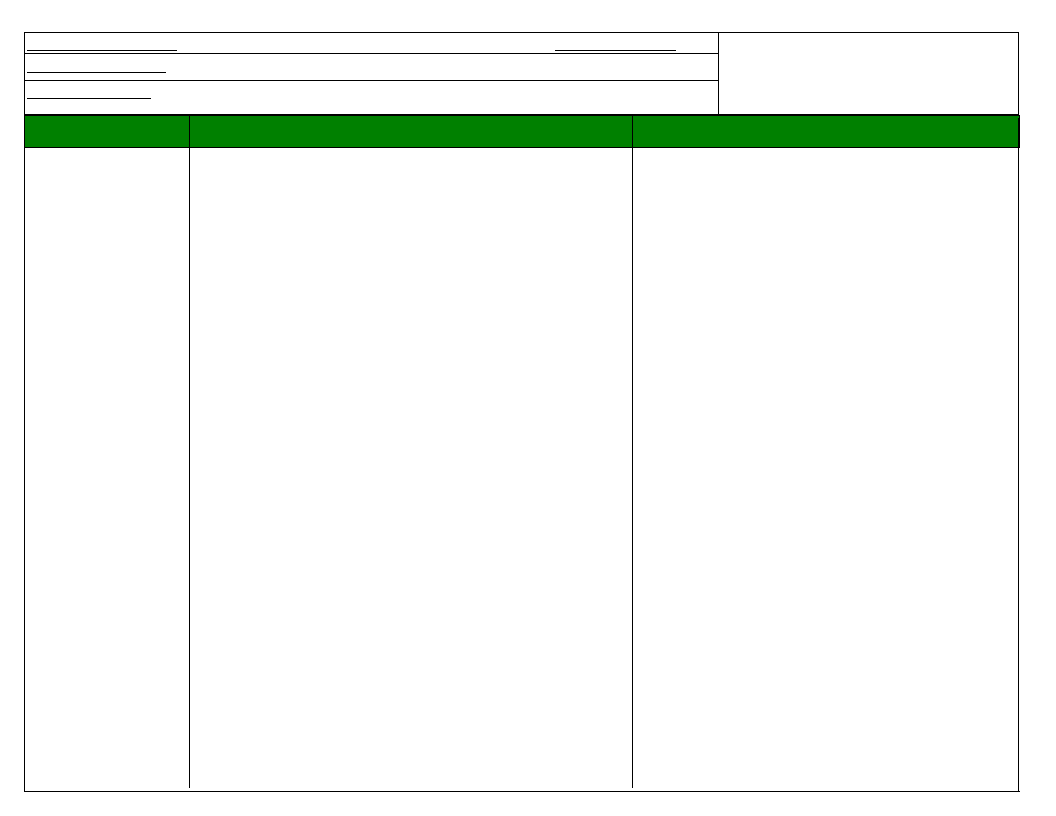
Emergency_Support_Function
Gender
ESF_National_Standards
Guidelines for Gender Mainstreaming in
Primary_Lead_Organization
Supporting_Organization
Wereda women and children office
Woreda Administration, Agriculture sectorial office ,WASH, Health and Education
Agriculture Sector (Ethiopia, 2011), Women,
girls, boys and man: different needs & equal
opportunities –Gender Handbook in Humanitarian
Hazard [It can be for any
hazard or can be specific]
Preparedness
(Actions that should be done in advance, before the disaster occurs to
Action- (Inter-Agency Standing Committee,
2006), BasReelisnpeonAssese/sEsamrleynRteocnovGeerynder in
(Actions that should be done once the disaster occurs to respond
Humanitarian Action (Ethiopia, 2011)
NFI
- Sex- and age- disaggregated data are included for NFI needs
- Distribute NFIs according the cultural/religion
practices/background and climatic conditions in relation to
women addressing their hygiene and sanitary needs (especially
menstruation period), livelihoods, daily practices, clothes,
cooking items.
- Involve women in planning distribution
SHELTER
- Sex- and age- disaggregated data are included for shelter
needs
- Basic services are easily available
- Easy access to Sanitation facilities with adequate privacy for
women and girls
COMMUNICATIONS
- Disseminate gender sensitive messages
LIVELIHOODS
- Sex- and age- disaggregated data are included for livelihood
needs
- Assure equal access for women and men for: non-formal
education, vocational training and skills training programs,
income generation activities and food-for-work programs,
apprenticeship placement projects, micro-credit schemes,
agriculture programs, business start programs, seeds and tools
projects, animal disbursement projects and self-employment
and job placement programs.
- Involve women and men in planning and implementation all
livelihood programs and design programs based on an
assessment of women’s and men’s knowledge, skills and
livelihoods needs
REFUGEES
- Sex- and age- disaggregated data are included for refuge
needs, registrations…
- Ensure that woman participate directly in decision-making on
the governance of the camp
- Ensure the effective delivery and provision of services and
assistance for the specific needs of women and girls
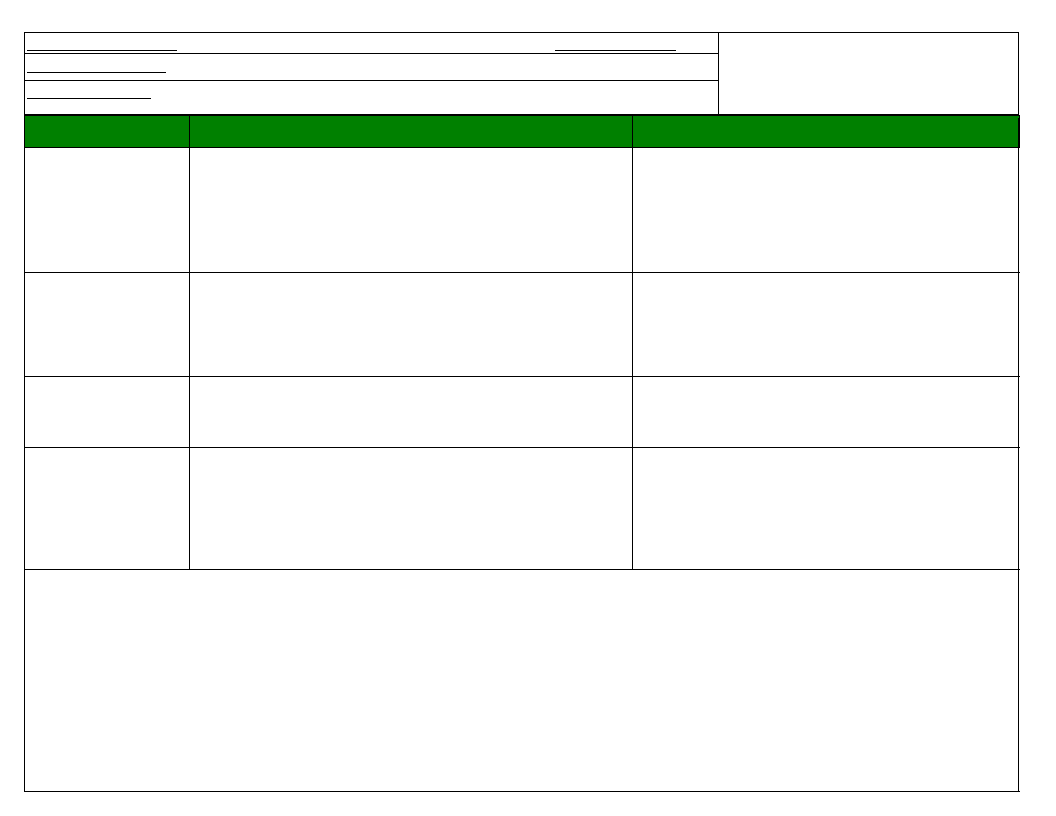
Emergency_Support_Function
Gender
ESF_National_Standards
Guidelines for Gender Mainstreaming in
Primary_Lead_Organization
Supporting_Organization
Wereda women and children office
Woreda Administration, Agriculture sectorial office ,WASH, Health and Education
Agriculture Sector (Ethiopia, 2011), Women,
girls, boys and man: different needs & equal
opportunities –Gender Handbook in Humanitarian
Hazard [It can be for any
hazard or can be specific]
Preparedness
(Actions that should be done in advance, before the disaster occurs to
Action- (Inter-Agency Standing Committee,
2006), BasReelisnpeonAssese/sEsamrleynRteocnovGeerynder in
(Actions that should be done once the disaster occurs to respond
Humanitarian Action (Ethiopia, 2011)
RECOVERY
- Phase out plan for emergency programs as recovery activities
increase
- Determine the need for recovery or rehabilitation and
disseminate those needs to partners
- Request Regional/Zonal government assistance for early
recovery when additional resources may be needed
Drought
- Assess and prepare sex and age disaggregated data for identifying the
needy
- Training and assign for specific staff for emergency response
- Participate in selection of vulnerable groups among the needy
- Prepare contingency plan that considers the most vulnerable groups
- Participate in emergency response to ensure gender equity
- Monitor and follow up for equitable distribution of allocated
resources
- Ensure that the response are gender sensitive
- Monitor and evaluate the level of response for specific
disaster
Crop pest and crop
disease
- Cooperate with other sectors to mainstream gender issue in their
contingency plan.
- Analyze how Crop pest will affect women and men differently
- Ensure that gender is mainstreamed in emergency plan of ESF
- Involve women’s in crop pest and disease related response
- Ensure that the response are gender sensitive
Crop pest and crop
disease
- Collect, analyze and monitor gender data
- Train specific staff for gender issues
- Review the sectorial gender historical data
- Empower women on how to protect Livestock disease and its
transmission to human being
- Analyze specific needs for women and girls during livestock disease
occur
- Ensure that priority is given to vulnerable women, children
during intervention
- Provide appropriate response for affected men and women
- Give special care for most vulnerable groups during response




